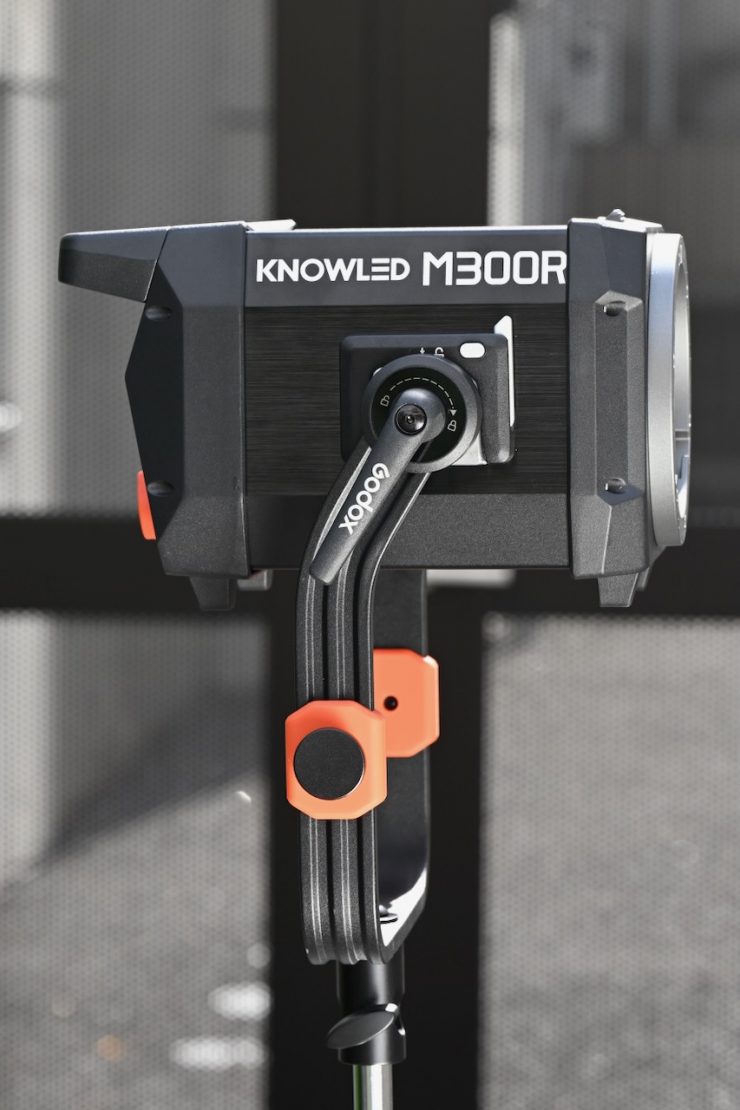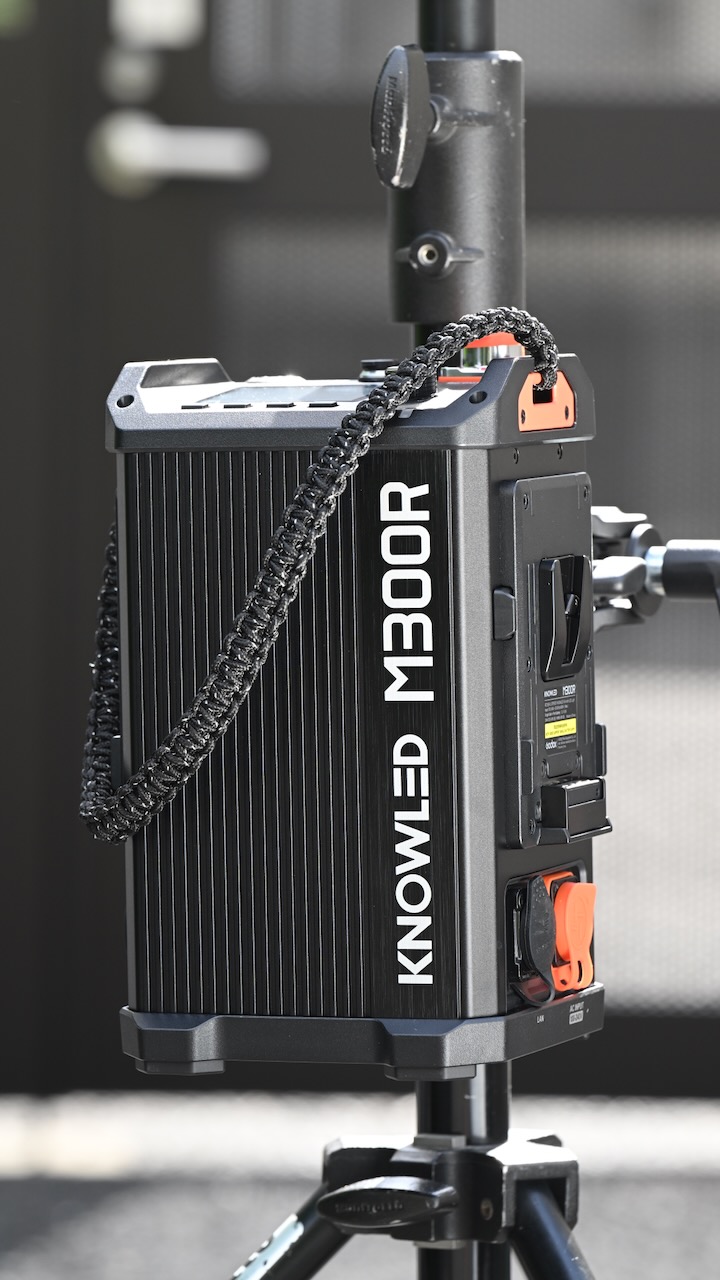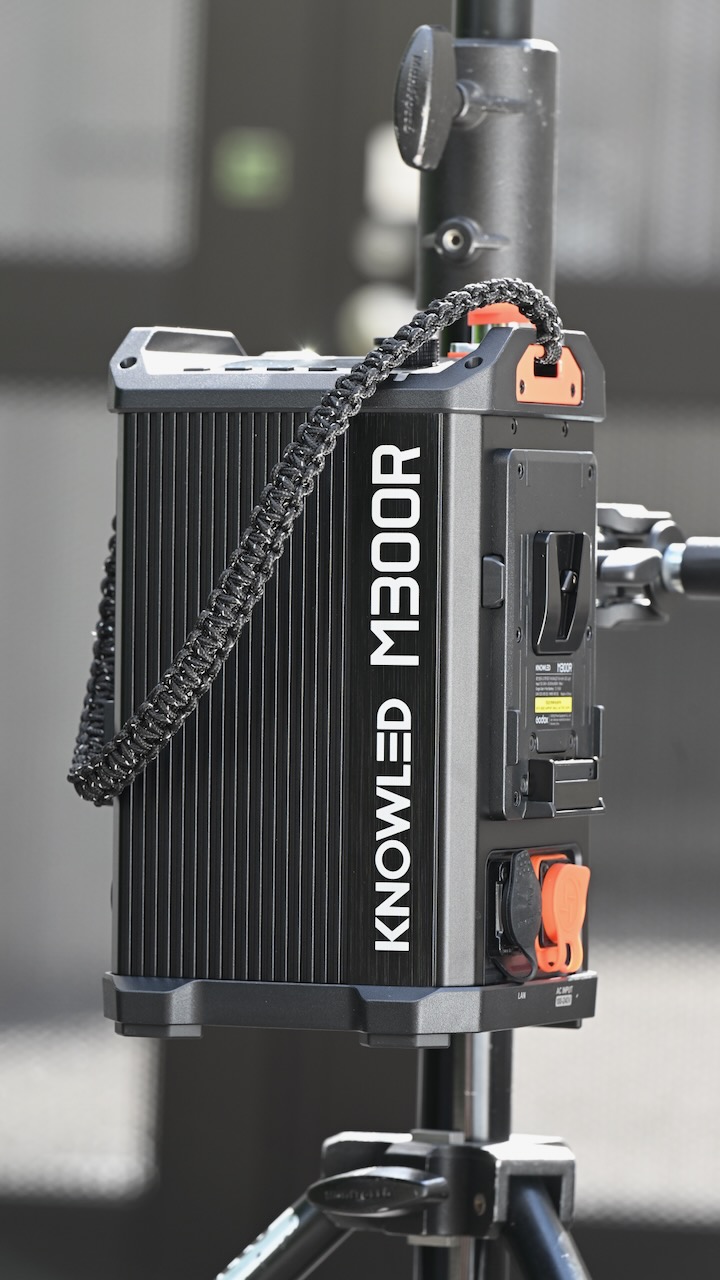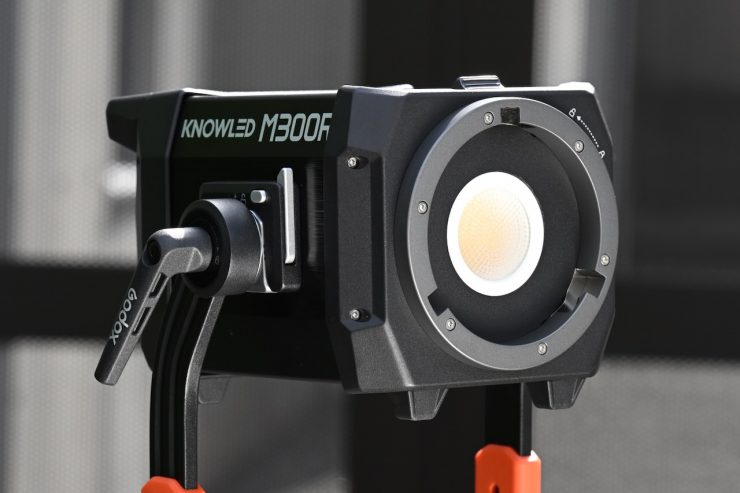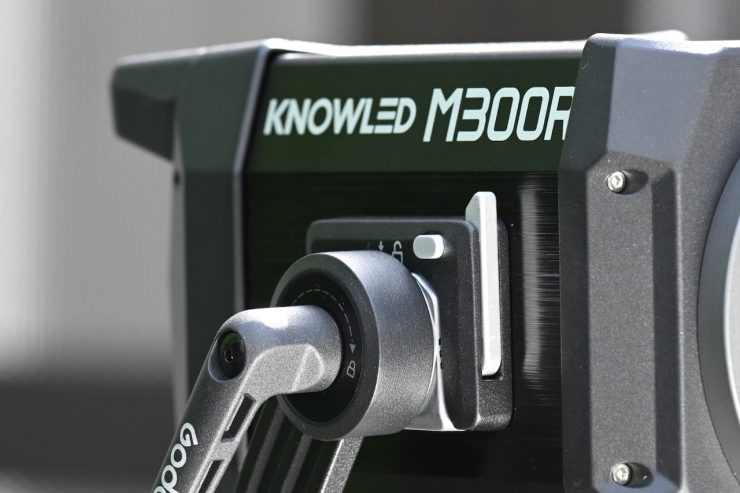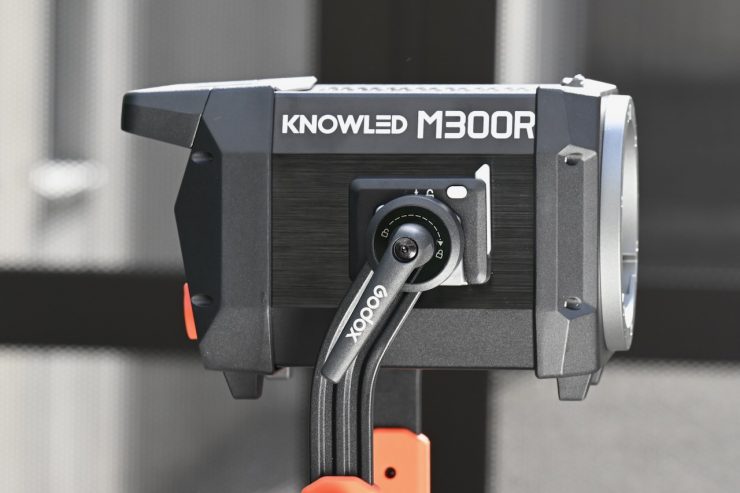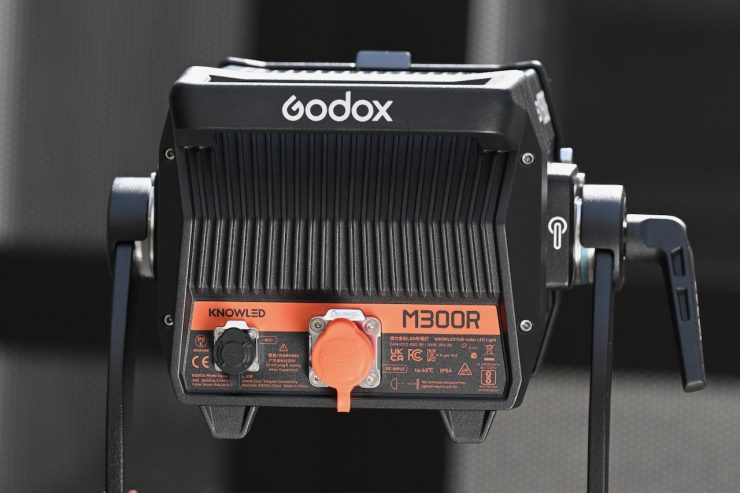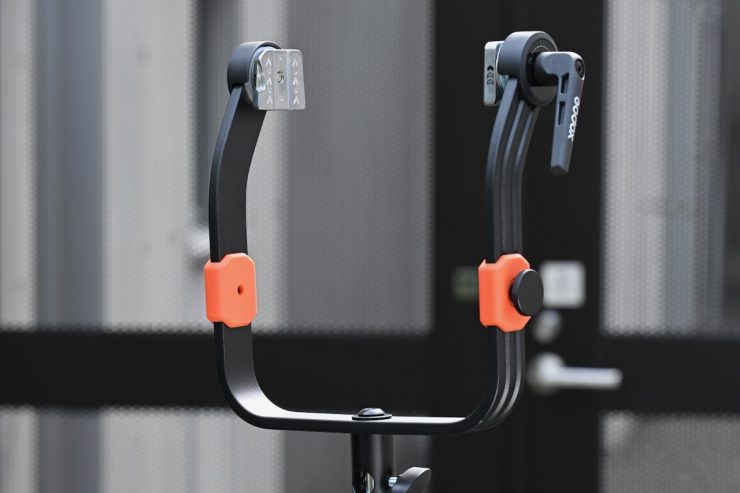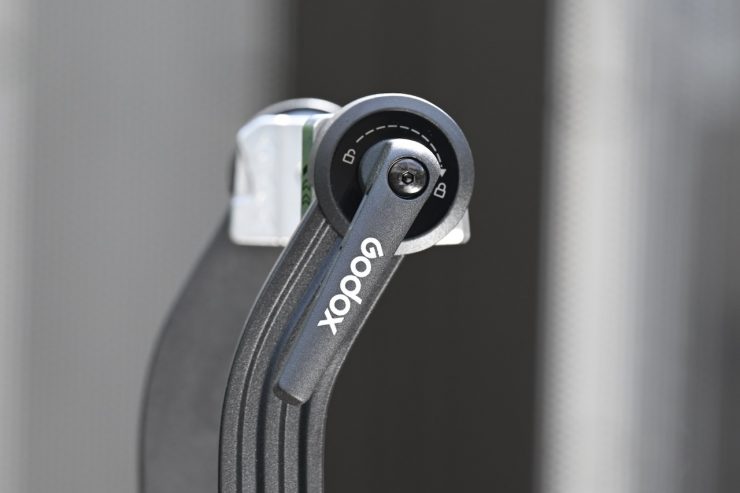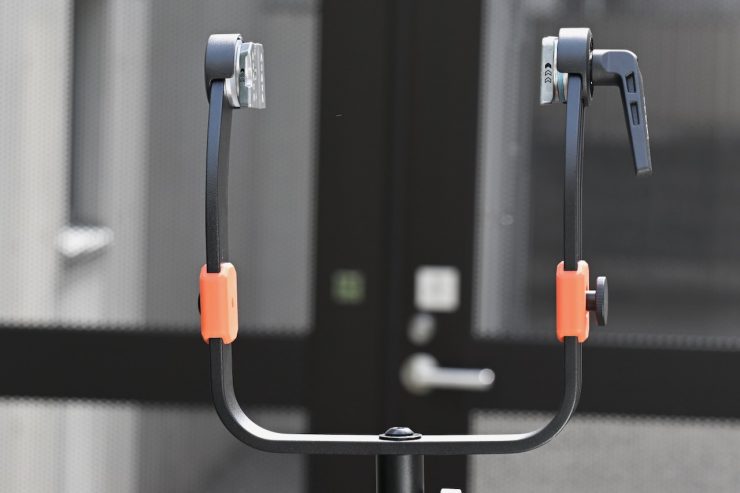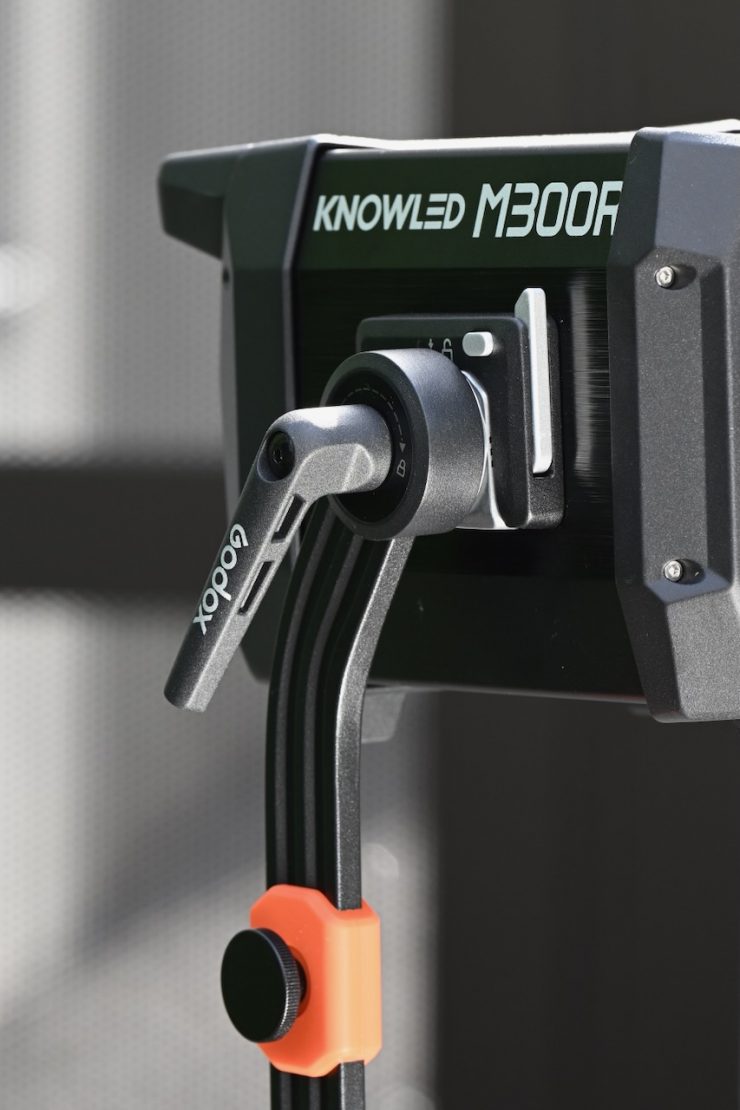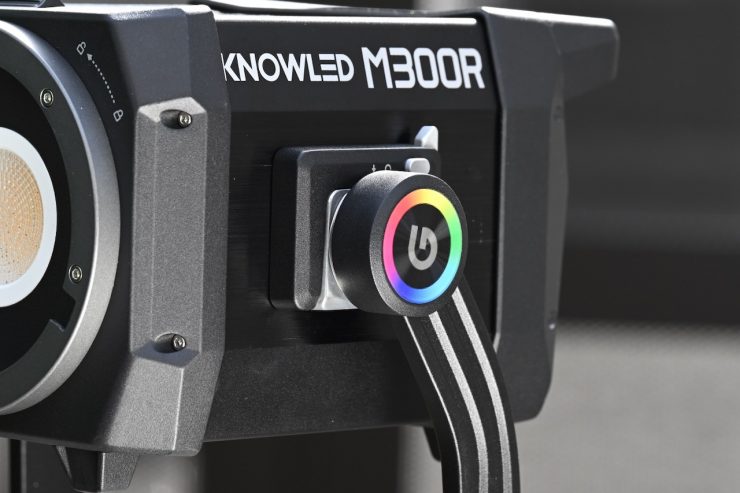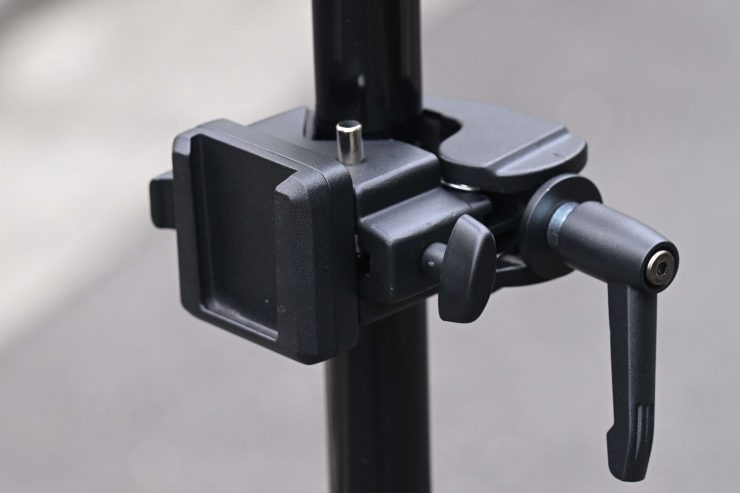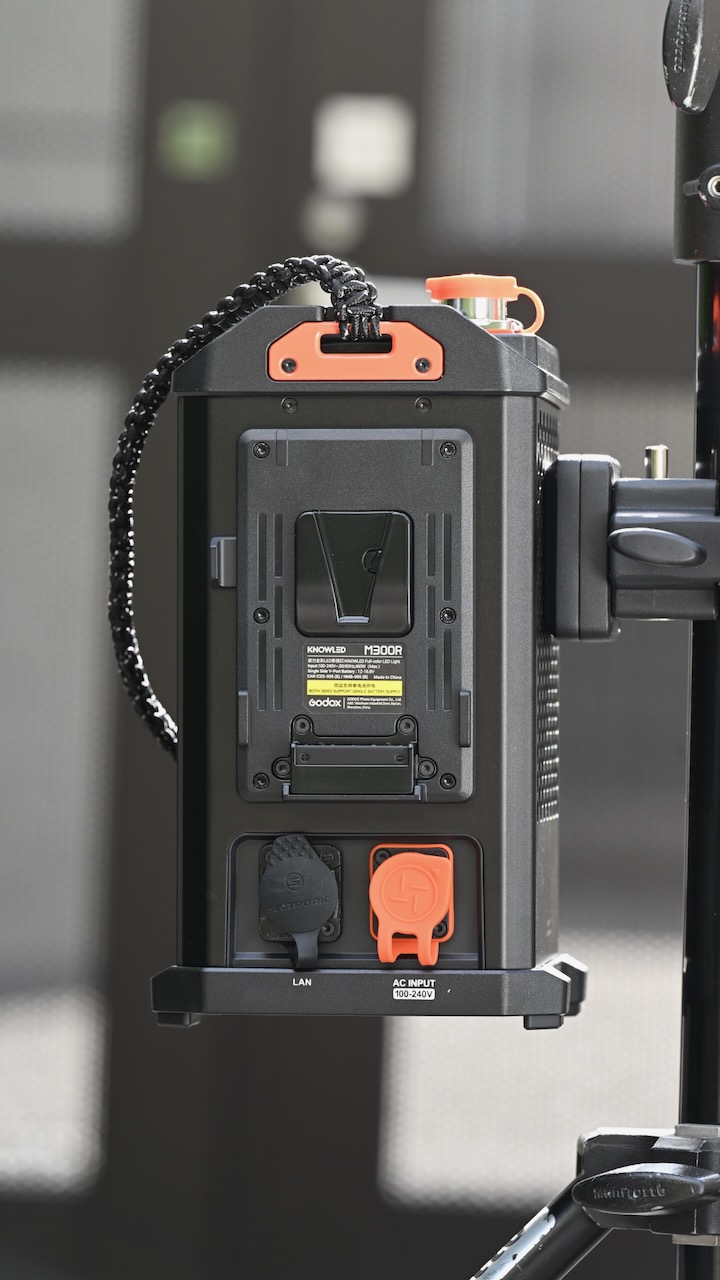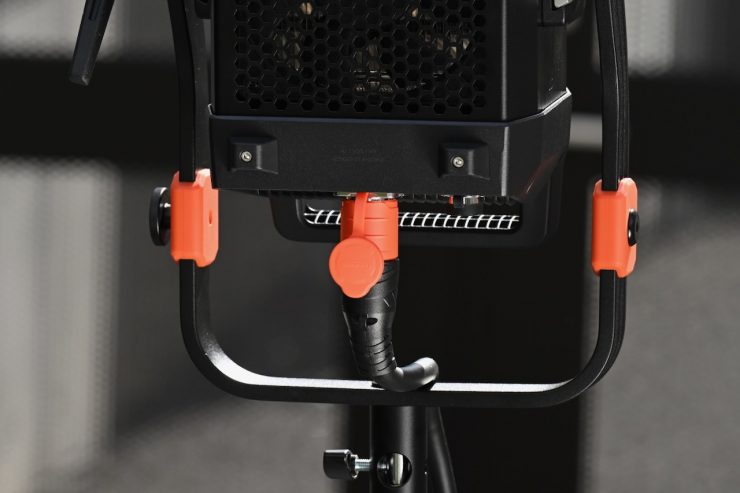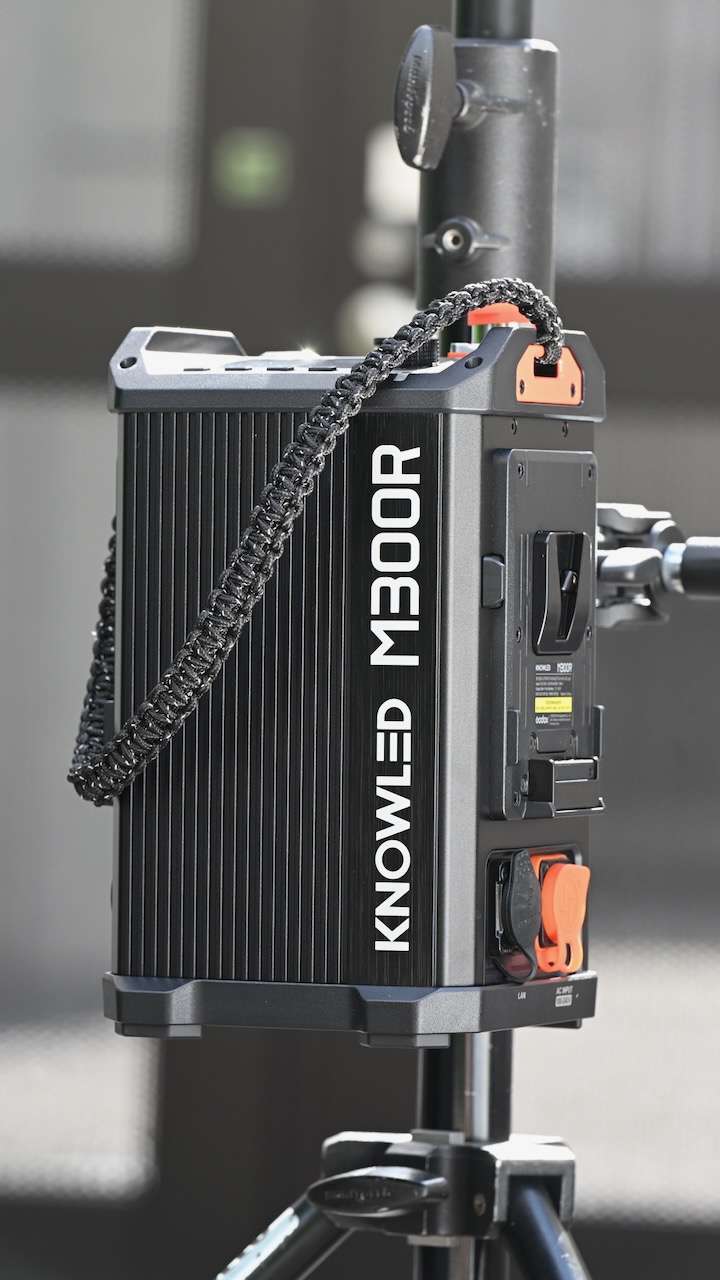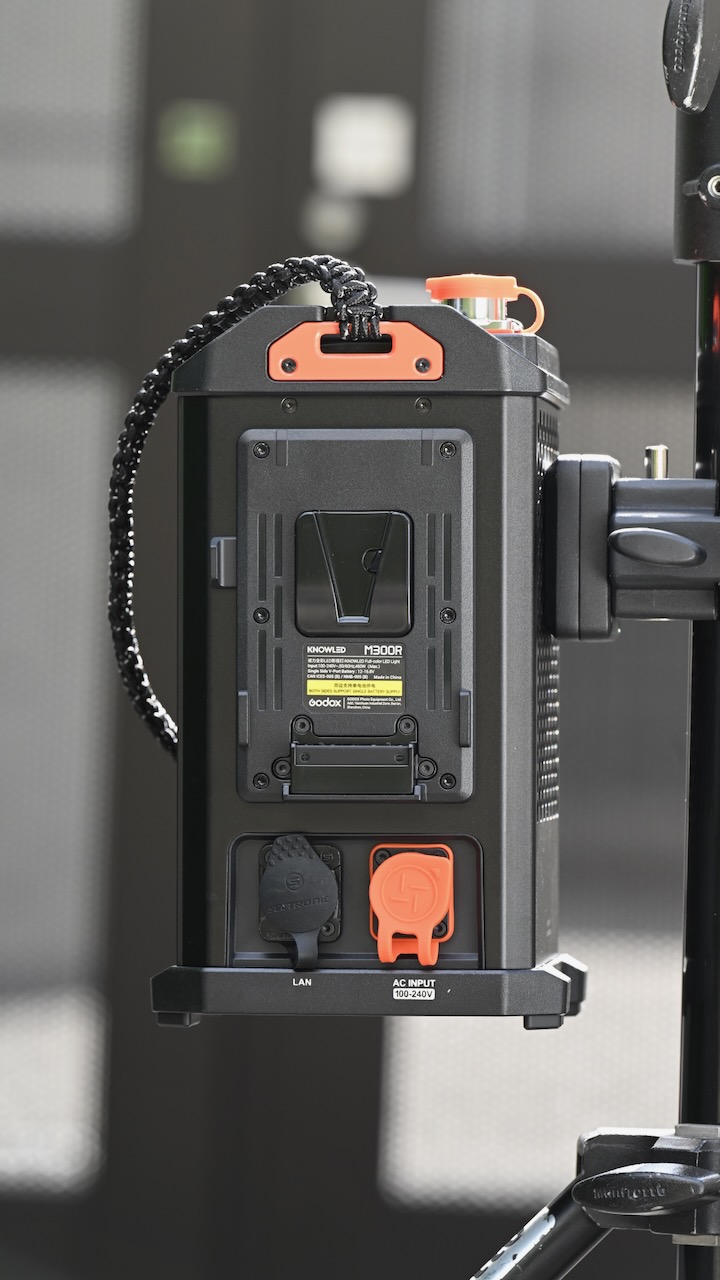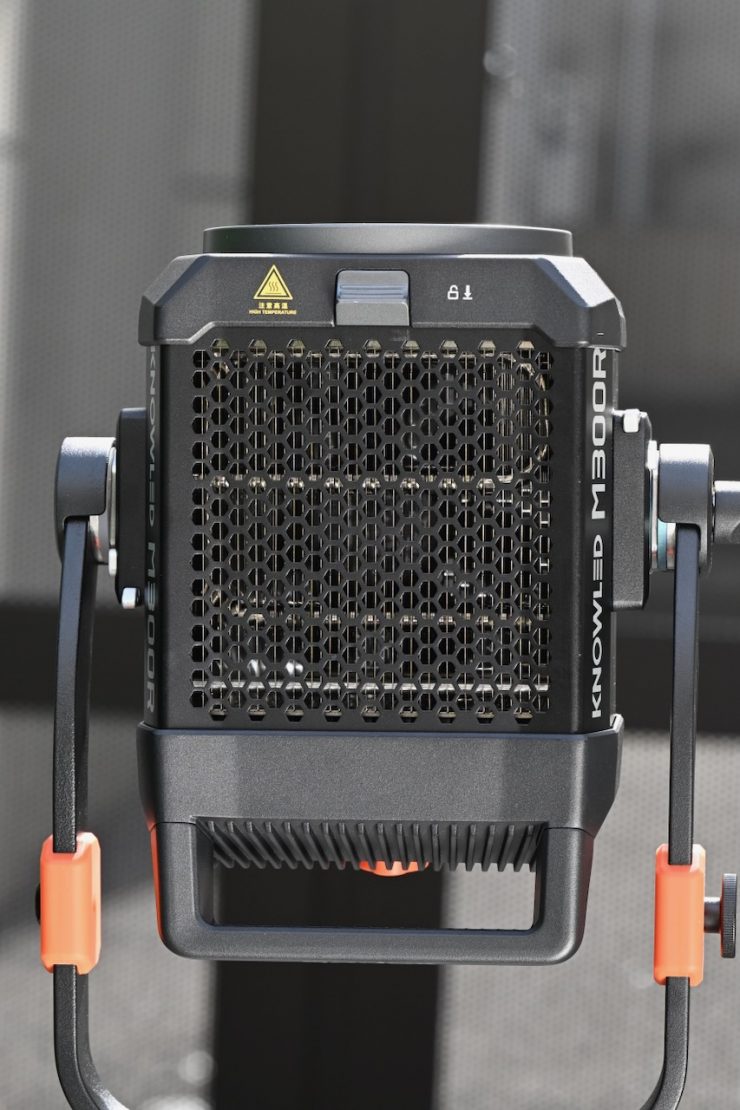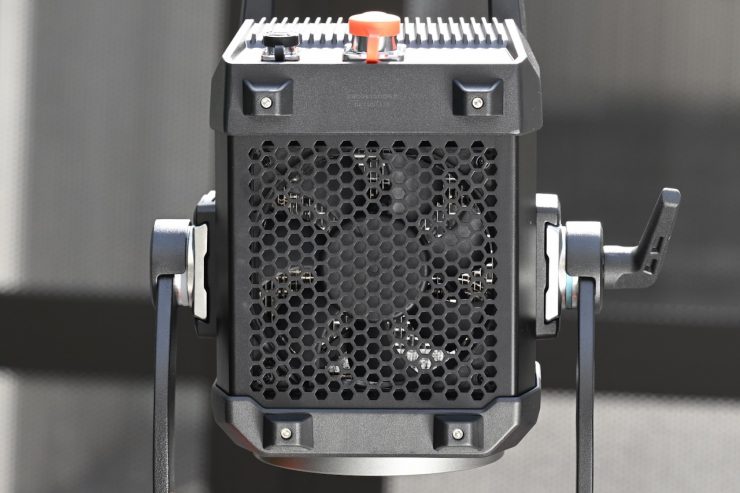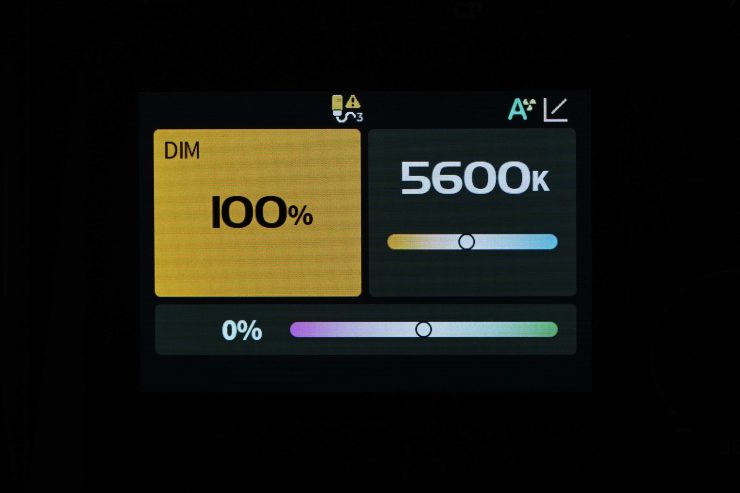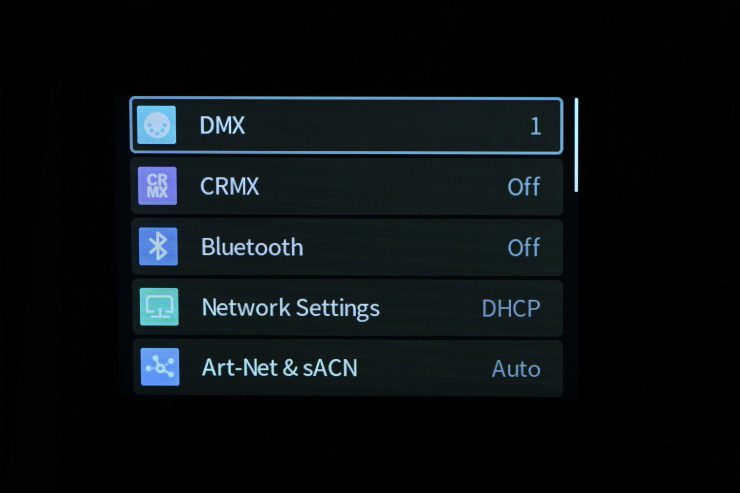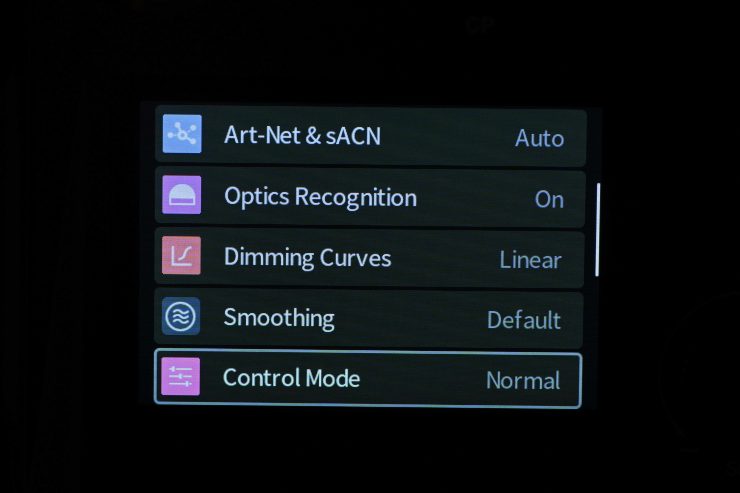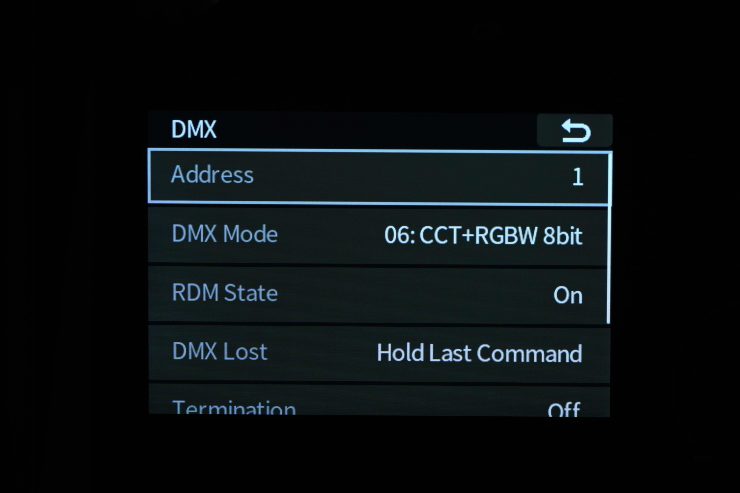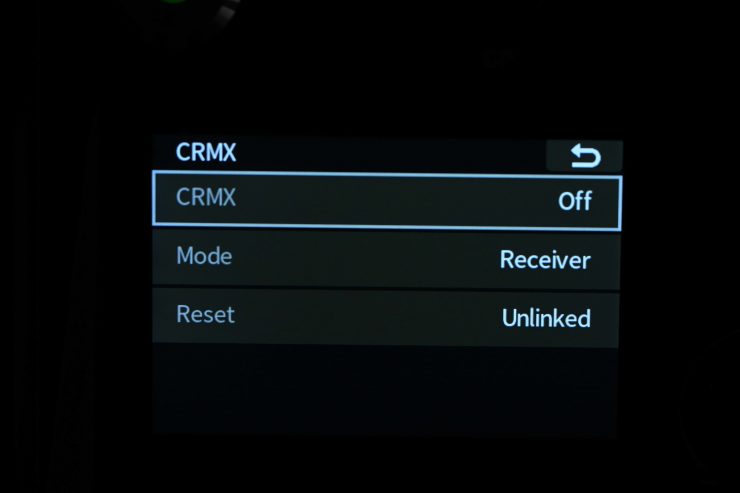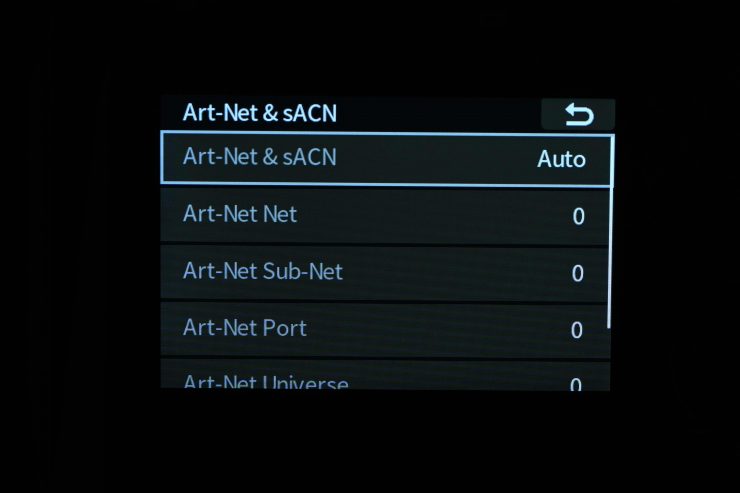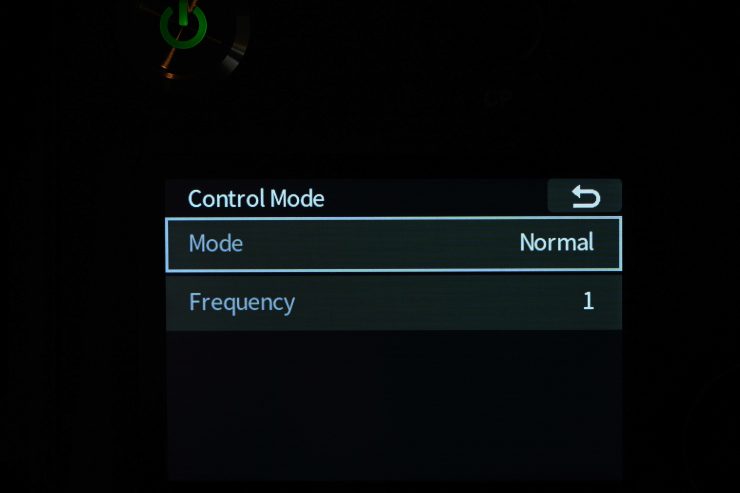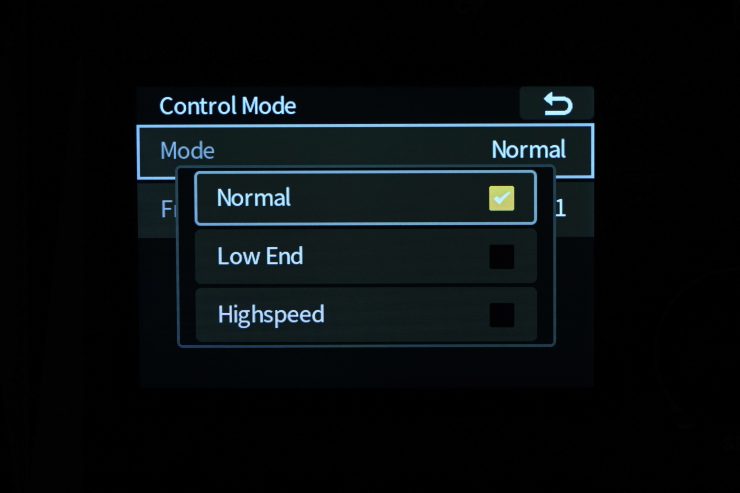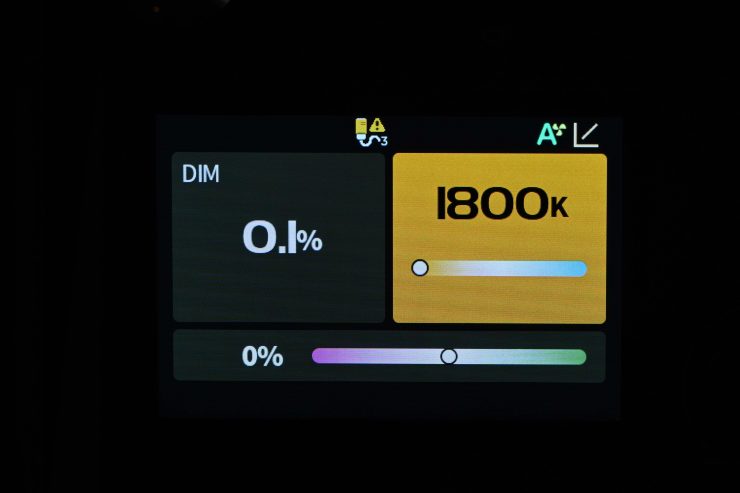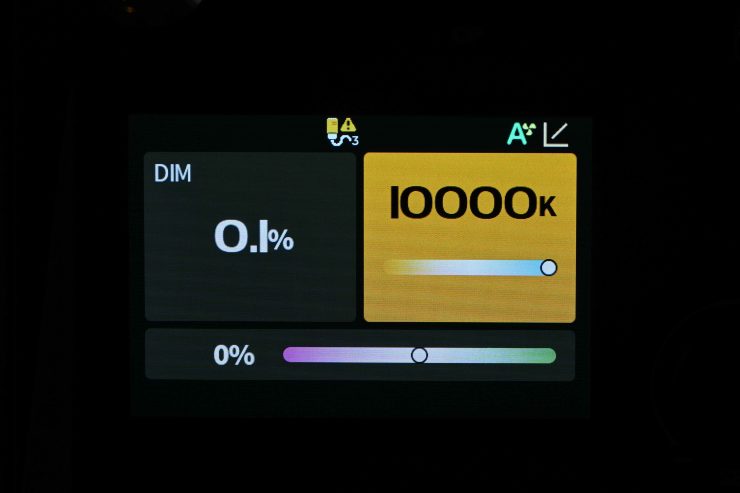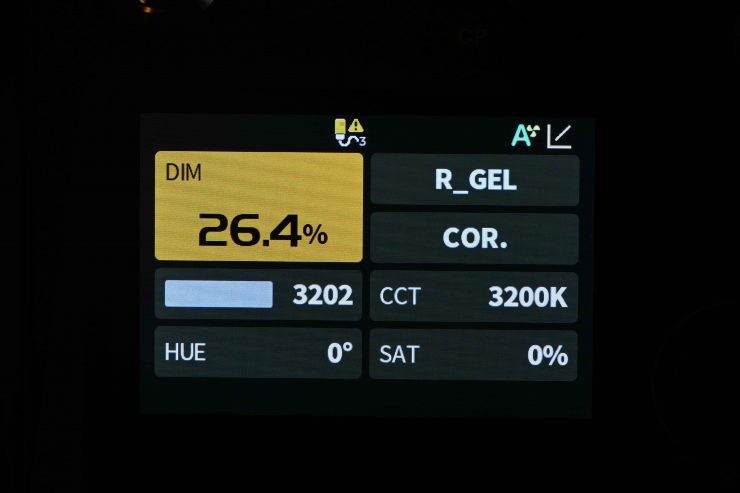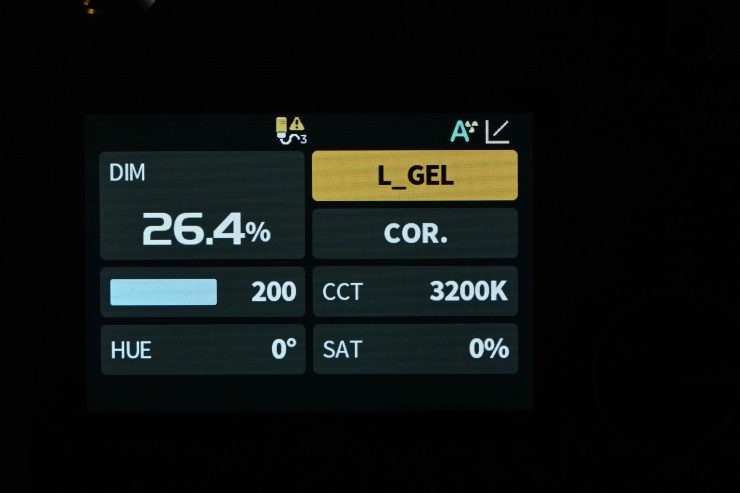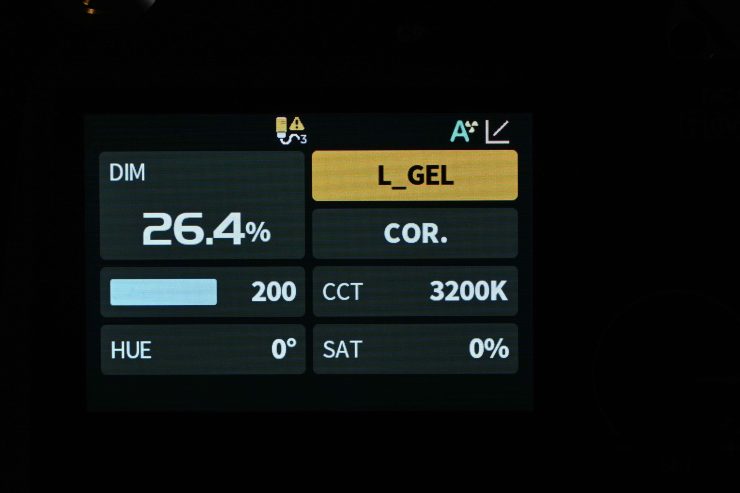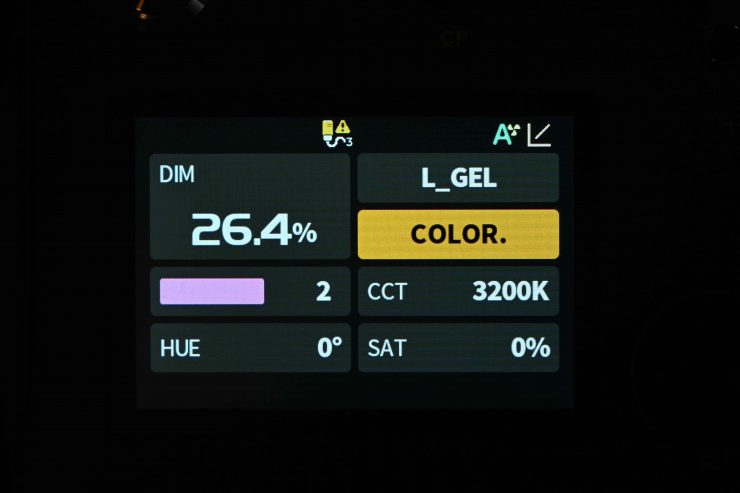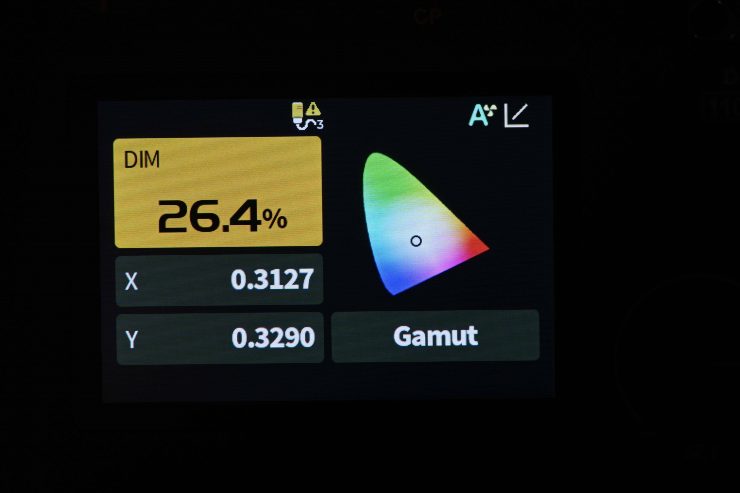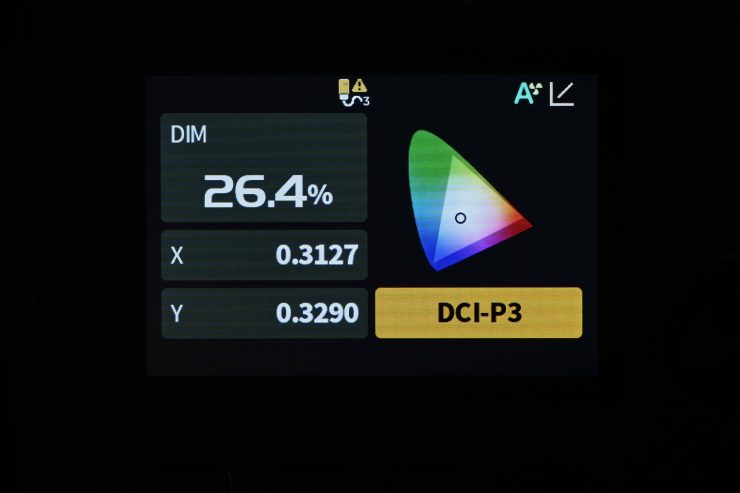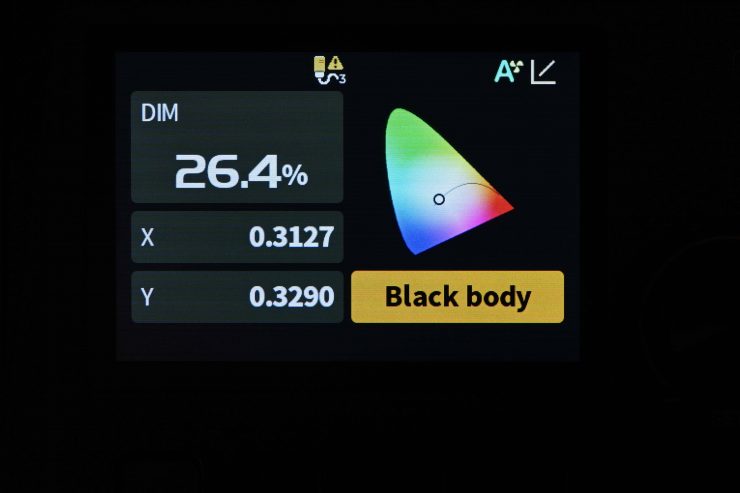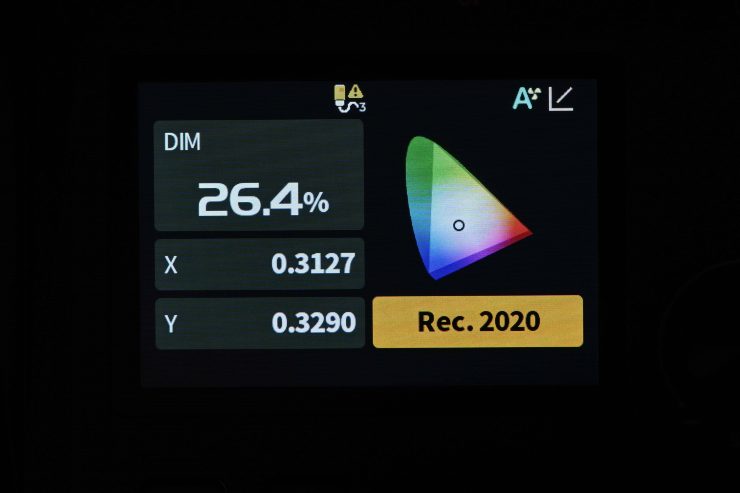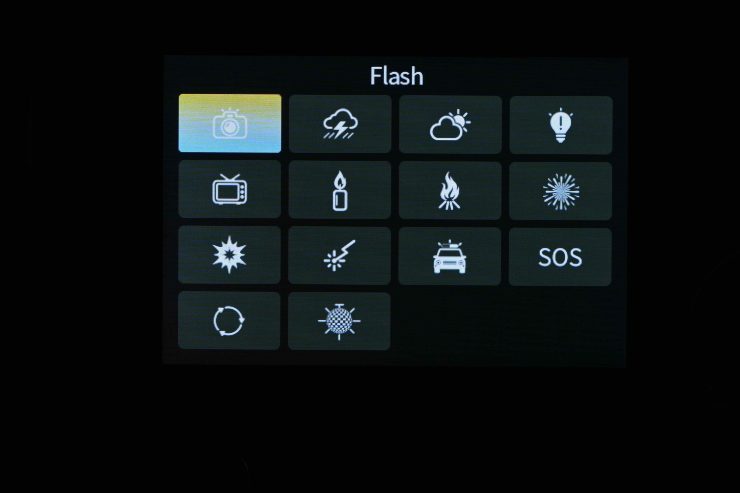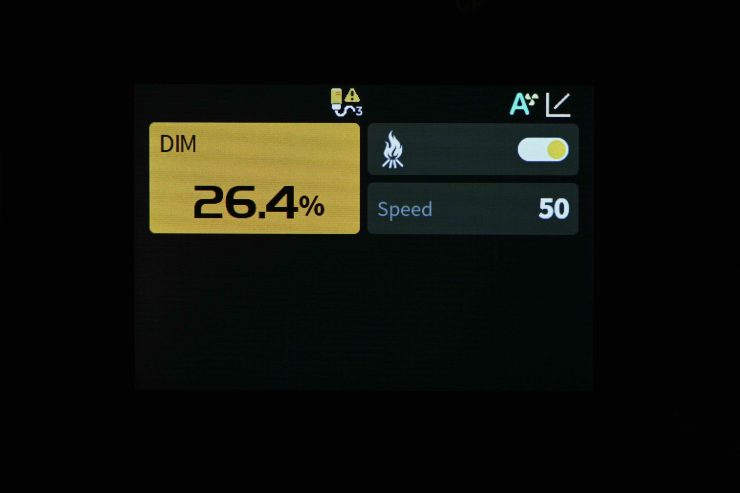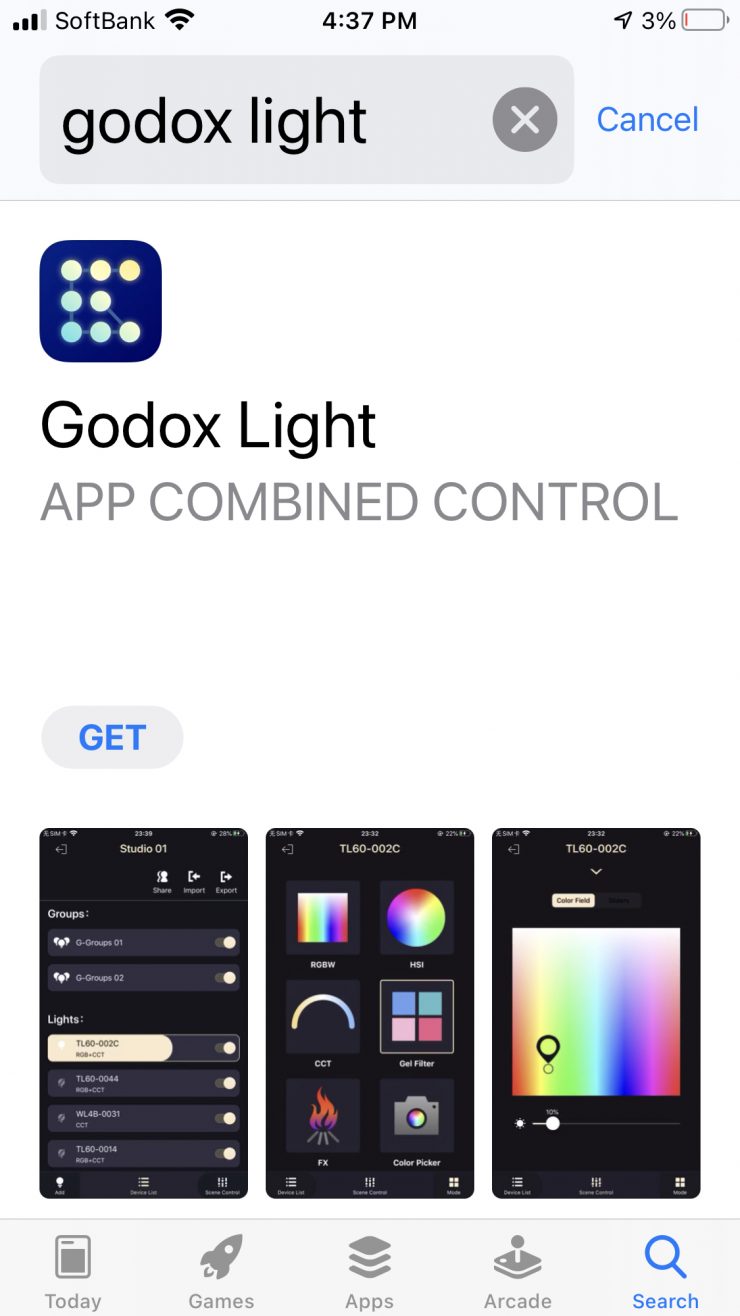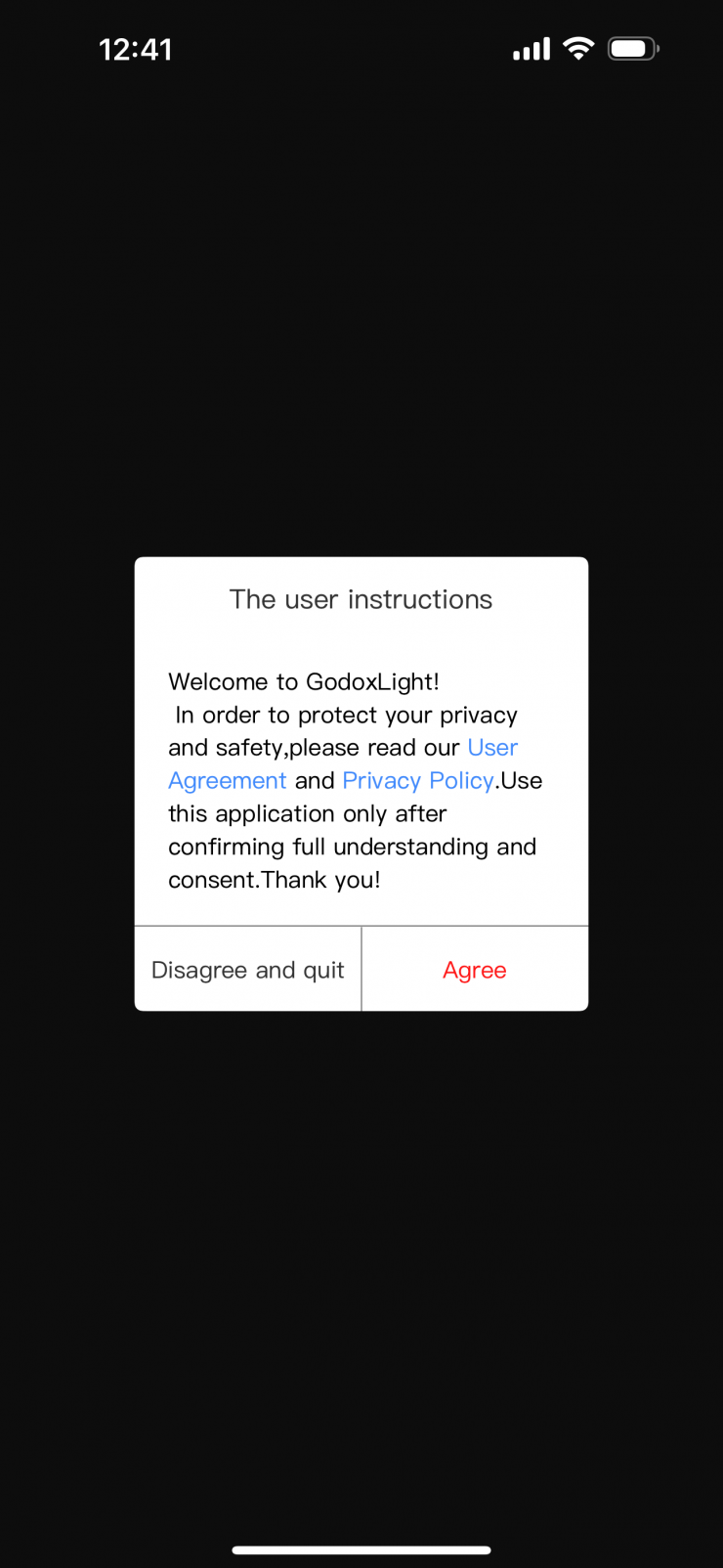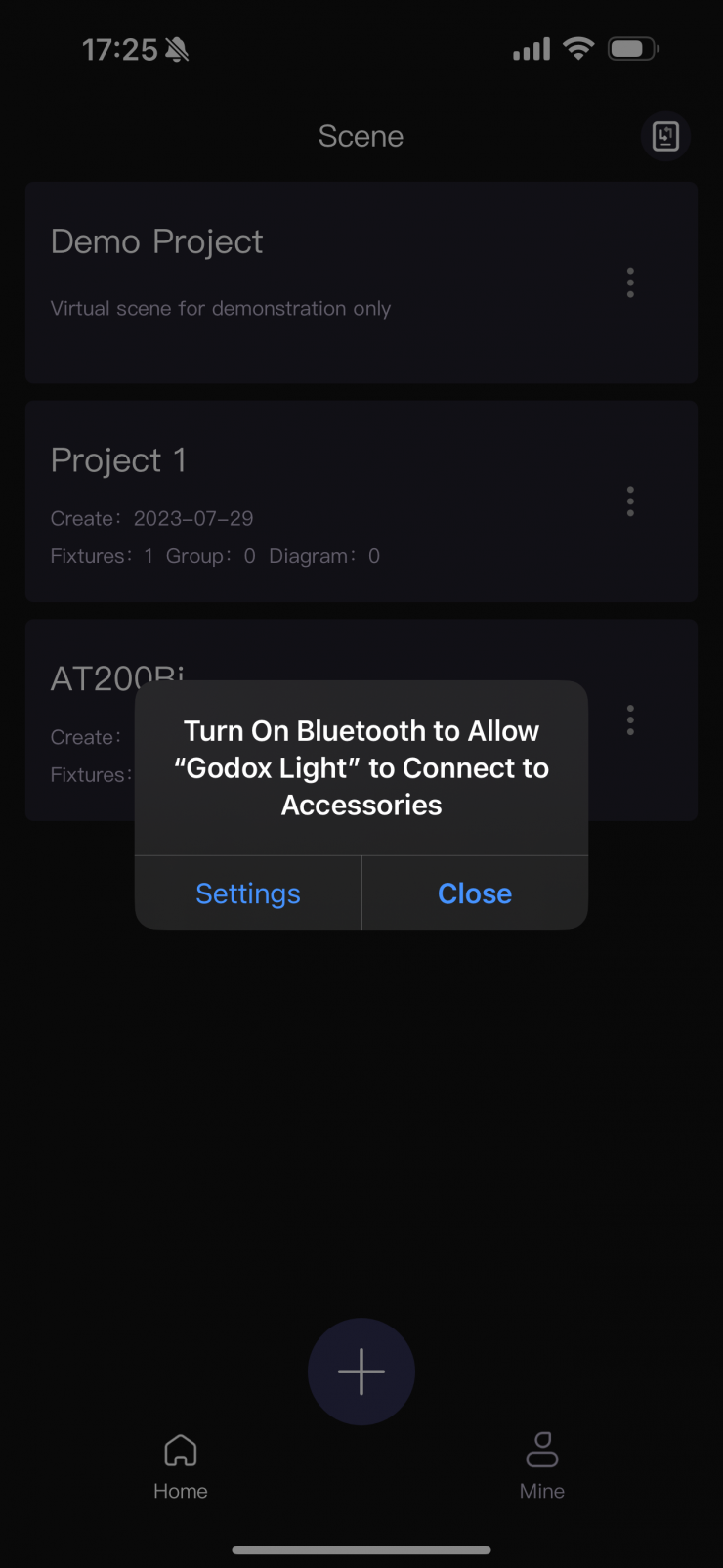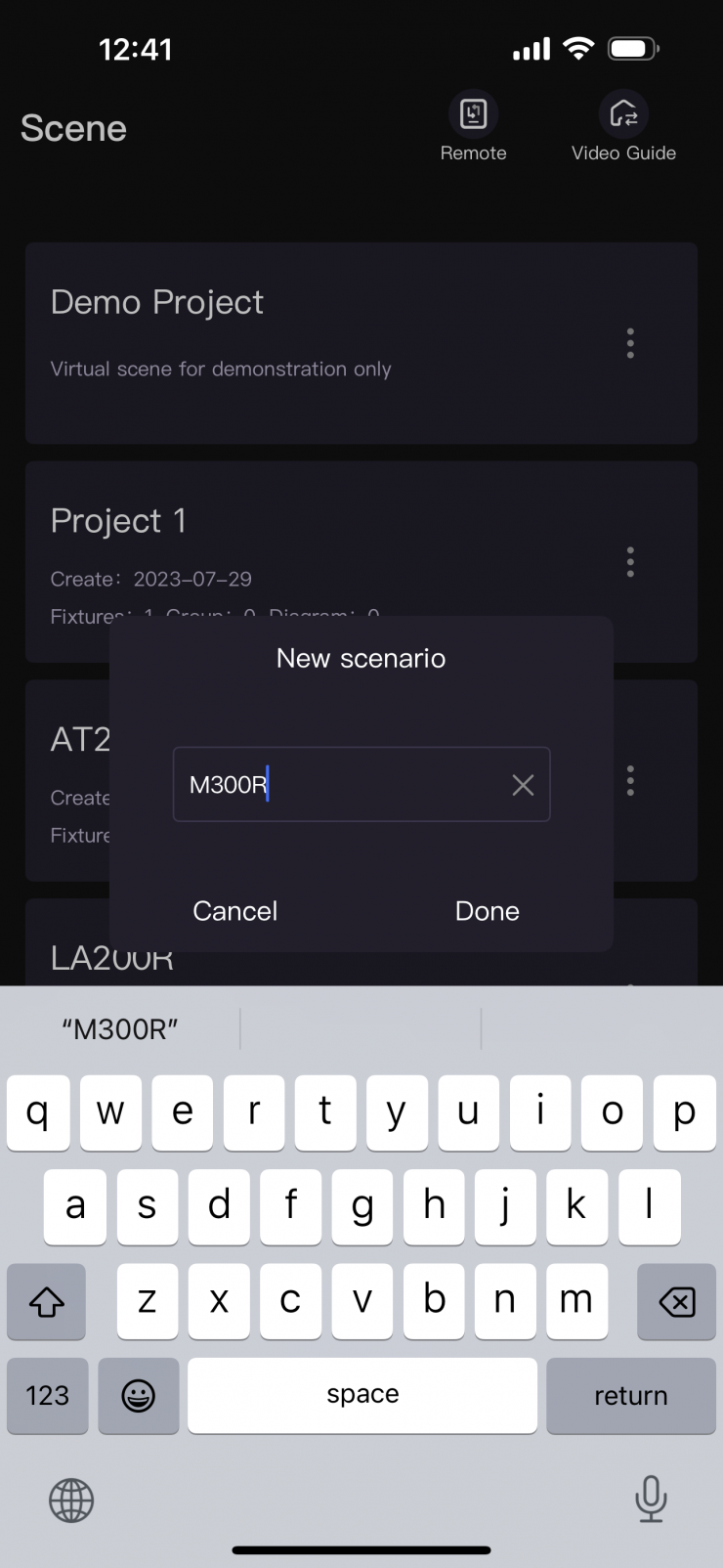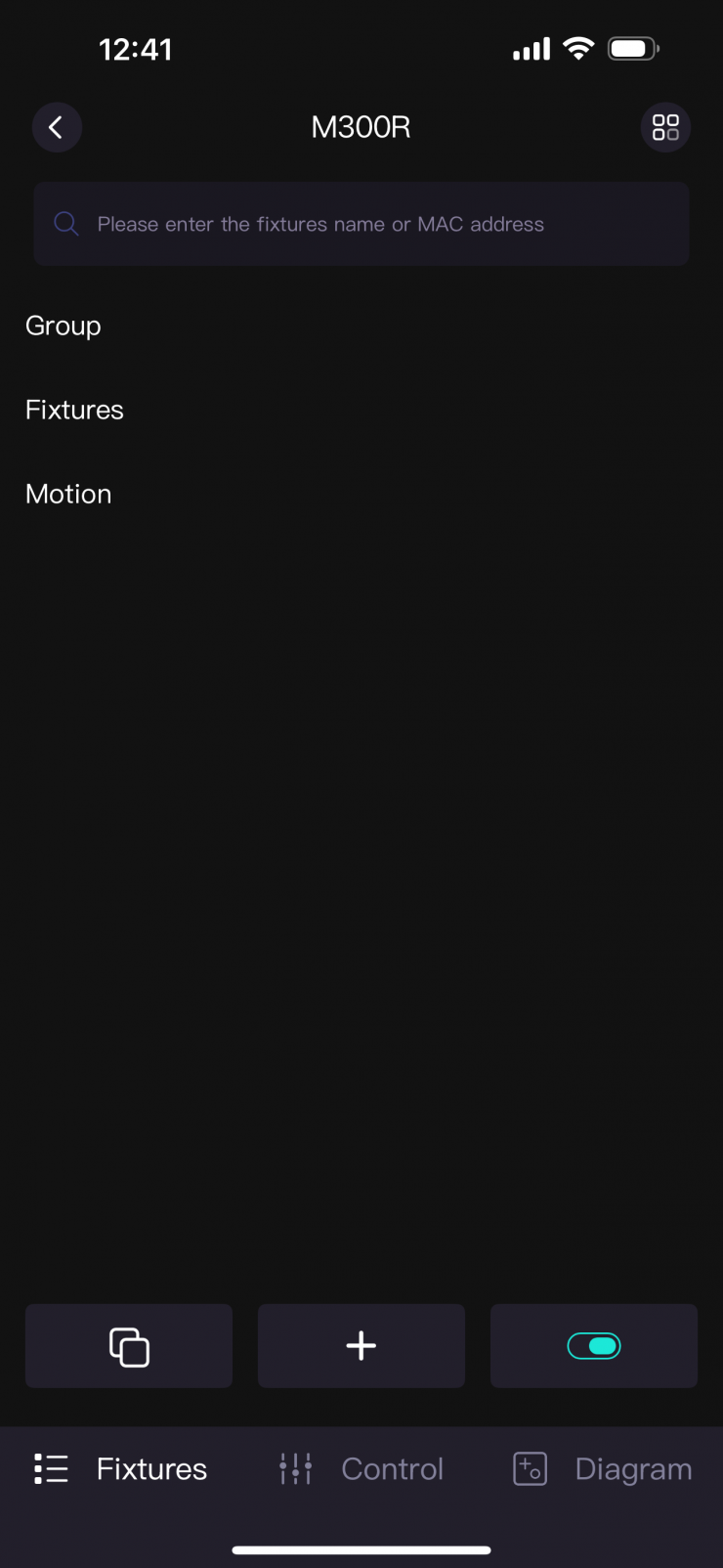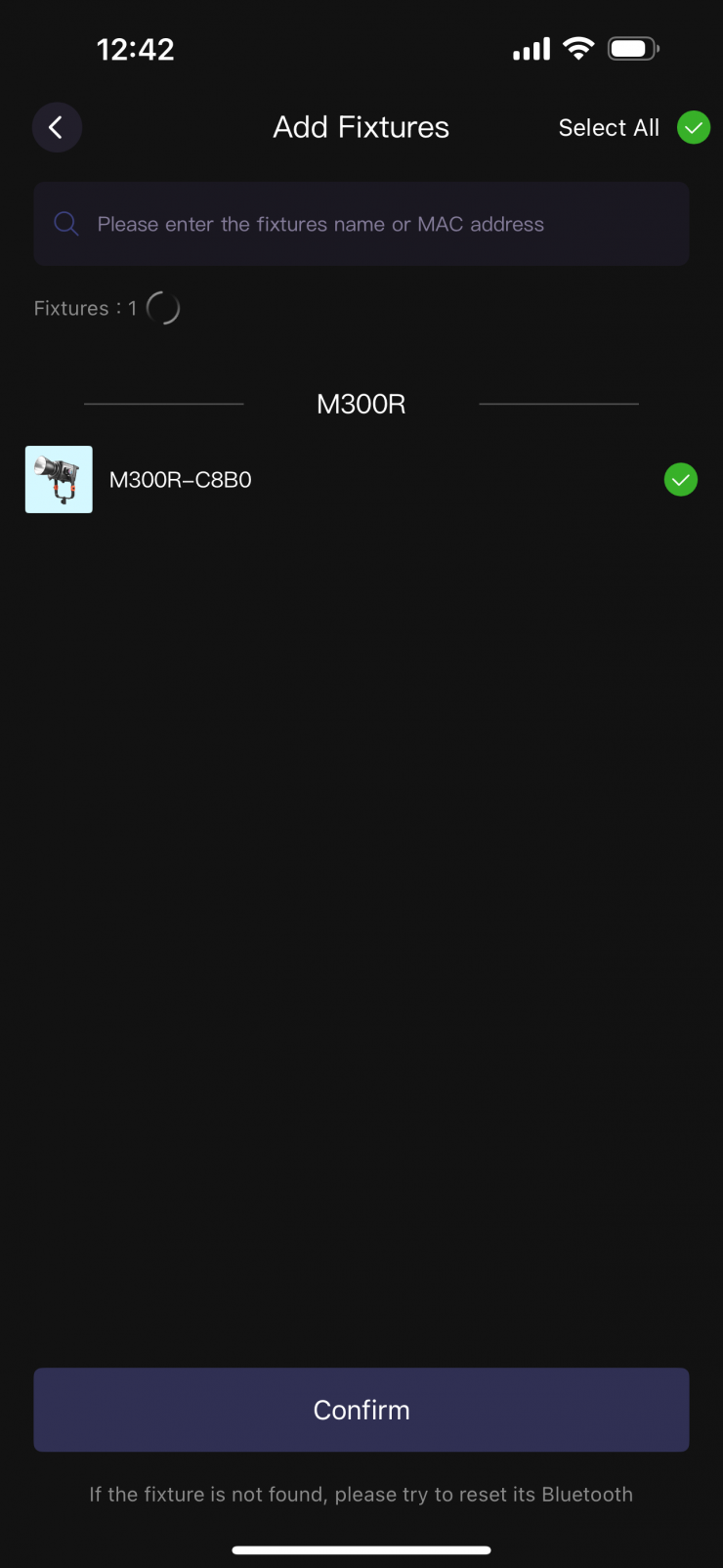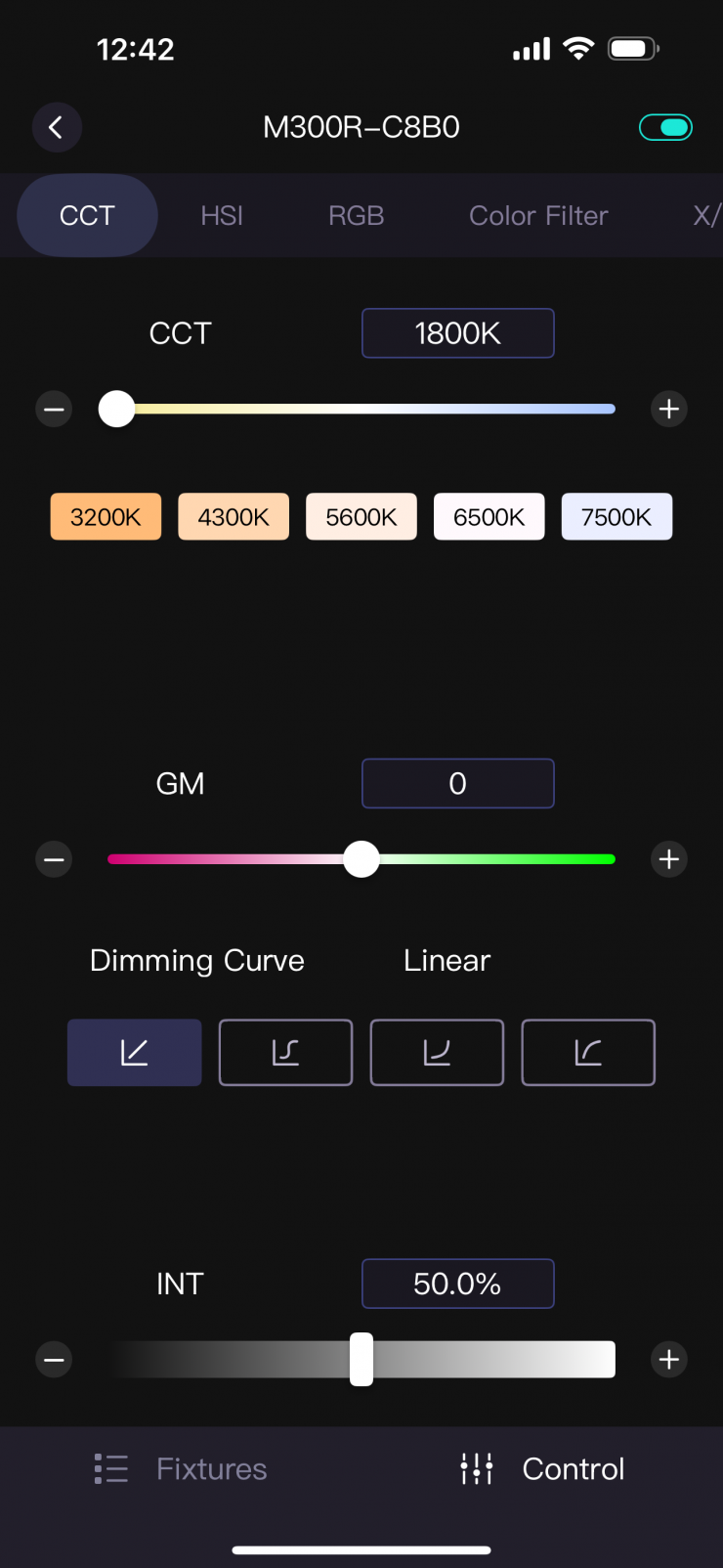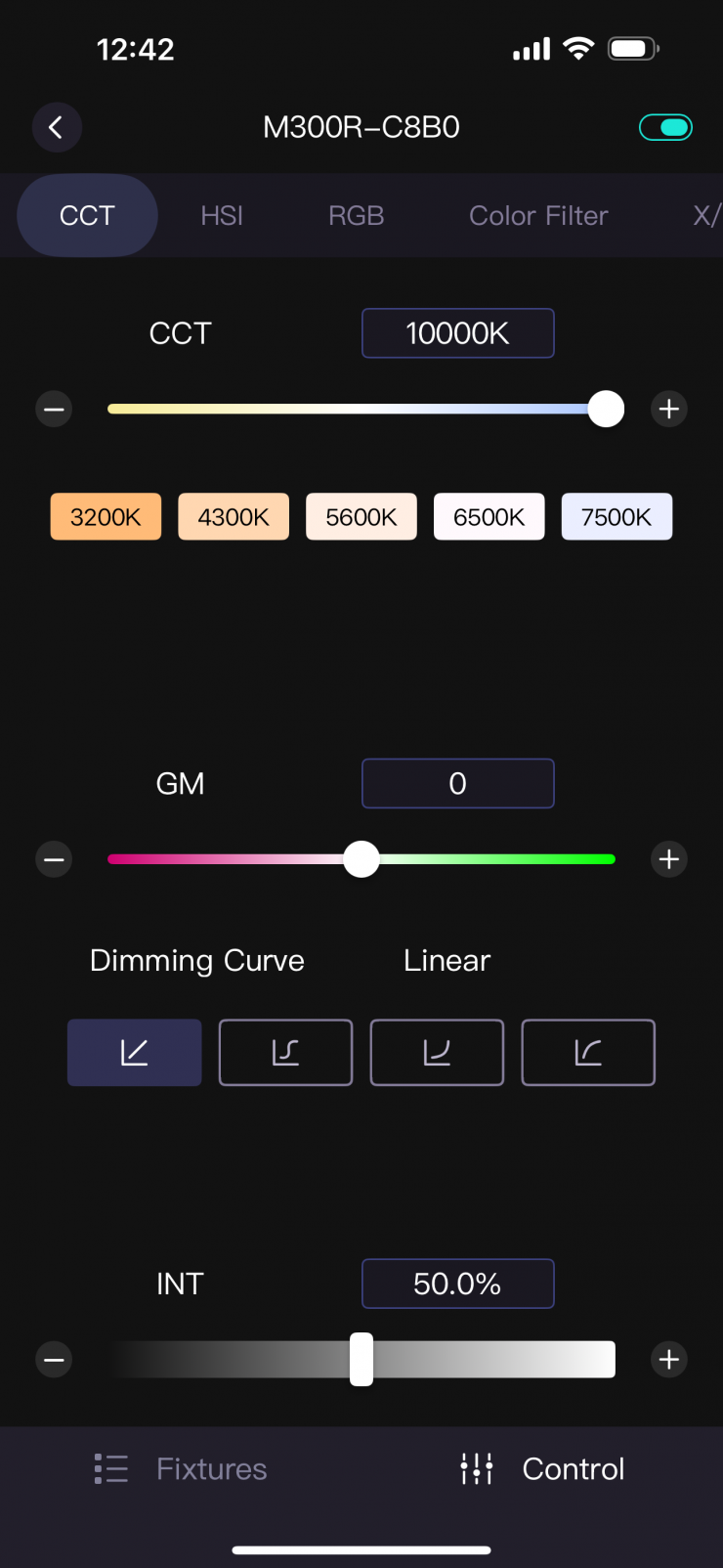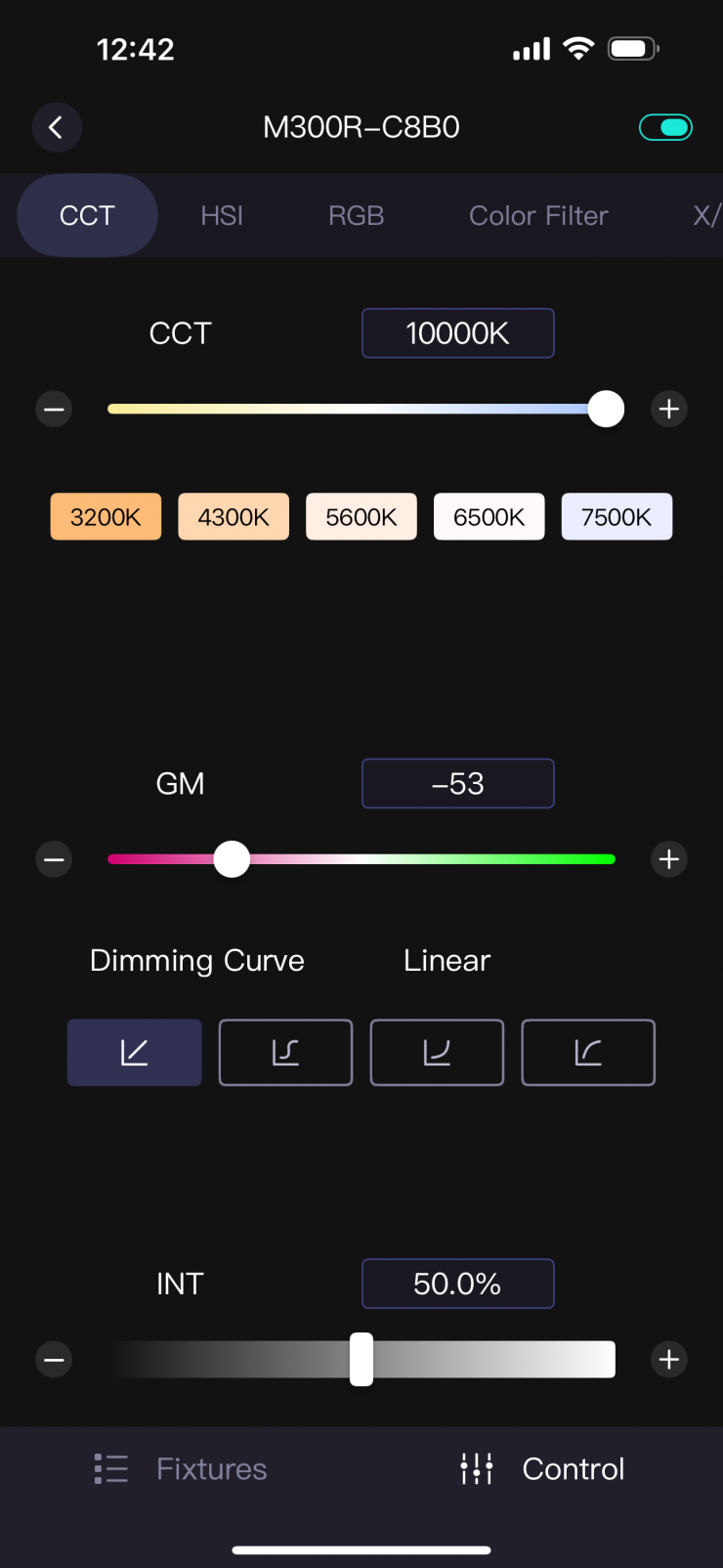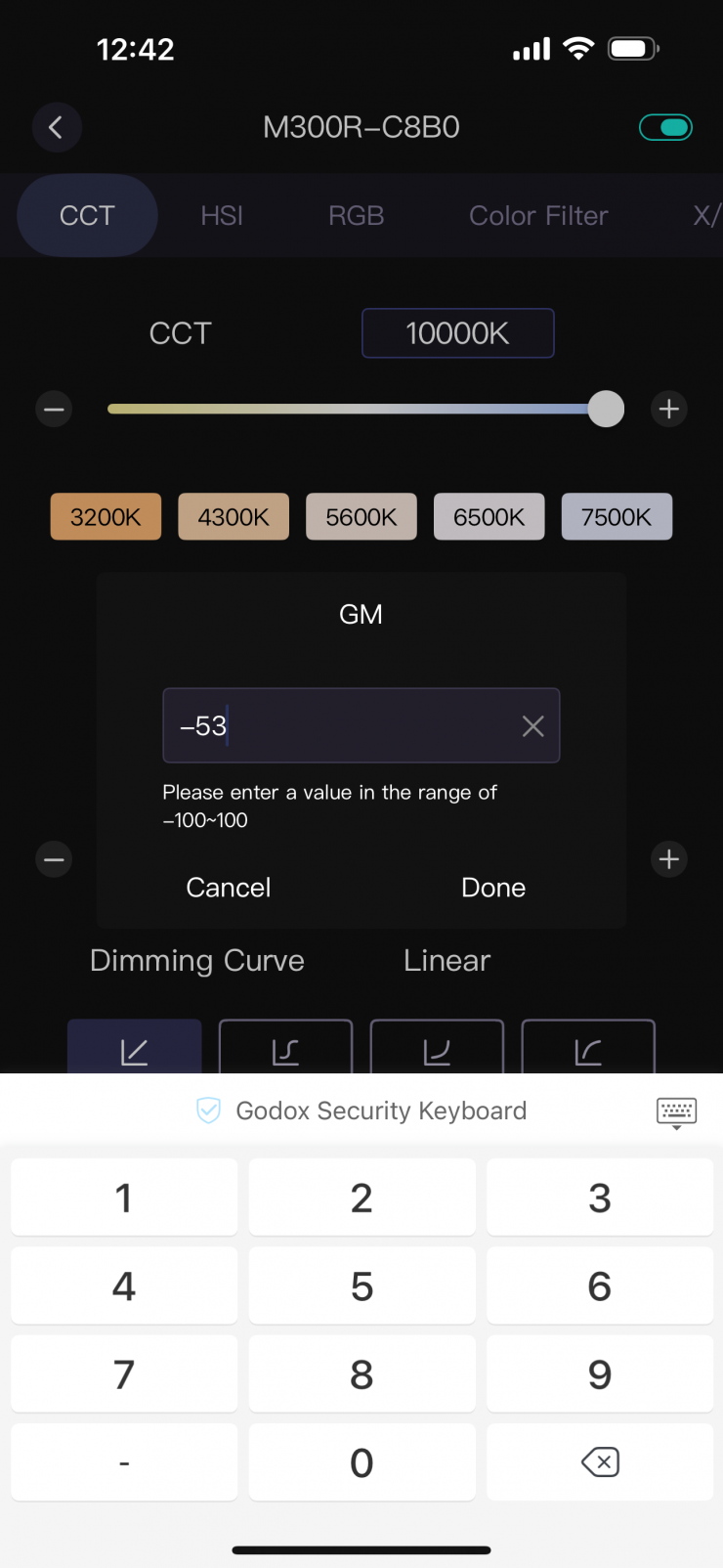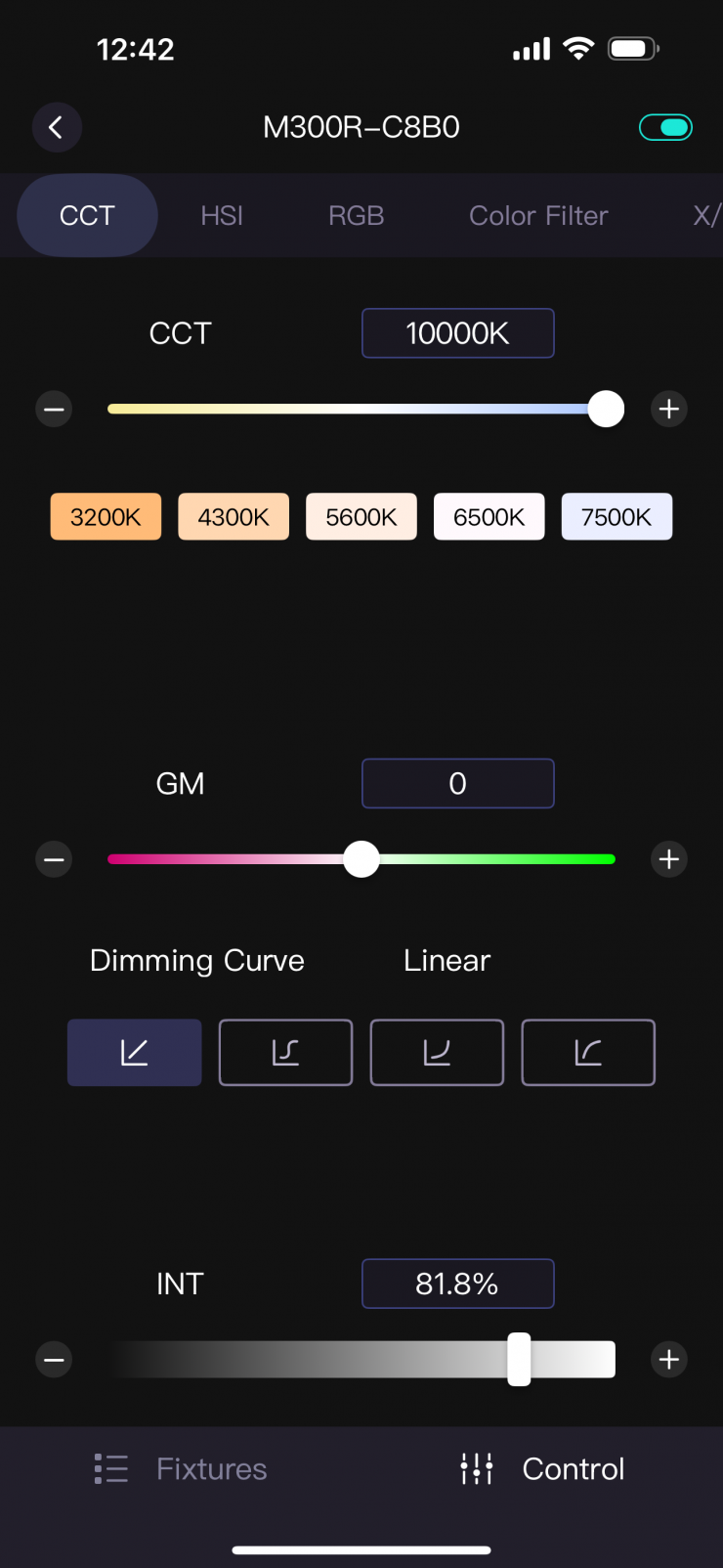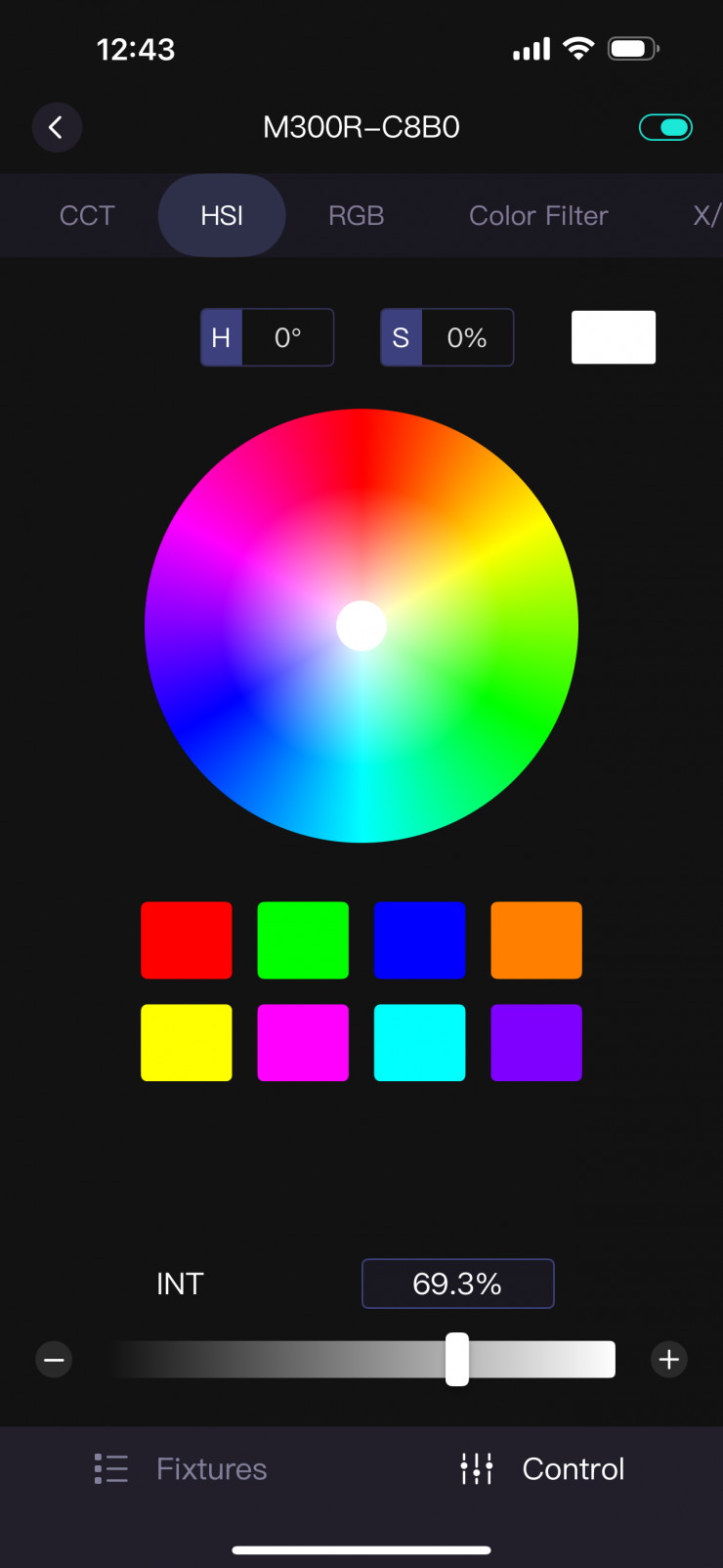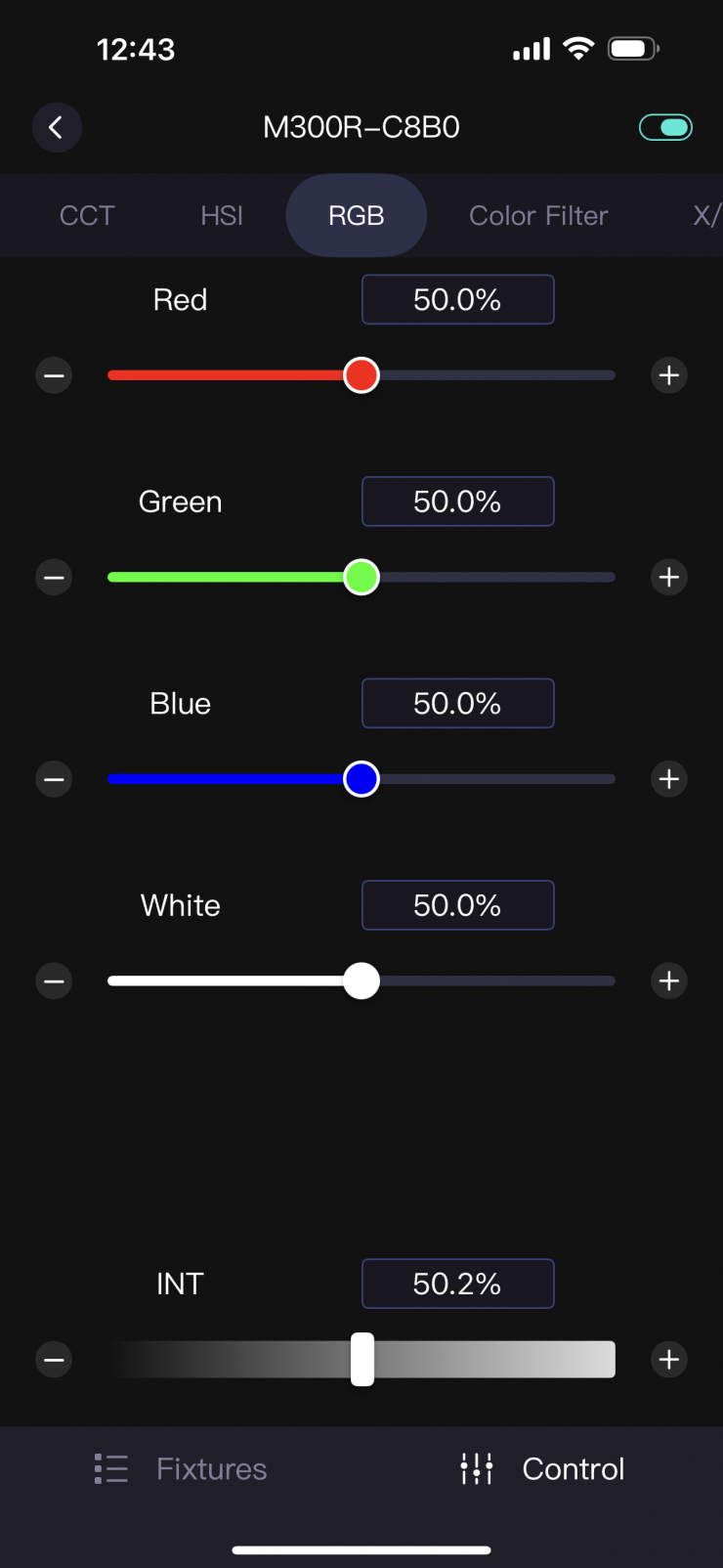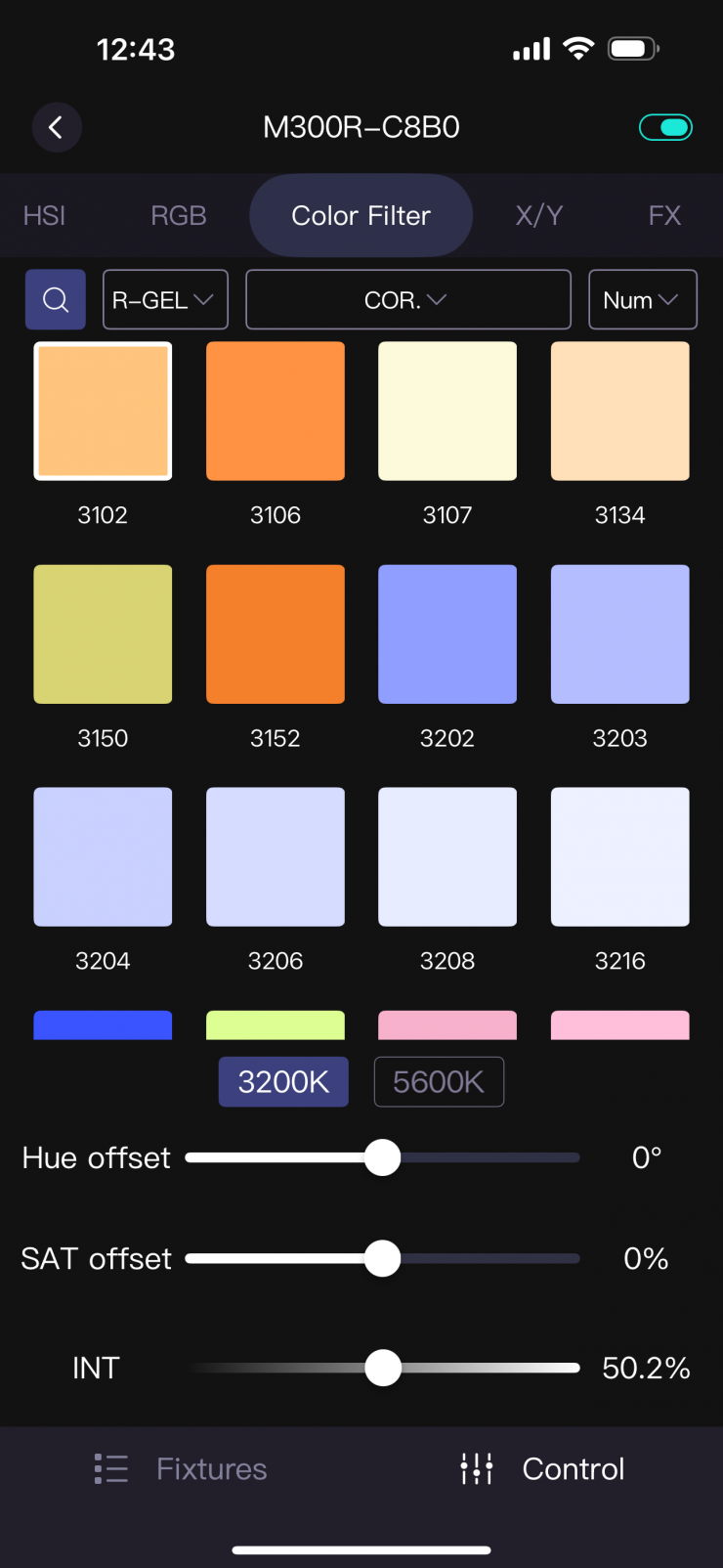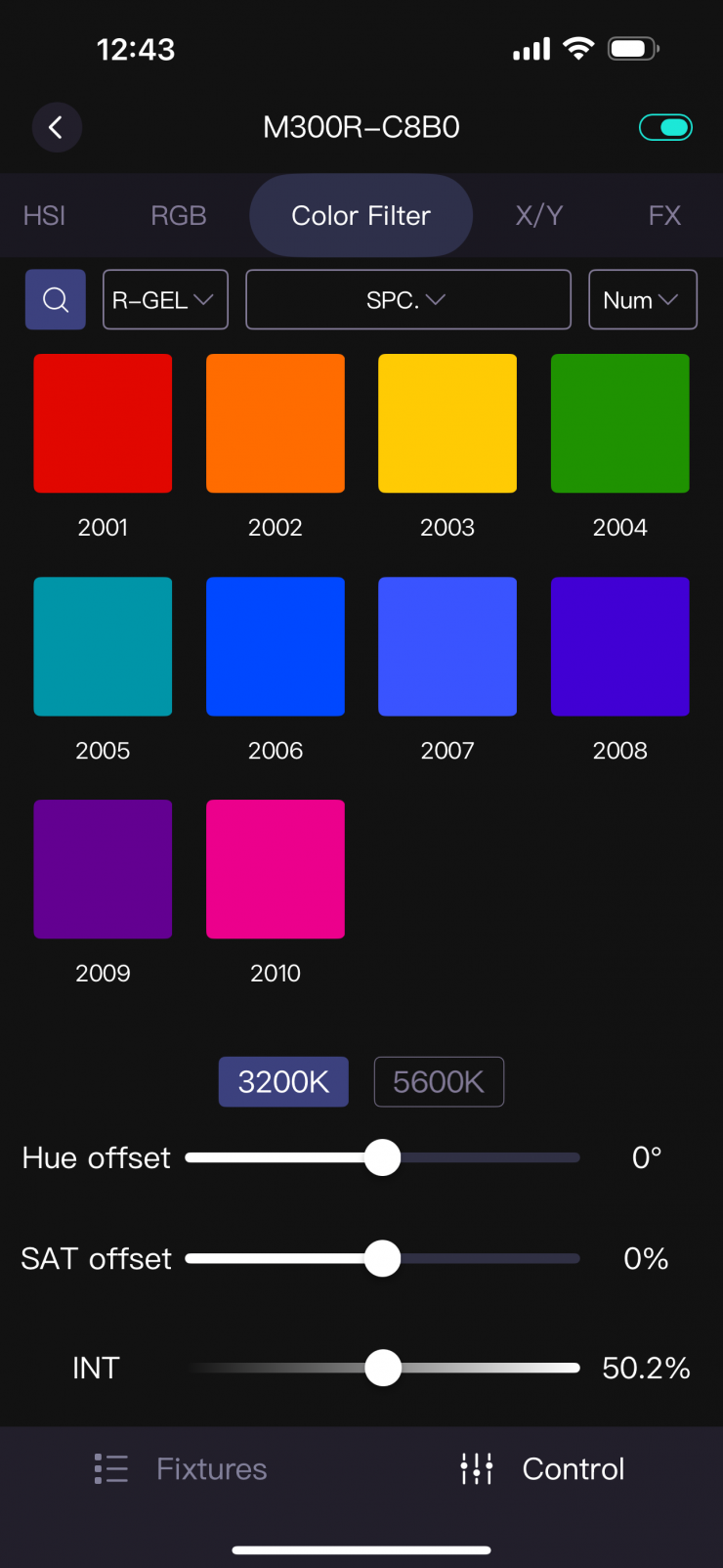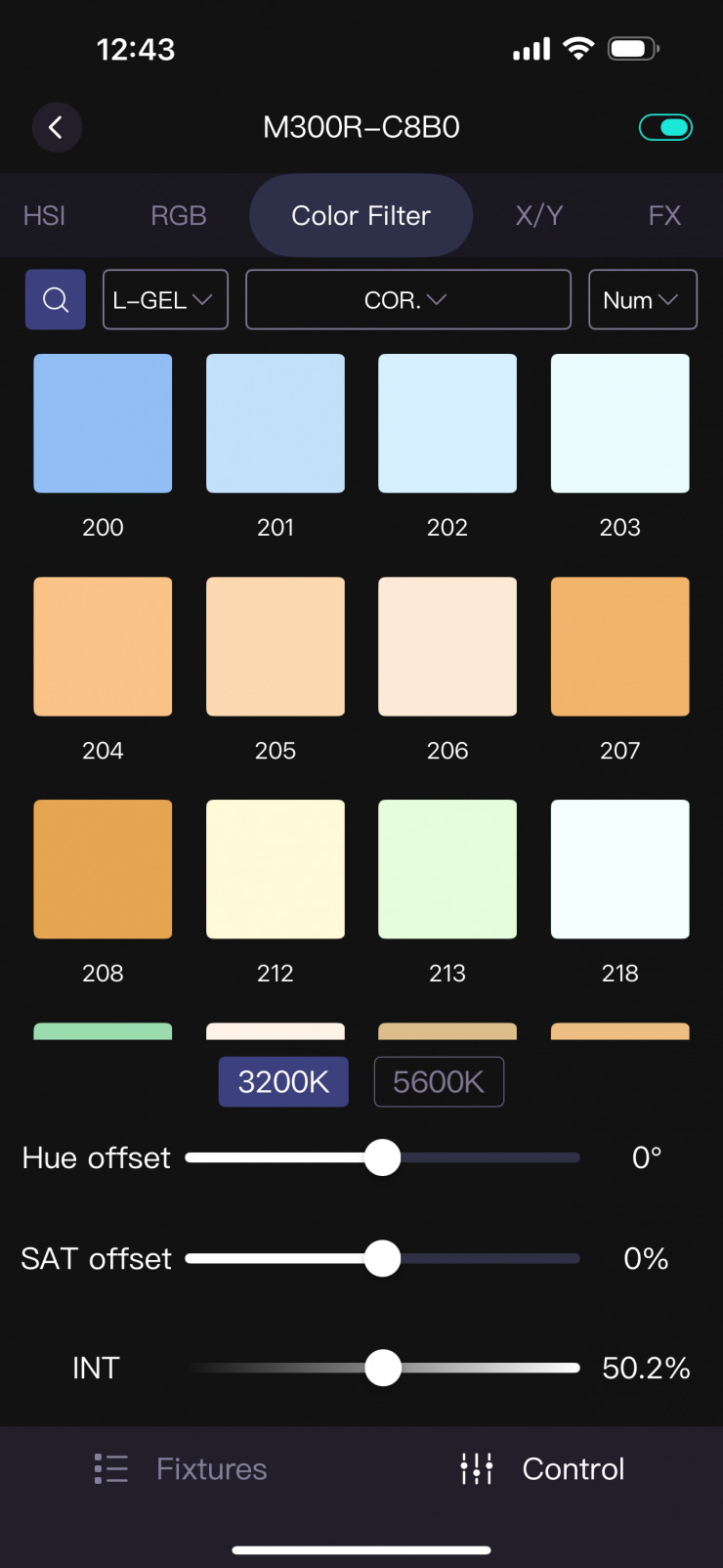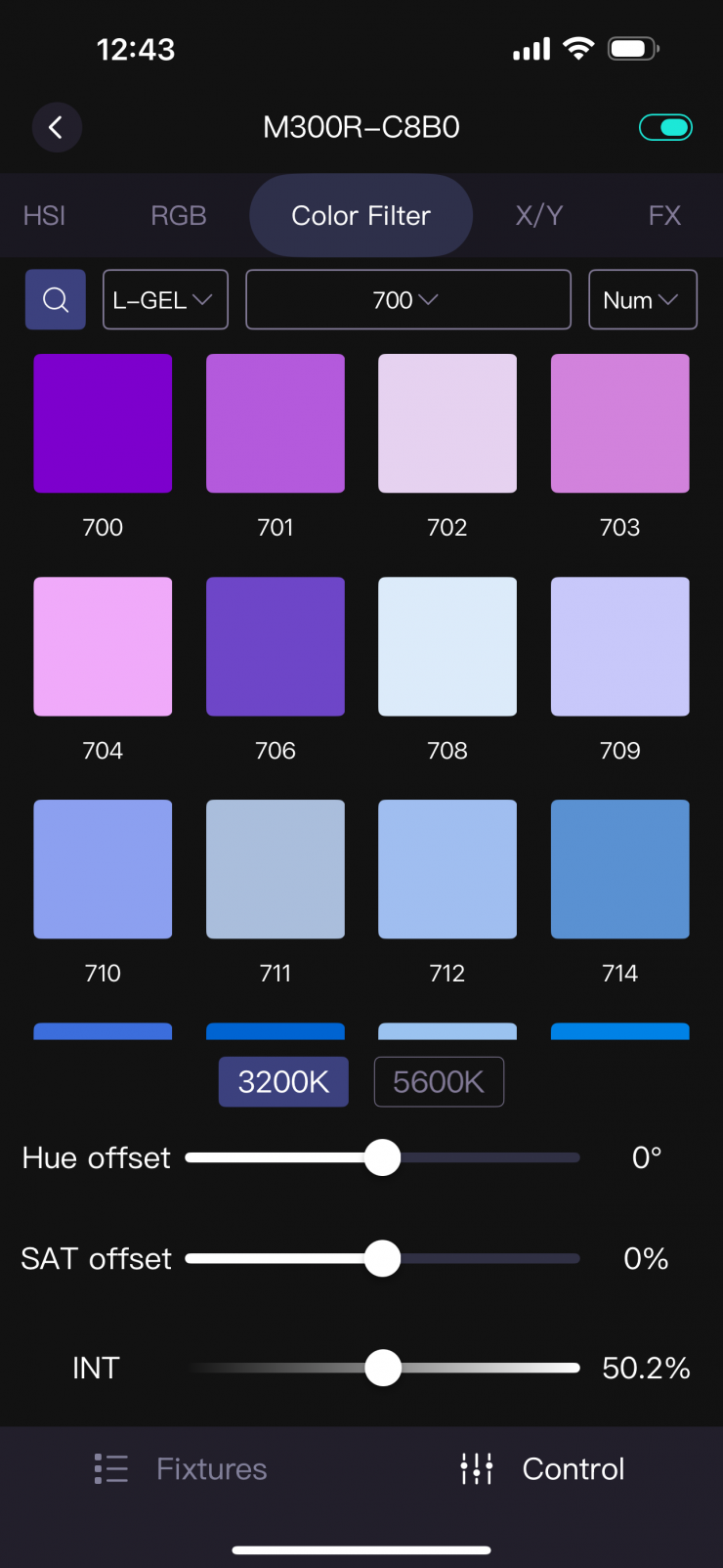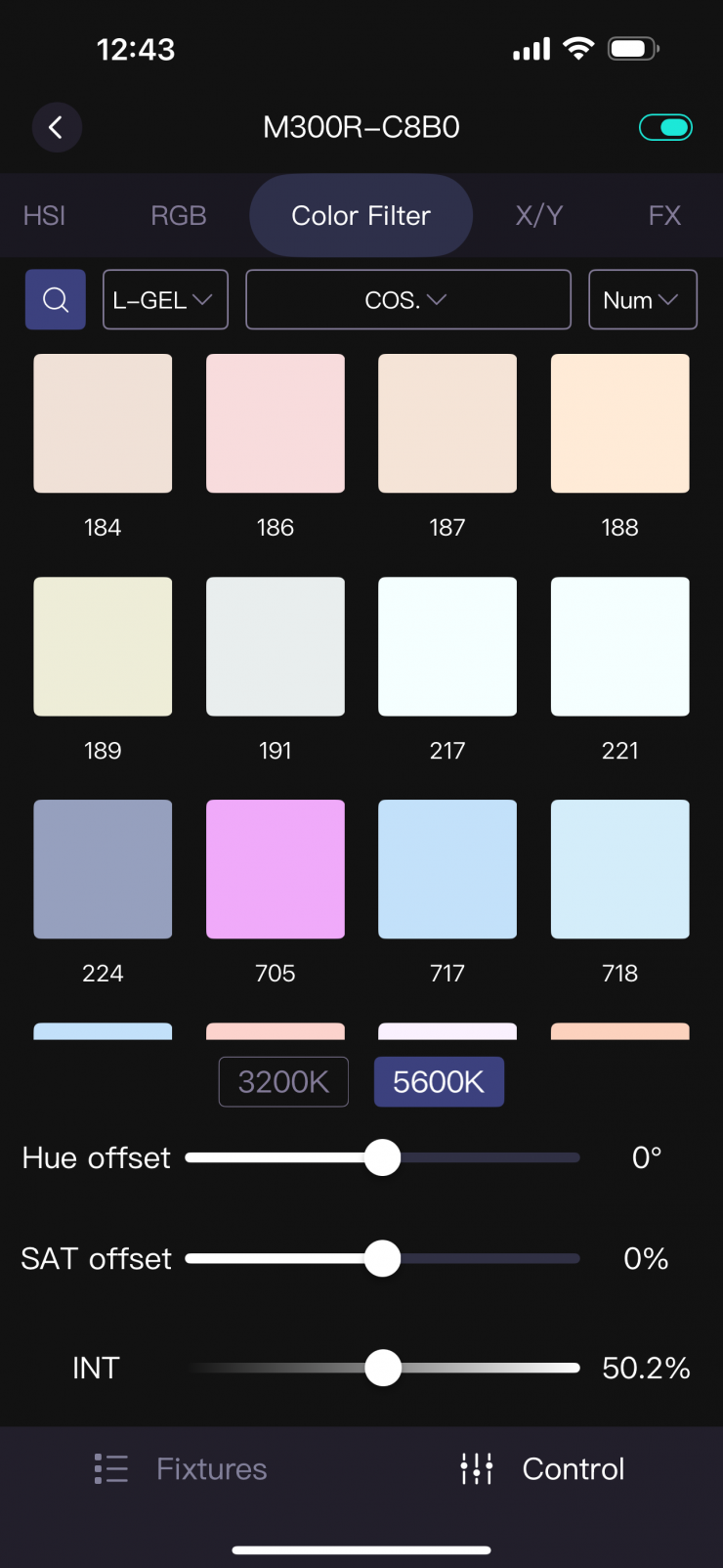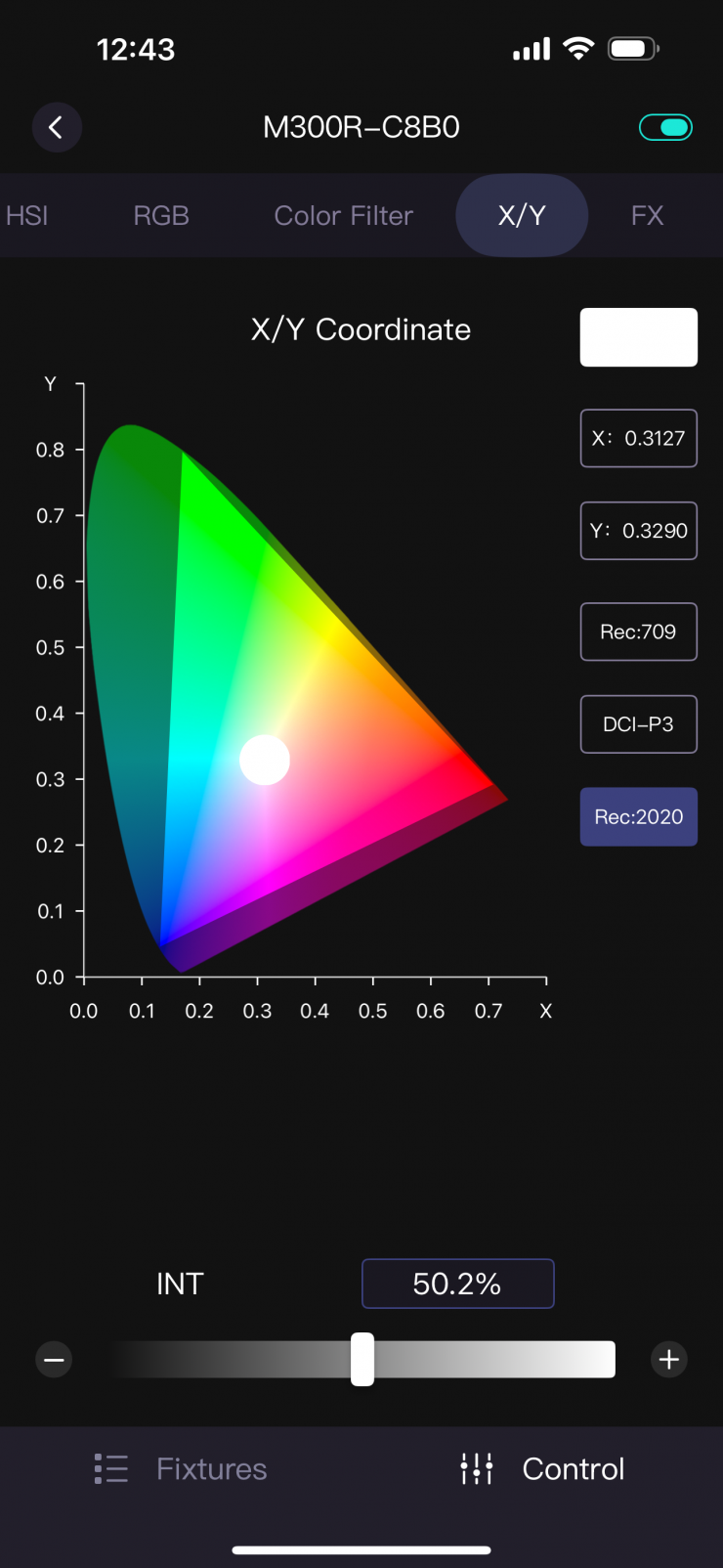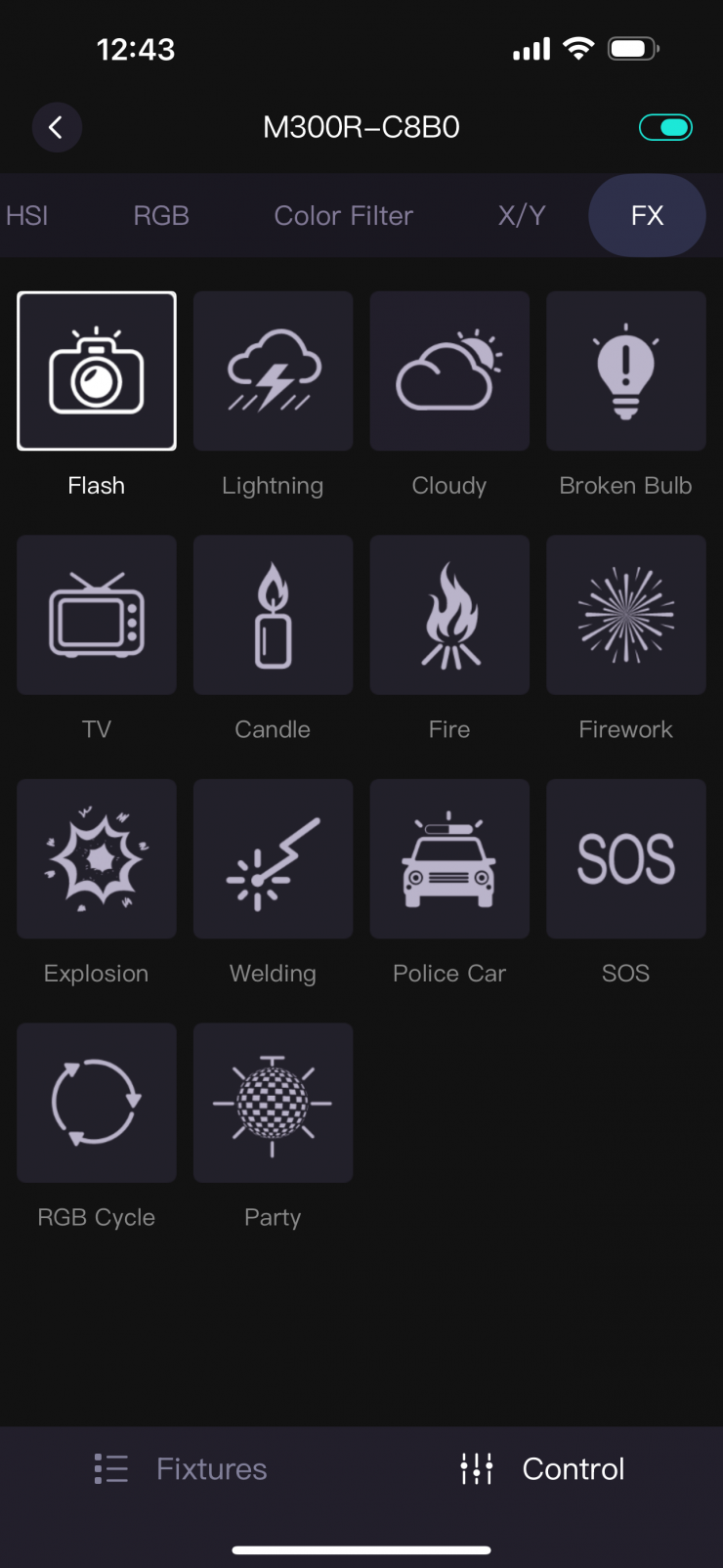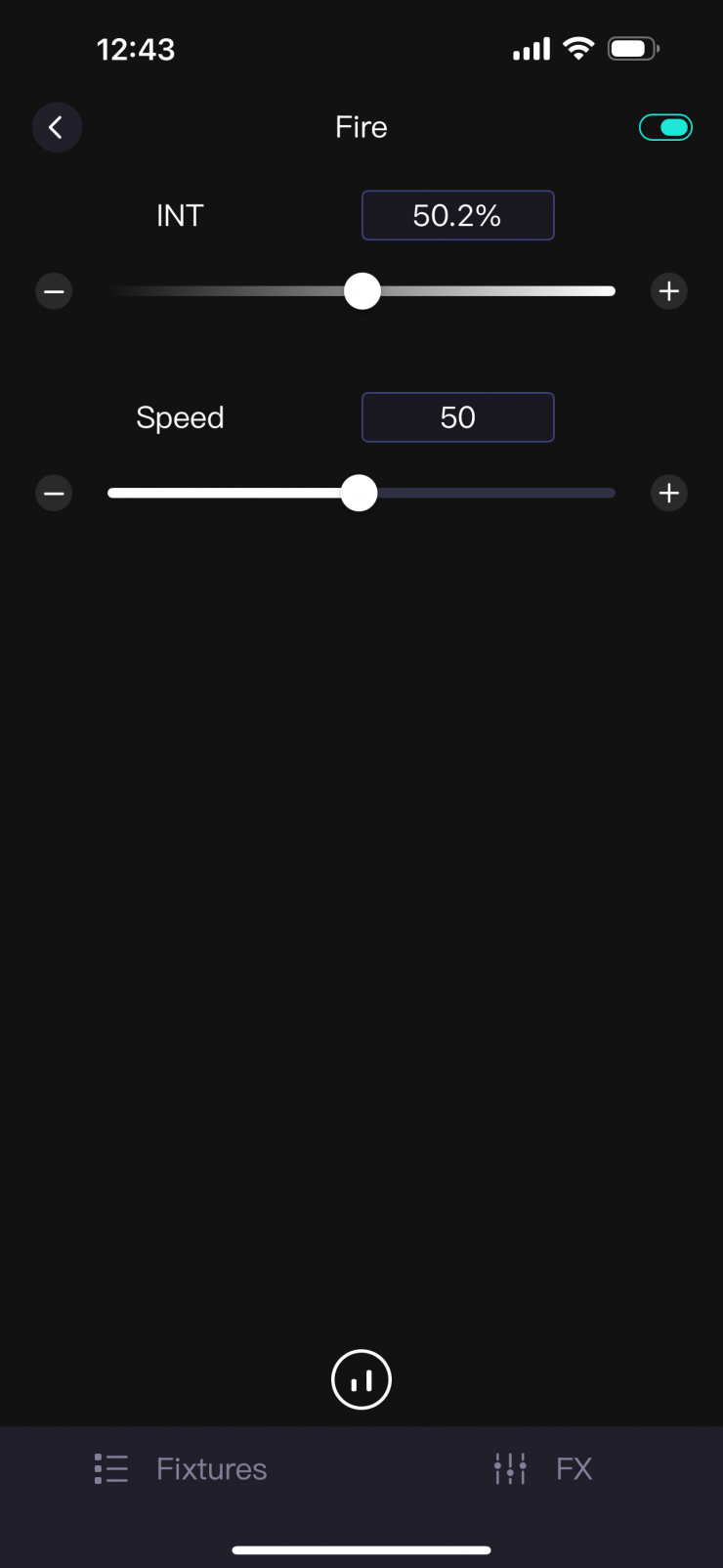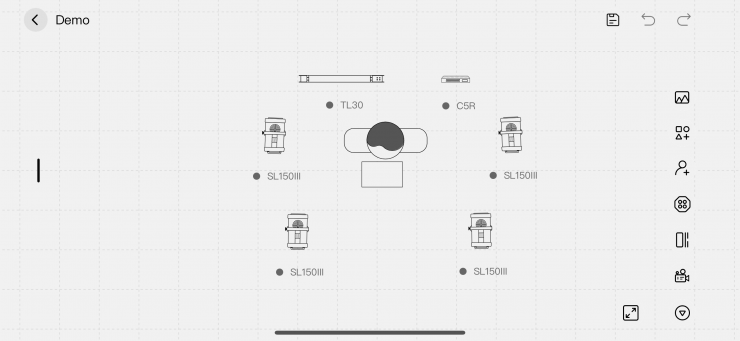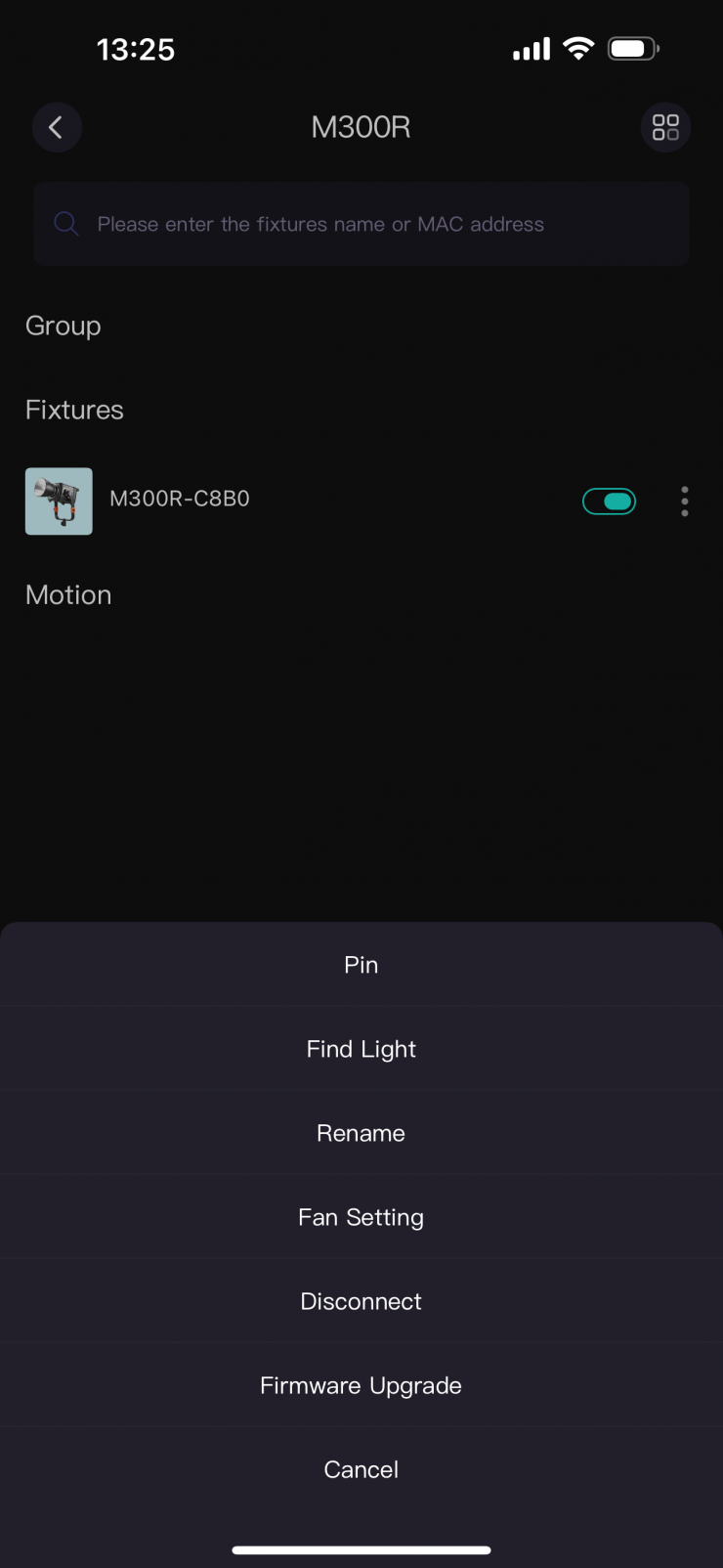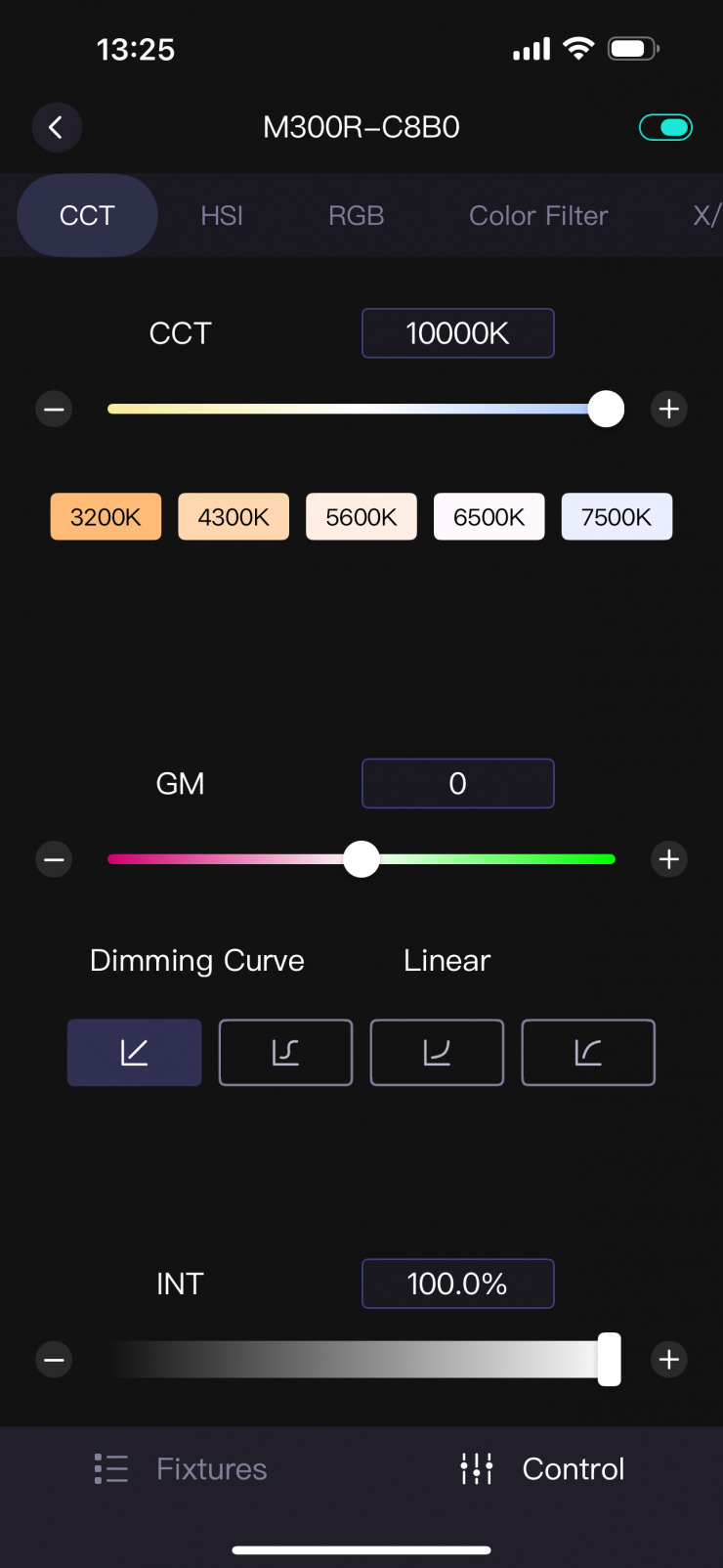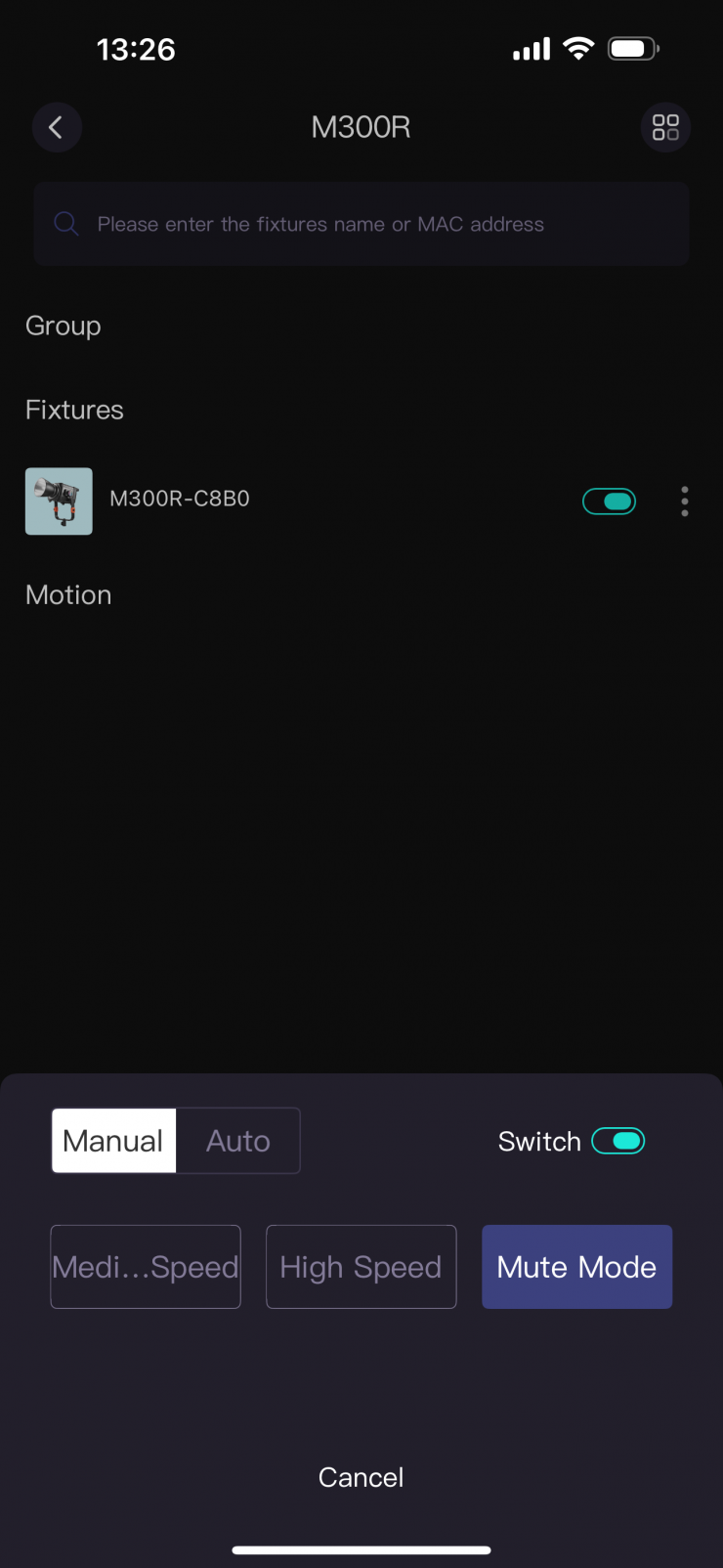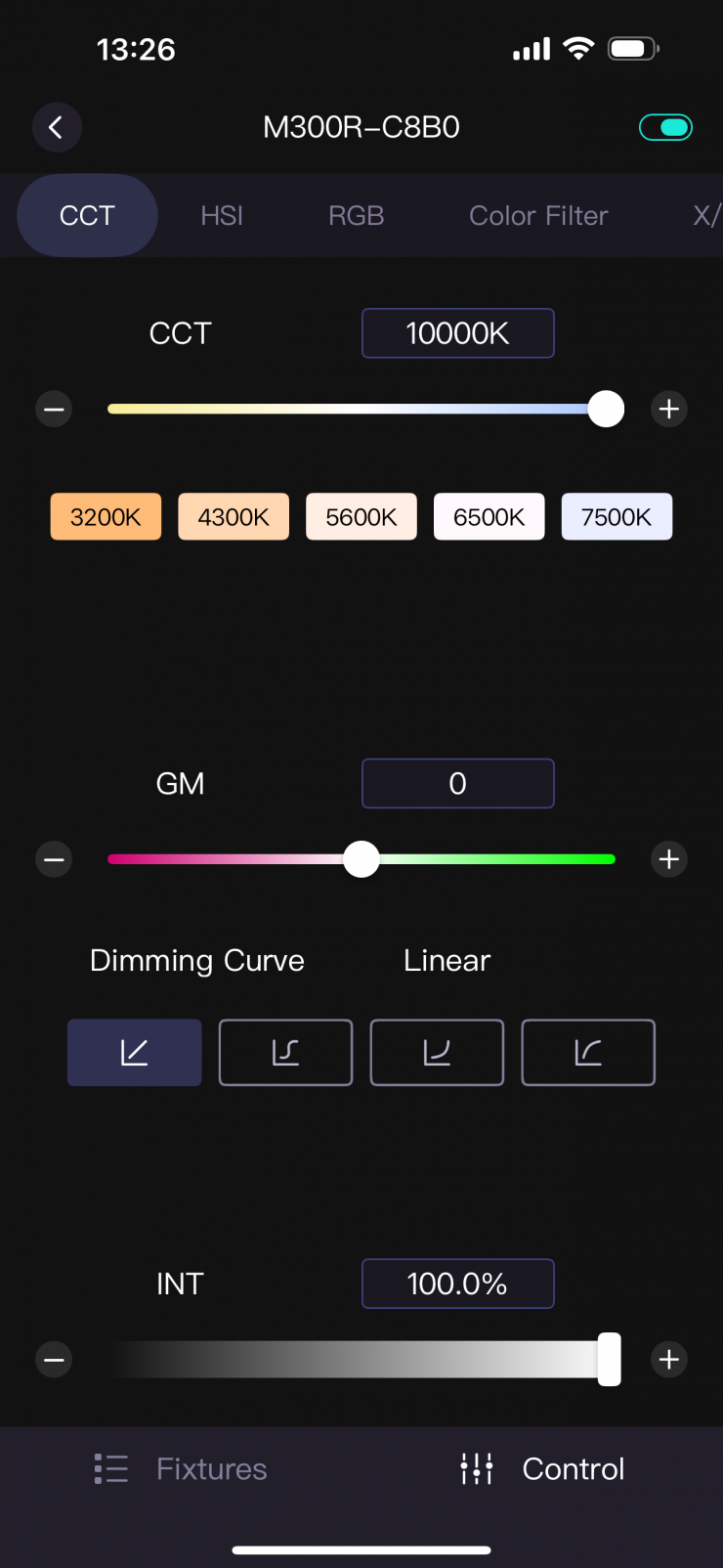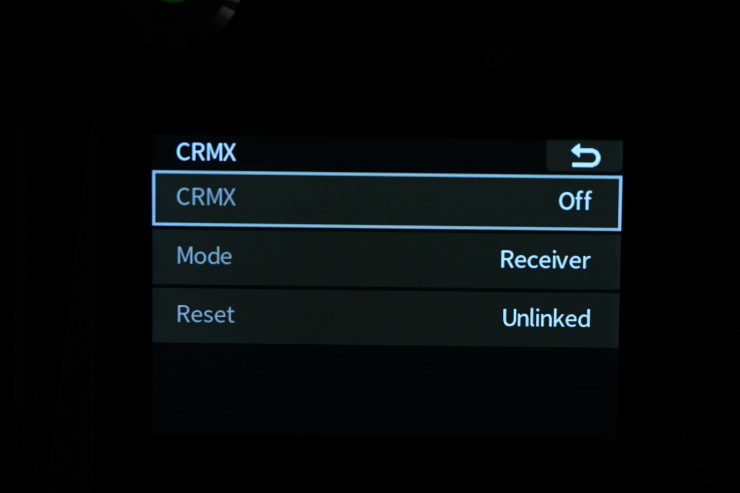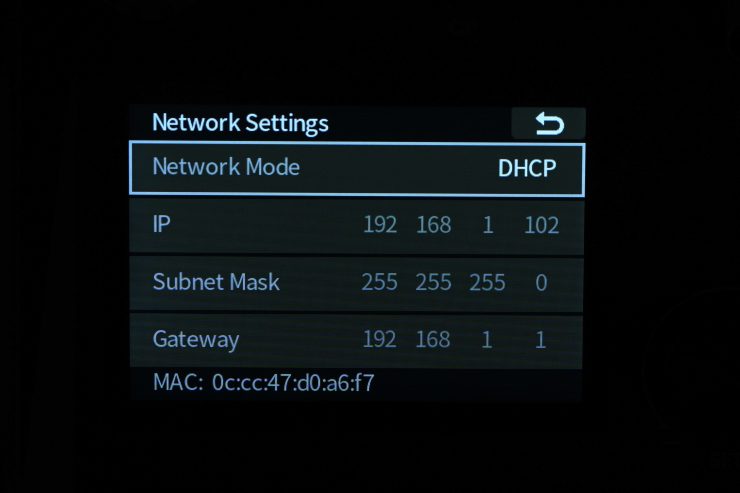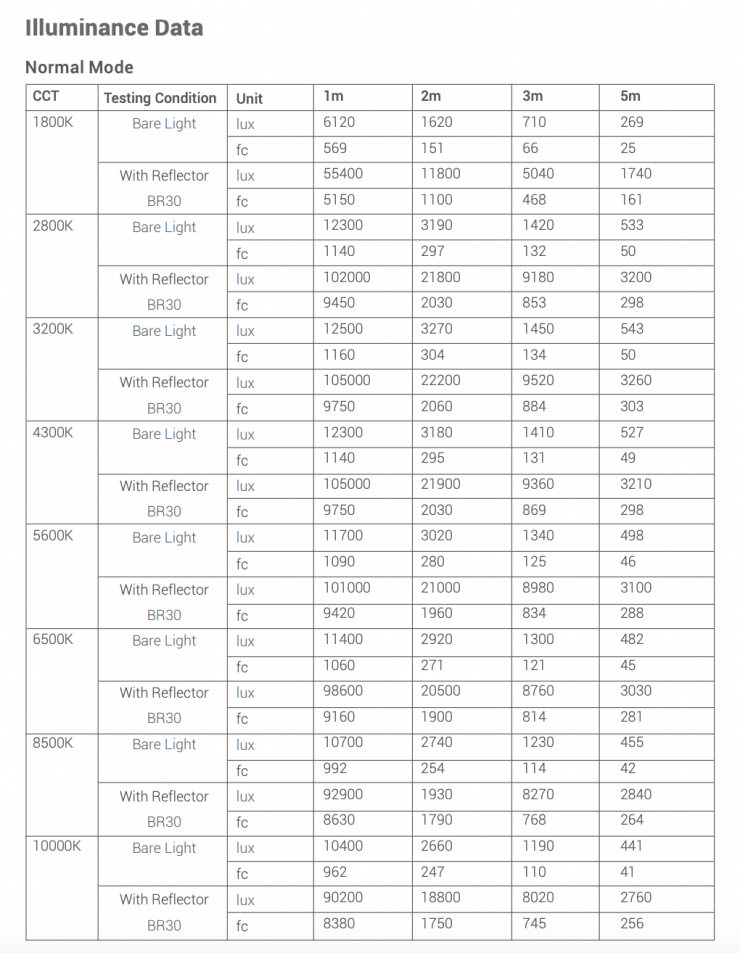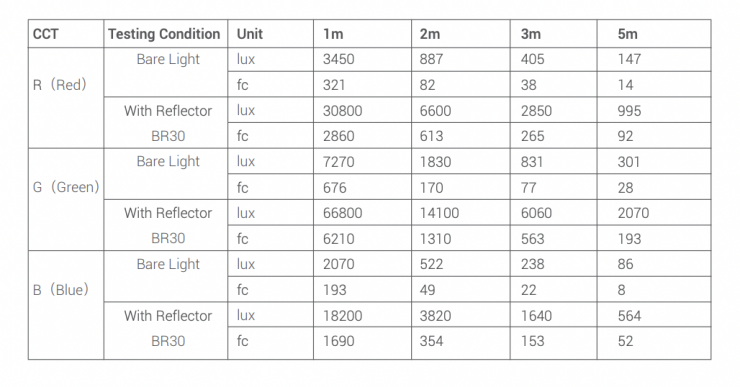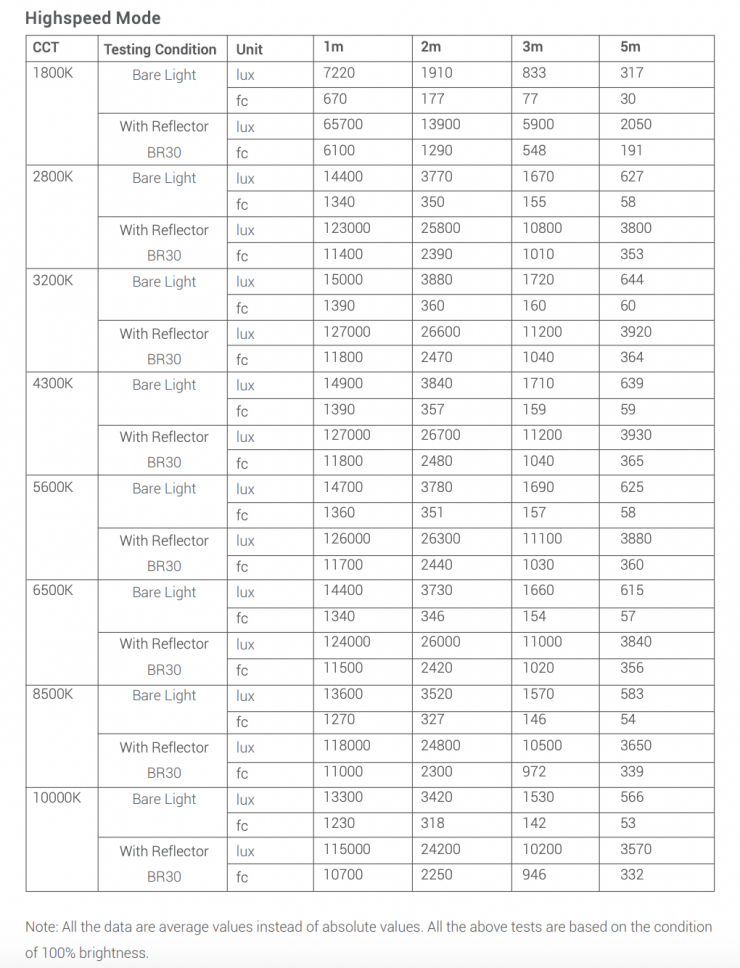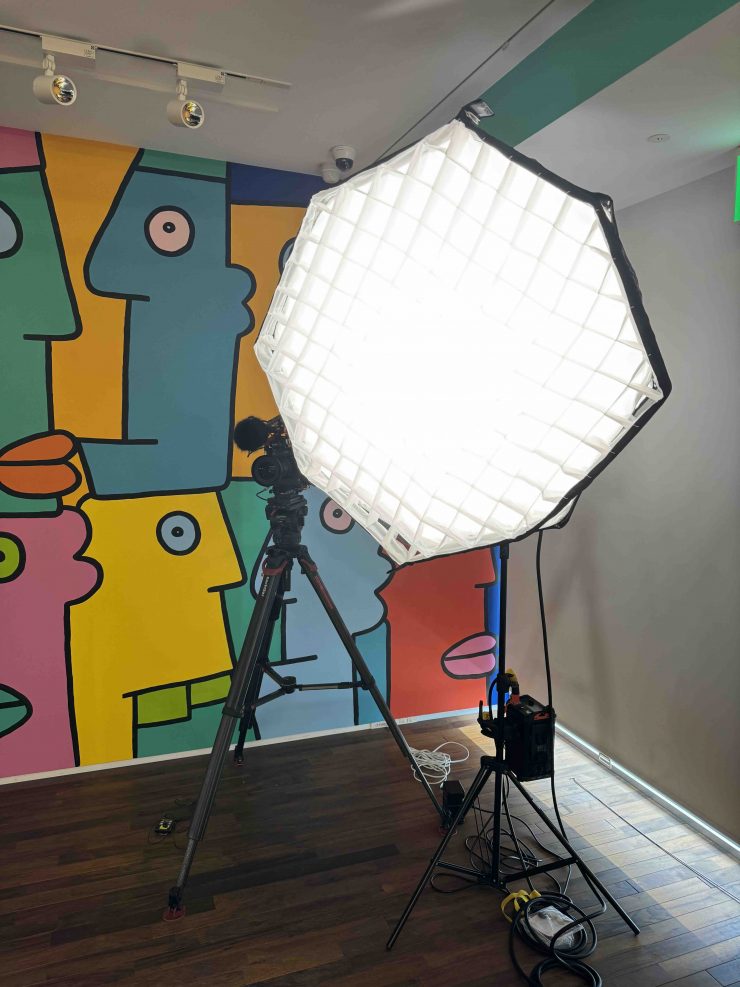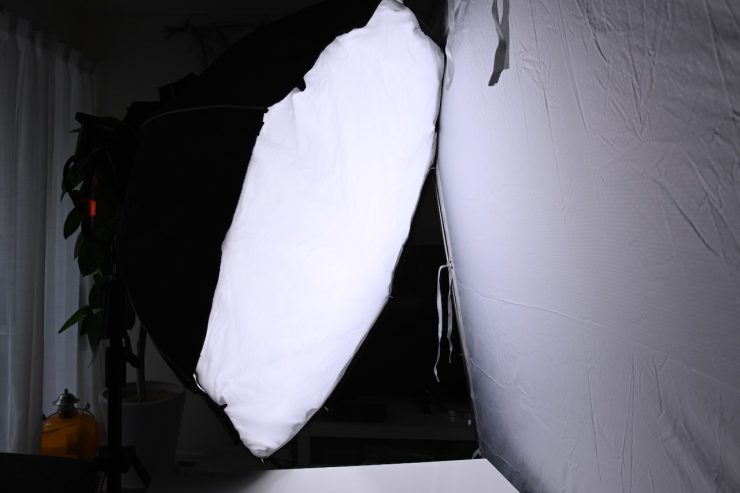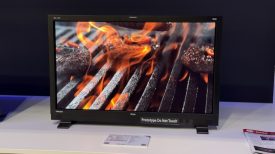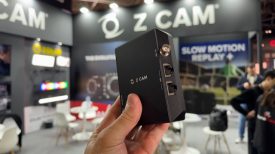
Godox recently introduced its new M300R RGBWW LED Light, a new addition to its KNOWLED series. The M300R is equipped with an RGBWW LED chip-set, and it has a claimed output of up to 101,000 lux at 1m / 3.3′ with its 30° reflector.
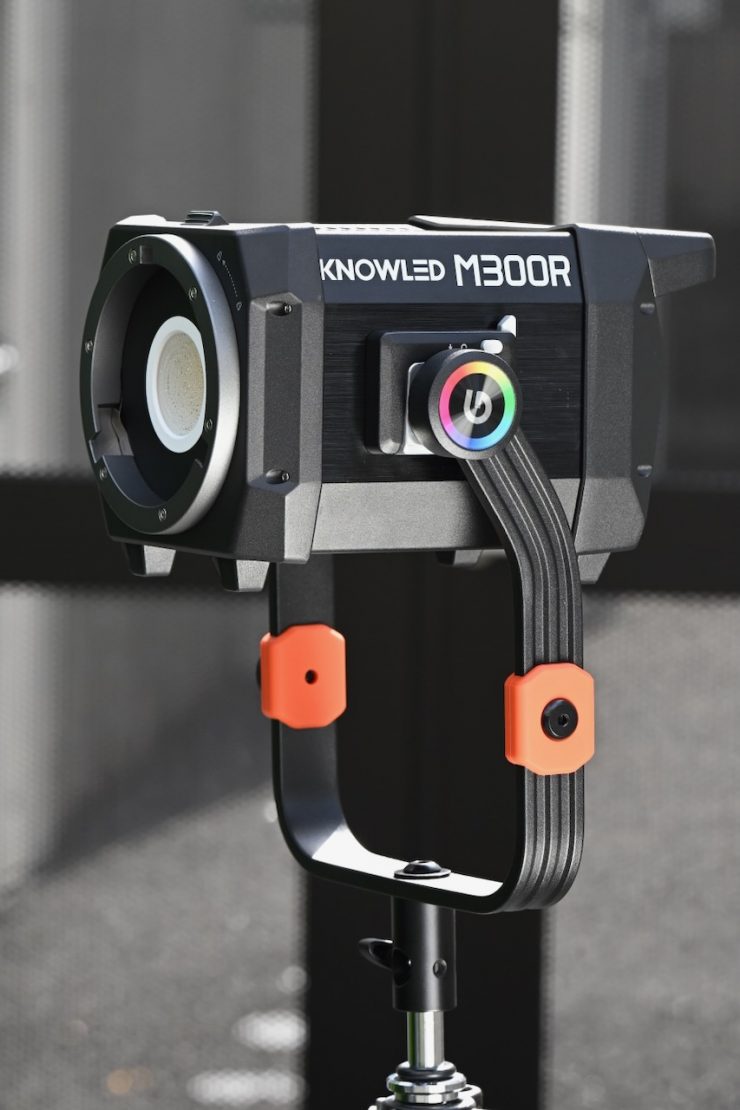
Key features
- For Studio & Film/TV Production
- Output: 101,000 Lux at 3.3′ w/ Reflector
- 1800-10,000K CCT; Full RGB Color Control
- AC Power; Optional Battery Power
- Onboard, DMX, CRMX & Ethernet Control
- CRI 96 | TLCI 95
- Bowens S Mount & IP54 Rating
- 14 Lighting Effects
- Includes Controller & Clamp
- Includes AC Power Cord
Overview
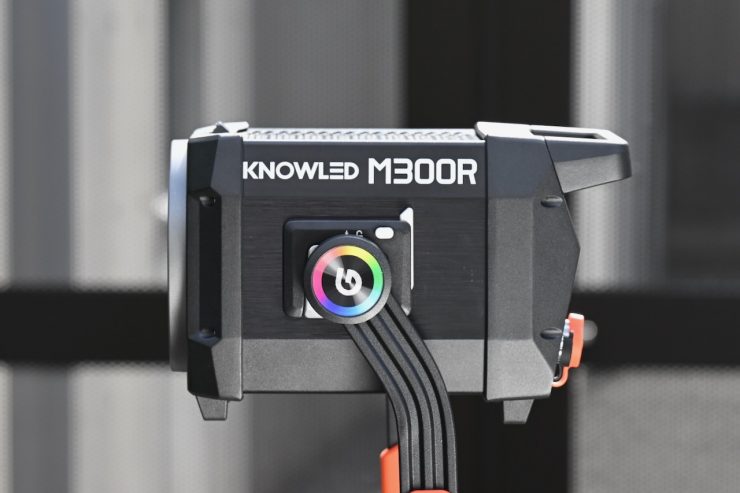
The M300R supports a CCT range from 1,800K to 10,000K, along with full HSI color control, allowing for precise adjustment of color temperature, hue, and saturation across the 360° color spectrum.
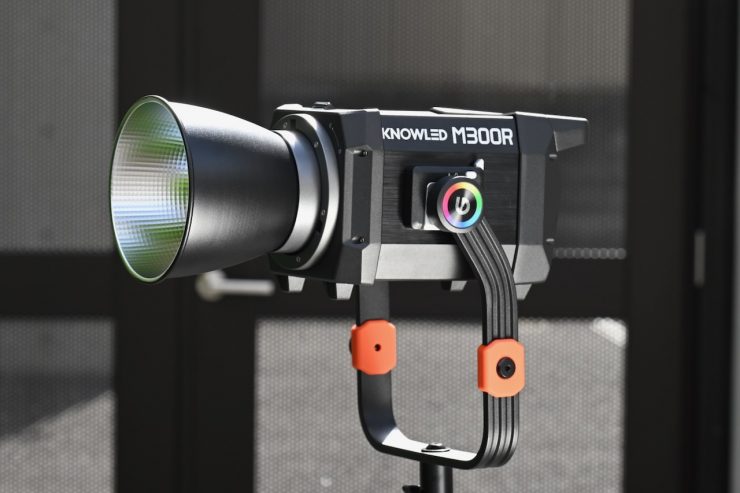
The fixture features CCT, HSI, RGBW, GEL, XY, and FX modes and it has claimed color accuracy ratings of CRI 96 and TLCI 95. The M300R also offers 0 to 100% dimming in 0.1% increments along four dimming curves: linear, S-curve, exponential, and logarithmic. Users can also make adjustments with green/magenta correction. As you would expect, there is the usual array of effects to choose from, such as flash, lightning, cloudy, broken bulb, TV, candle, fire, fireworks, explosion, welding, cop car, SOS, RGB cycle, and party effects.
To effectively manage temperature while maintaining the quality of light, the M300R incorporates an upgraded optical technology that is claimed to extend its lifespan. The light also has an IP54 rating for weather resistance, and it can withstand dust, water splashes, rain, fog, etc.
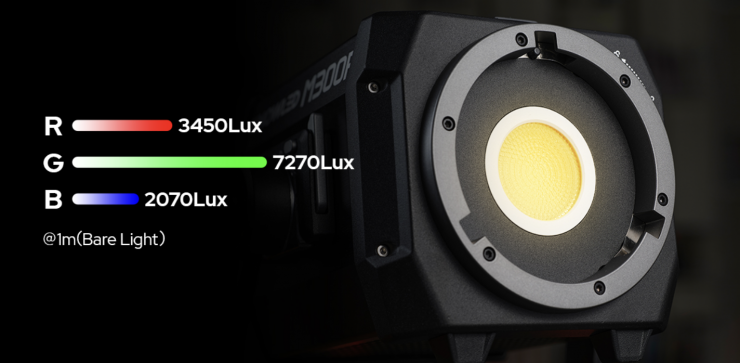
Godox has engineered the light so that it is able to produce high output for the individual red, green, and blue channels.
Size & Weight
The M300R weighs 3.6kg / 7.93 lbs (light-body without yoke) and features a compact design for easy handling and transport. The Power Supply/Controller weighs 3.1 kg / 6.8 lb.
Individually, the components aren’t that heavy, and I like how the fixture has a nice carry handle. The power supply/controller also has a carrying strap.
So, how does that weight compare to some of the competition?
| TOTAL WEIGHT | |
| Godox KNOWLED M300R | 6.7kg / 14.77 lb (excluding yoke) |
| amaran 300c RGB LED Monolight | 2.6kg / 5.8 lb |
| Nanlite FS-300C | 3.2kg / 7.1 lb |
| GVM Pro SD300C | 2.7kg / 6 lb |
| Aputure STORM 400x | 6.95kg / 15.32 lb |
| Nanlite FC-500C | 6.14kg / 15.53 lb |
| Godox Litemons LA300R | 2.5kg / 5.5 lb |
Essentially, if you look at the weight comparison above, the Godox KNOWLED M300R is around the same sort of weight as the Nanlite FC-500C and Aputure STORM 400x.
Build Quality
The build quality of the Godox KNOWLED M300R is very good, and I would say that it is in line with the higher-end fixtures from NANLUX and Aputure. It isn’t going to have the build quality of an ARRI, Creamsource, or Kelvin fixture, but I think it’s going to be good enough for most people’s needs, and I think it would be robust enough to have in a rental fleet.
The housing of both the fixture and the power supply/controller is solidly constructed.
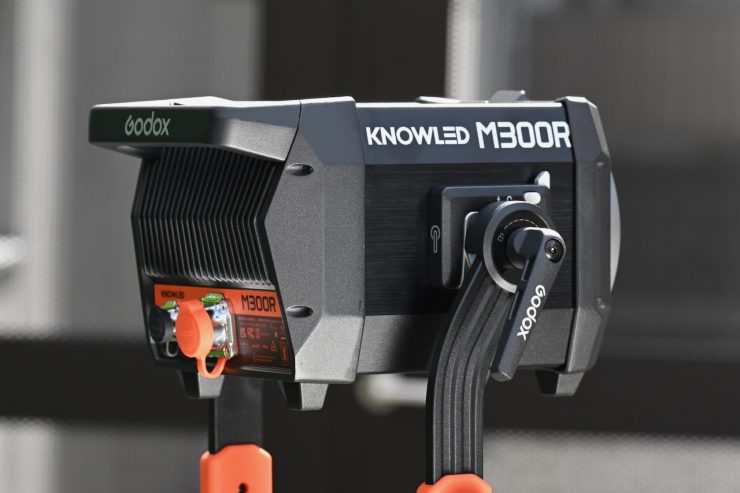
The light features a single locking mechanism on the yoke frame that is well made and it solidly locks the light down.
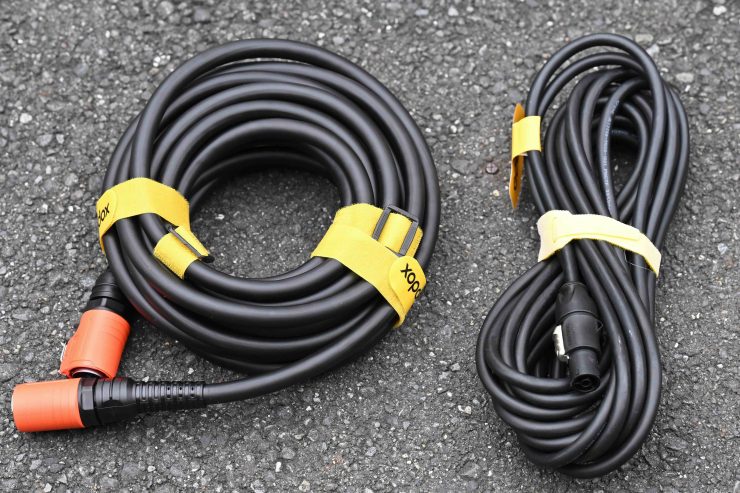
Godox gives you a nice, long, thick, and robust power connection cable that allows you to place the light up very high. It is always nice to see long cables included with a light as standard.
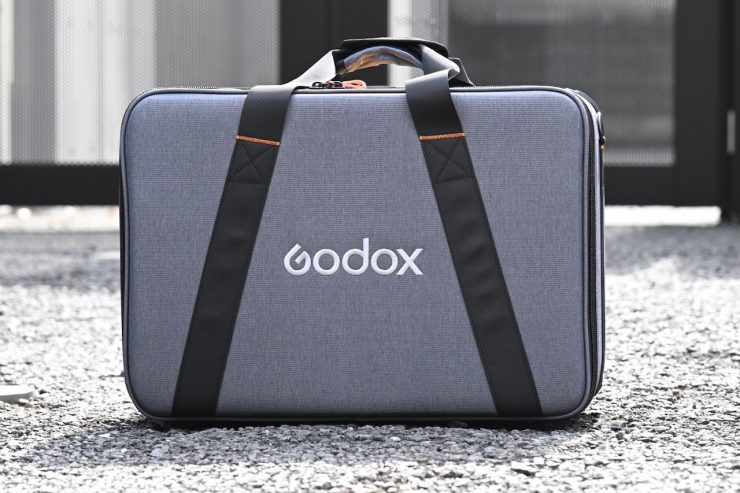
The included case is decently made. It is easy enough to carry, and arguably, if Godox had made it into a wheeled version, it would have added weight.
IP65 Weather Protection

The fixture features IP65 dust and weather protection, which signifies complete protection from dust and resistance to water jets.
Design
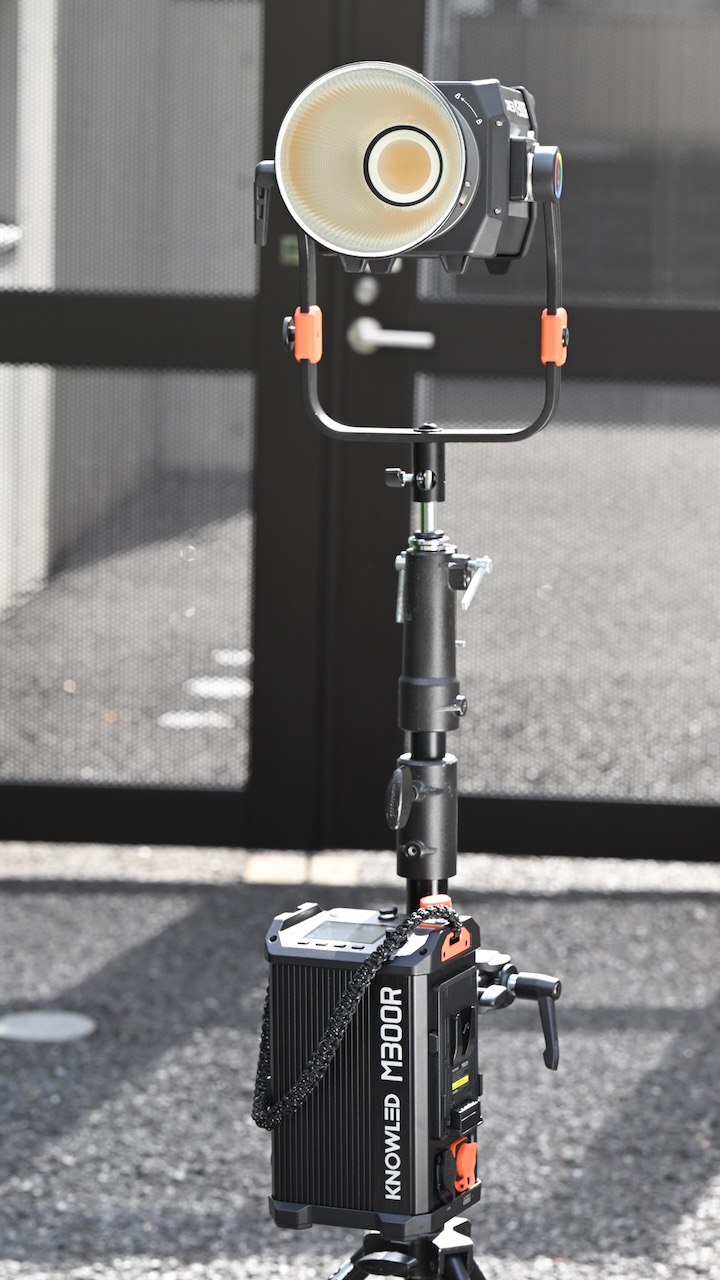
The Godox KNOWLED M300R consists of a light head and a separate power supply/controller. The light head isn’t overly heavy, and it is a reasonable size given the light’s capabilities.
Having a separate light head allows you to use slightly smaller light stands.
You can place the Godox KNOWLED M300R flat on the ground because the power input is located on the back of the fixture. There are also four small raised feet so that it doesn’t sit flush on the ground.
A lot of today’s modern lights are now a seamless blend of hardware and software. With software playing such a big role, lighting companies could continue to improve and update fixtures over time via firmware updates; however, you don’t actually see too many firmware updates getting released for lights. It will be interesting to see if Godox adds features or extra functionality via firmware in the future.
COB
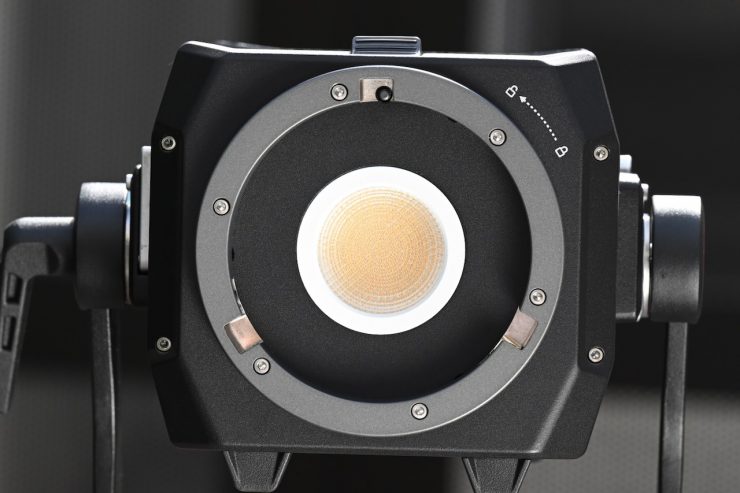
Quite a few LED lights on the market, including the Godox KNOWLED M300R, are using COB technology. COB stands for “Chip On Board” where multiple LED chips are packaged together as one lighting module. The advantage of COB LEDs being multi-chip packaged is that the light-emitting area of a COB LED can contain many times more light sources in the same area that standard LEDs could occupy. This results in a greatly increased lumen output per square inch.
The first caveat with COB LEDs is that they produce a ton of heat, and that heat needs to be effectively dispersed. The second caveat is that you will usually need to diffuse them as they are very bright to look at and can be unsuitable for directly lighting talent. The trouble is, if you use them with diffusion, such as a softbox, you are going to lose a ton of output because that output is coming from a small-sized source. With a lot larger source, say a 2×1 panel, you don’t lose as much output.
Yoke Frame
The Godox KNOWLED M300R comes with a robustly made angled yoke frame. The yoke frame has two quick-release mounting plates on it.

On the fixture, there are two quick-release inserts where the mounting plates slide in.
They feature a nice little locking mechanism that is very easy to use.
Unlike some other fixtures with a quick-release mechanism, this is easy to use, and just one person can do it without any issues. It lines up easily and inserts smoothly.
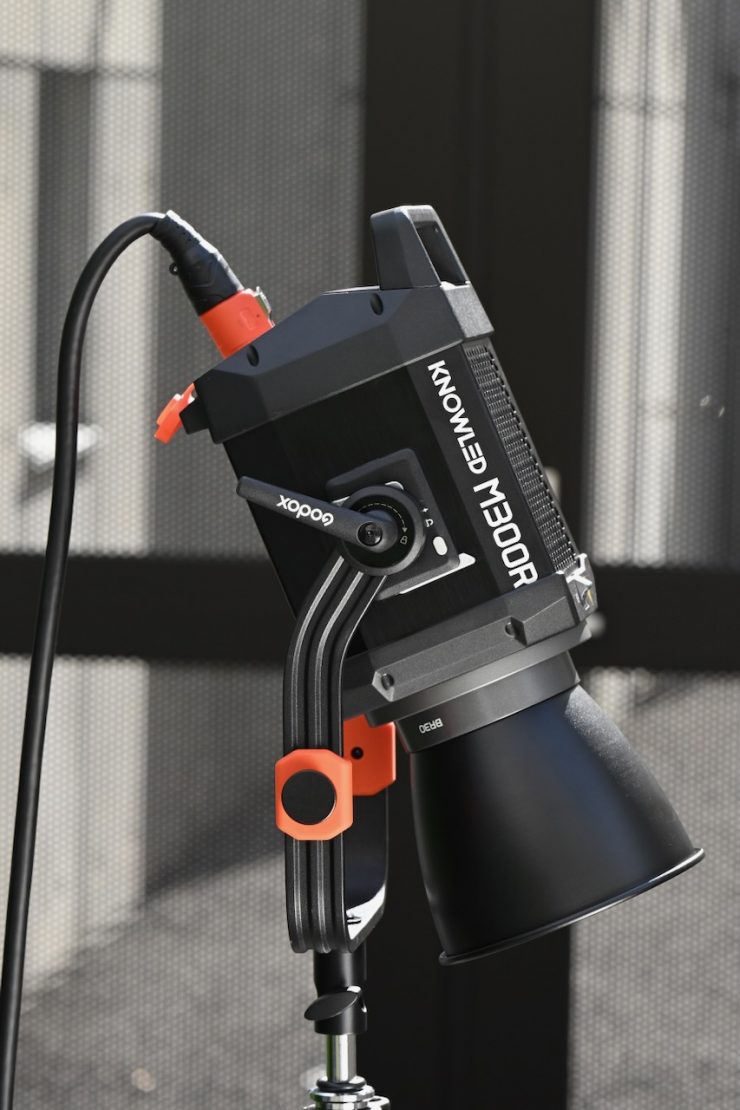
The yoke frame allows you to have a greater tilt range when light modifiers such as softboxes are attached.
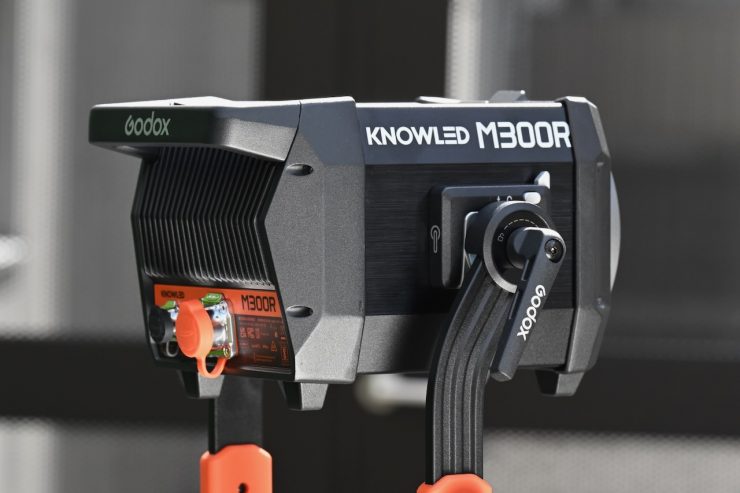
The single clutch lock works really well, and once you tighten it down, the light will not move, no matter how much force you put on it.
The yoke frame can be attached to a regular lightstand. The yoke frame is easily strong enough to hold the fixture and a Fresnel, or a large lighting modifier.
The Godox KNOWLED M300R comes with a mounting bracket in the kit that you can use to attach the power supply/controller to a light stand, etc. The power supply has a wedge plate on one of its sides that allows you to do this.
Bowens Mount

The M300R features a common Bowens-S mount so you can use it with a wide array of affordable lighting modifiers. I would have preferred to have seen a locking Bowens mount like you find on the Aputure STORM 400x.
Power Draw
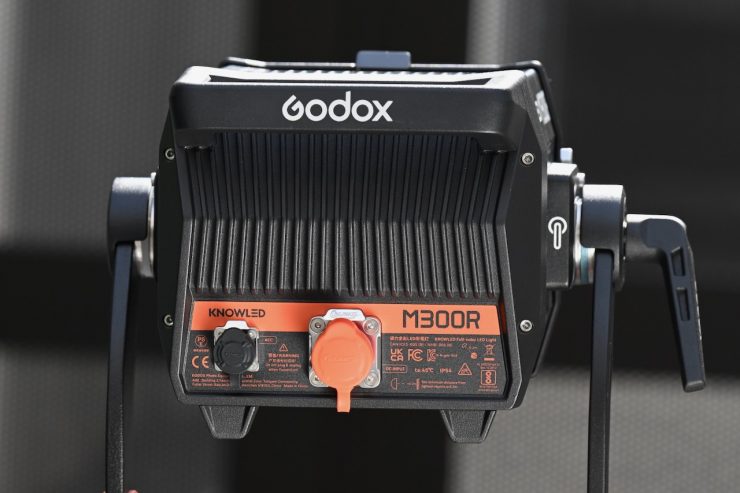
The Godox KNOWLED M300R draws 460W. This does make the naming convention of the light a little unusual, as it’s closer to a 500W fixture than a 300W one.
Below, you can see how that compares against some other similar style lights.
| POWER DRAW | |
| Godox KNOWLED M300R | 460W |
| amaran 300c RGB LED Monolight | 360W |
| Nanlite FS-300C | 300W |
| GVM Pro SD300C | 300W |
| Aputure STORM 400x | 500W |
| Nanlite FC-500C | 500W |
| Godox Litemons LA300R | 330W |
As you can see, the Godox KNOWLED M300R has a similar power draw to lights like the Nanlite FC-500C and Aputure STORM 400x.
The Godox KNOWLED M300R can be powered via 100 to 240V AC power, or from the 2x V-mount battery plates on the power supply/controller. You have to be mindful that the power draw is 460W, so even with two 14.8V batteries, the max output will be capped at 87.2%. With one single 14.8V battery, it is limited to 61.8%.

Above, you can see what the max output percentage is when using one or two 14.8V V-mount batteries in he various dimming modes.
There is no 48V DC input, so you can’t power it via an external battery power station or a block battery.
How does it stay cool?
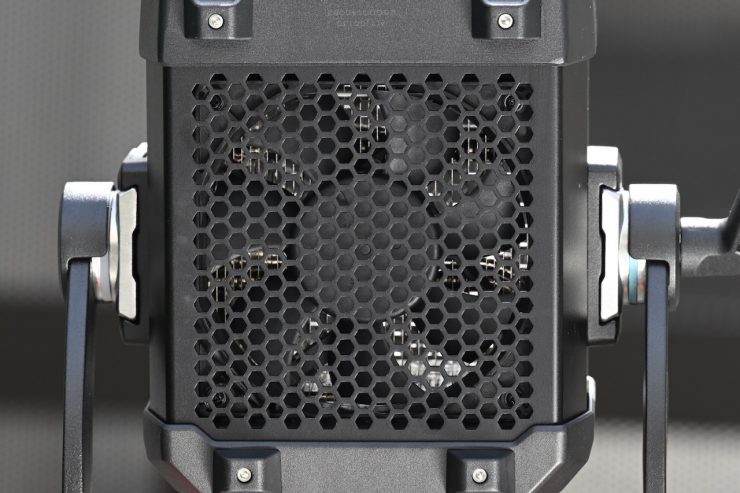
Large, high-powered COB lights get very hot, and keeping them cool is not an easy task. Using fans is the best solution, but the caveat with fans is that they can create noise.
The Godox KNOWLED M300R utilizes fans in both the light head and the power supply/controller. There are also large heatsinks on the top of the fixture.

Godox has included 4 Fan Modes:
- Off
- Auto
- Medium
- High
If you choose Auto mode, the fan speed changes depending on the temperature of the unit.
In High mode, the fans run at their maximum speed. Godox recommends that you turn this mode on if the ambient temperature exceeds 40° C.
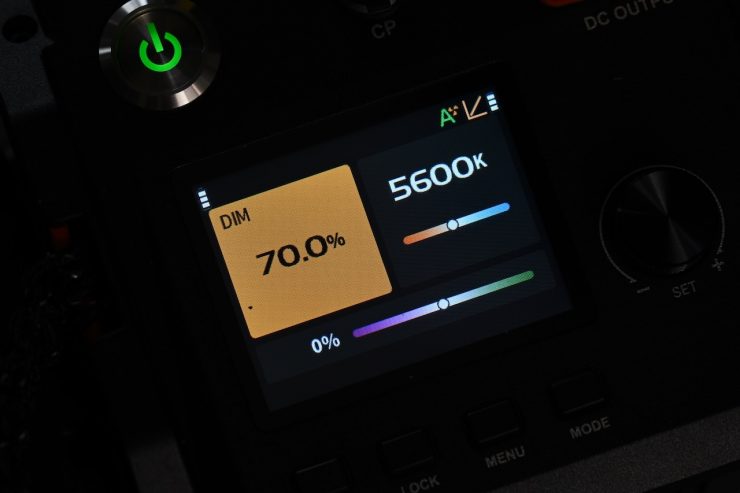
If you choose Medium mode, the fans run at relatively low speeds, and the output is limited to 70%.
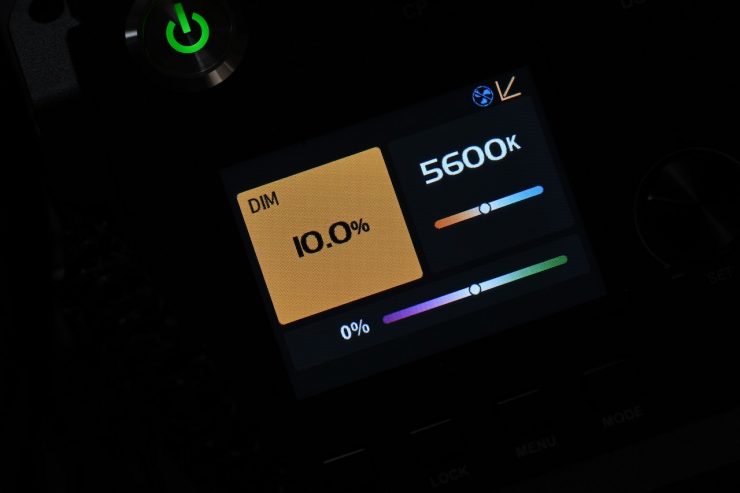
In Off mode, the fans run at their lowest levels, and the total output is reduced to just 10%.
Now, I personally found the fan noise to be pretty low considering the size and output of the fixture. If you are outdoors, I don’t think you will hear it. Even in a super quiet room, it is still barely audible.
Beam Angle

The KNOWLED M300R native beam angle is unknown, as Godox doesn’t list it. I reached out to Godox about this, and they told me that they haven’t measured it. The beam angle with the included reflector is a pretty tight 30°.
Controls & Menu System
The Godox KNOWLED M300R has a reasonably large LCD screen on the power supply controller that clearly shows you information about the light. While it is not a touchscreen, it is still pretty quick to access all the available lighting modes and make changes. It is an easy interface to use, even though it is a little basic.
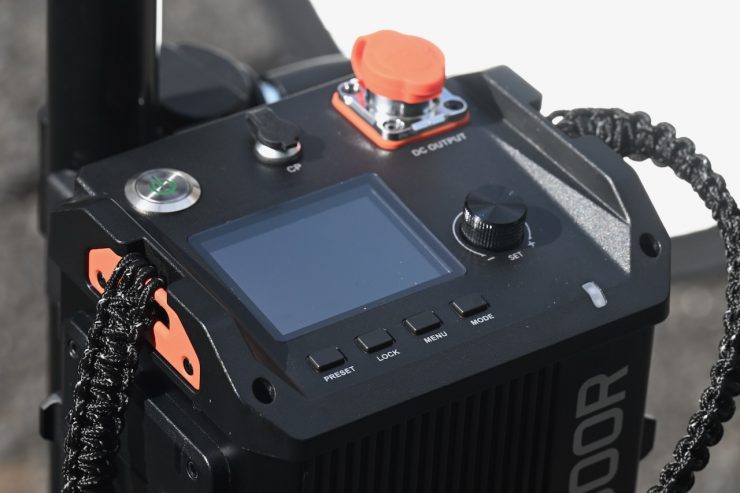
The screen is flat and located on the top of the power supply/controller, which can make it hard to see if it’s mounted quite high on a light stand. It does, however, make it easier to see if you have it placed on the ground.
Arguably, you could make a case that the light was primarily designed to be controlled through DMX, etc. than directly from the power supply/controller, and that is why the screen is where it is.
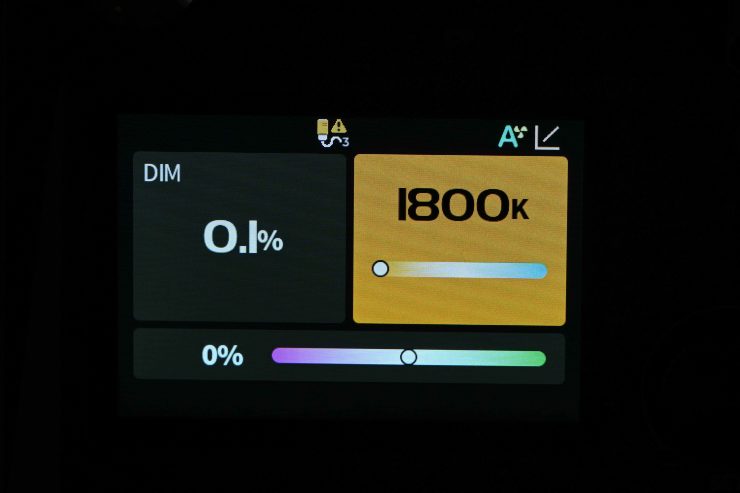
I would have preferred to have seen an upgraded and better operating system on such an expensive fixture. Having an operating system that is pretty much exactly the same as you will find on the affordable Godox Litemons systems, at least in my opinion, seems a little odd. Although in saying that, Godox presumably wanted to have a unified operating system for all of its fixtures.
Redesigning and improving on previous products is what lighting companies should be doing.
There are four buttons, a Select dial, and a power on/off switch on the power supply/controller.
With a good light, you shouldn’t have to read a manual to work out how to operate it. You should be able to turn it on and use it straight away. You won’t find any deep sub-menus or complicated way of making changes on the M300R. It was designed to be simplistic and easy to operate.
Menu Settings
There are quite a few different things you can change and adjust in the main menu.
Dimming Curves
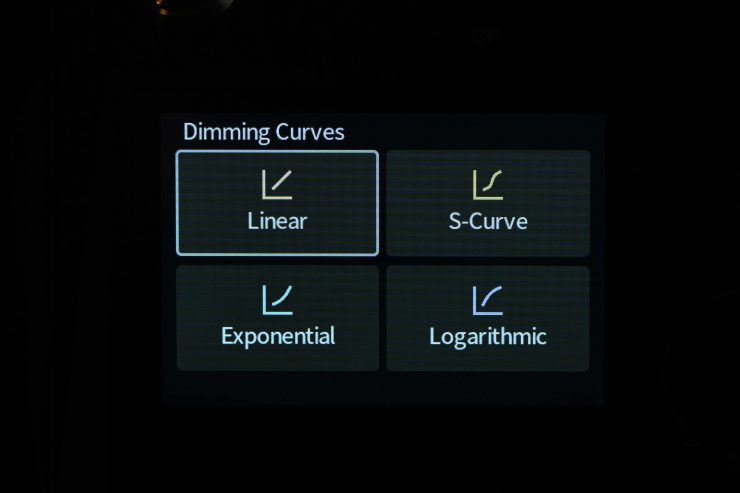
In Dimming Curves, you can choose from:
- Linear
- S-Curve
- Exponential
- Log
The light will dim right down to 0.1% which is certainly handy, but realistically, I don’t know how many people will actually run a fixture with this power draw and output at 0.1%, but it’s good to have that ability.
Control Mode
In Control Mode, you can choose between:
- Normal
- Low End
- Highspeed

Smoothing
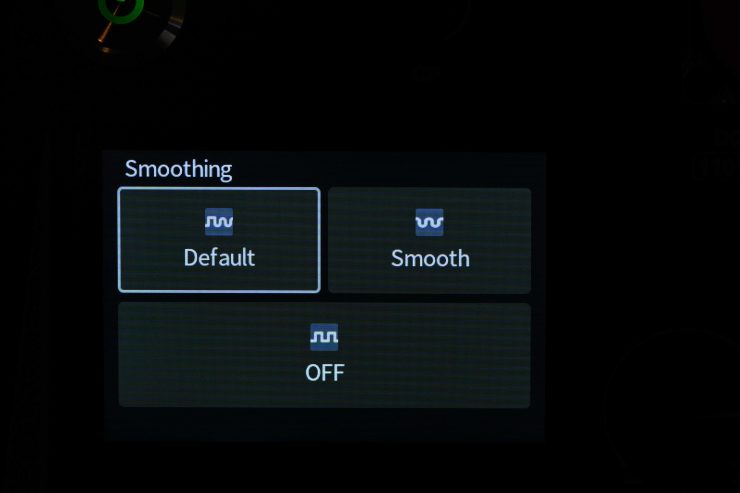
In Smoothing, you can choose between Default, Smooth, and Off.

Color Space
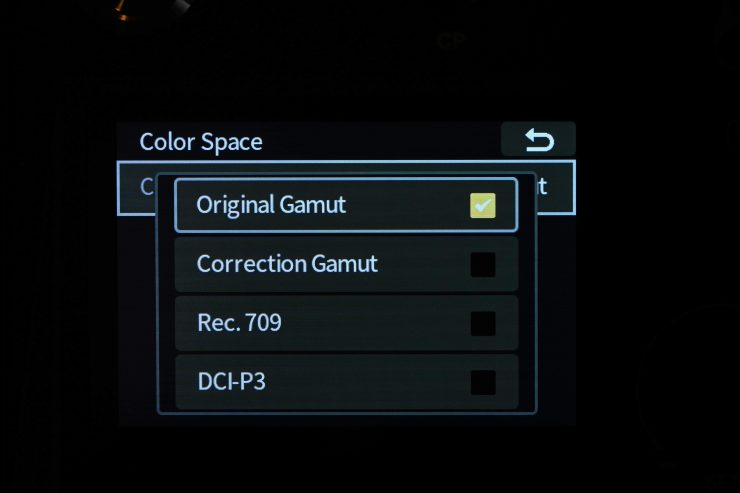
In Color Space, you can set the light to the following:
- Original Gamut
- Correction Gamut
- Rec.709
- DCI-P3
Fan Mode
As I mentioned earlier in the review, there are 4 different fan settings you can choose from.
- Off
- Auto
- Medium
- High
Operating Modes

The light has 6 key lighting modes:
- CCT
- HSI
- RGBW
- GEL
- xy
- FX
Correlated Color Temperature (CCT)
This is the mode most people are going to use the light in. In the CCT Mode, you have full access to making CCT adjustments between 1800-10,000K. This is a large range and it will suit most people’s needs.
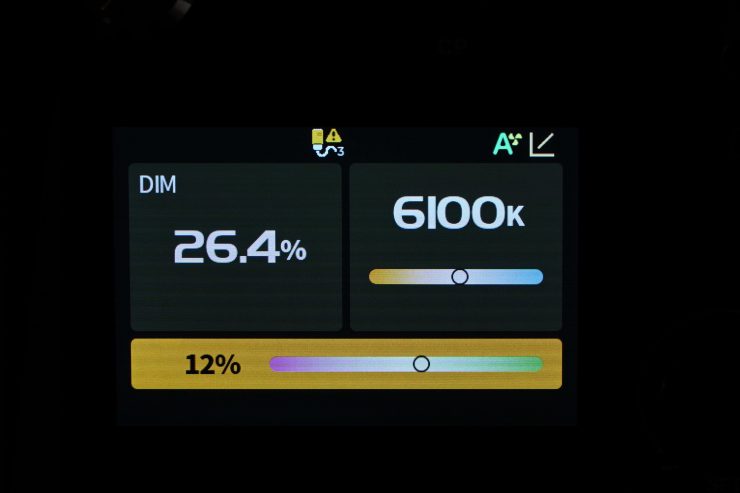
The fixture also has continuous variable (full minus green to full plus green) correction.
Being able to dial in more or reduce the amount of green coming from your lighting source can make a huge difference. Different camera companies use different sensors in their cameras, and they all react differently to light. Some camera sensors may lean towards magenta, and some, more towards green. By making CCT adjustments, you can dial in the light so that it looks better for whatever camera system you are using. G/M adjustment also helps when you are trying to match lights from different manufacturers.
HSI
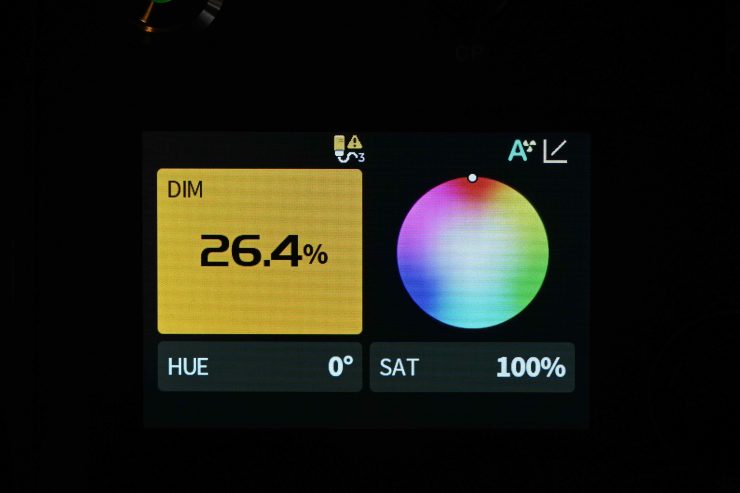
In HSI mode, you can individually control the Hue, Saturation, and Intensity.
RGBW
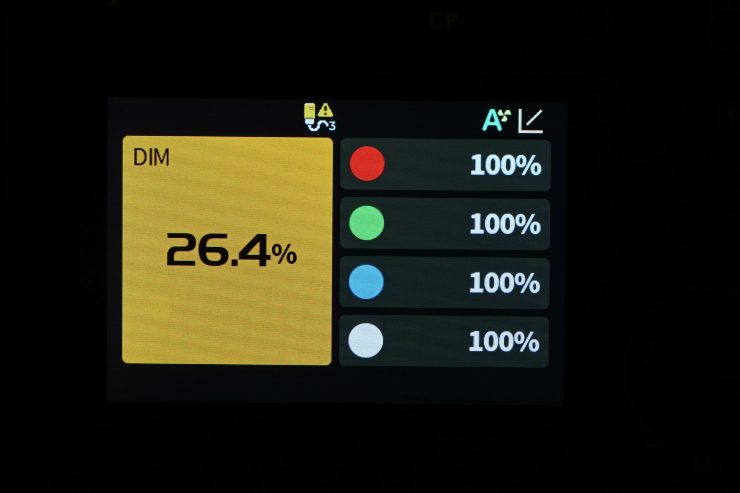
In RGBW mode, you can adjust the individual channels for Red, Green, Blue, and White.
GEL
In GEL mode, you can select from a wide array of Lee and Rosco digital filters.
xy
In xy mode, you can dial in exact xy coordinates. You have the ability to change the Gamut to DCI-P3, Black body, and Rec. 2020.
Dialing in xy coordinates is a fairly easy way to get a light to match other lighting sources, or at least get it in the ballpark.
FX
Like on most lights these days, you can choose from quite a few FX.
All the effects modes can be individually adjusted and tailored to your lighting needs.
Bluetooth App
The light can be controlled via Bluetooth using the Godox Light App.
You need to have Bluetooth turned on when using your smartphone or tablet. If you are using the light for the first time, you need to create a new Project.
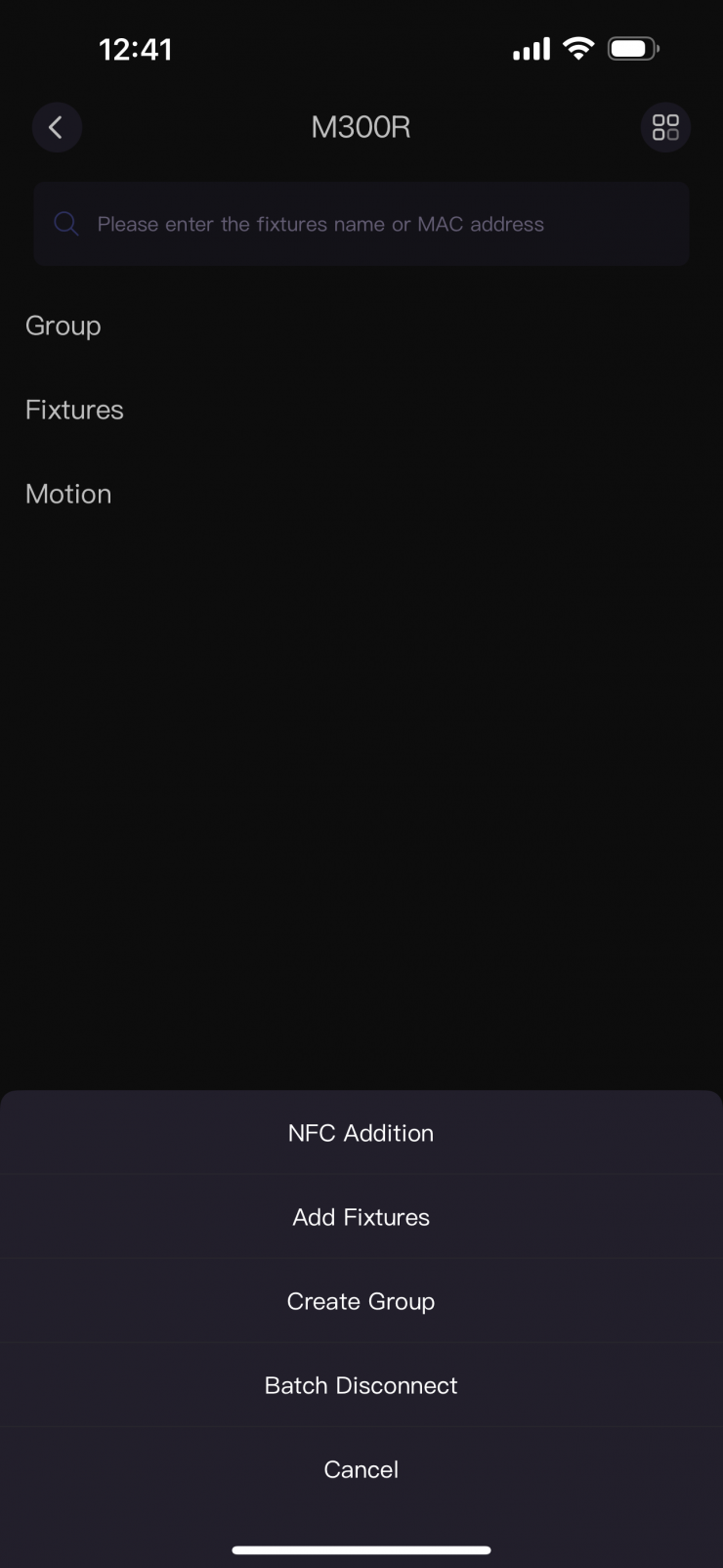
It will then ask you how you would like to look for the new fixture you want to add. In this example, I will click on Add Fixtures.
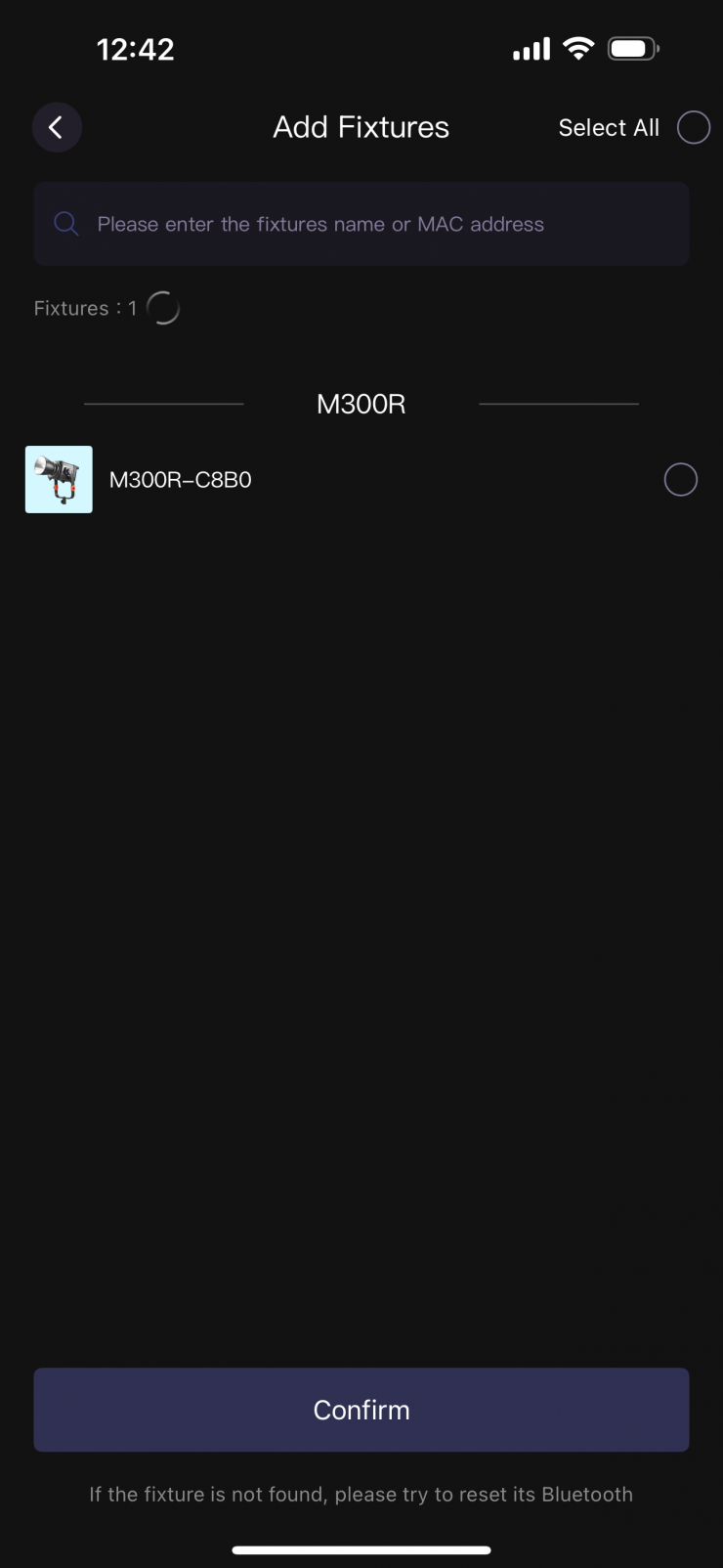
It will then find any fixtures that are turned on with their Bluetooth activated.
Once you select the fixture and hit confirm, it will set it up for use with the app.
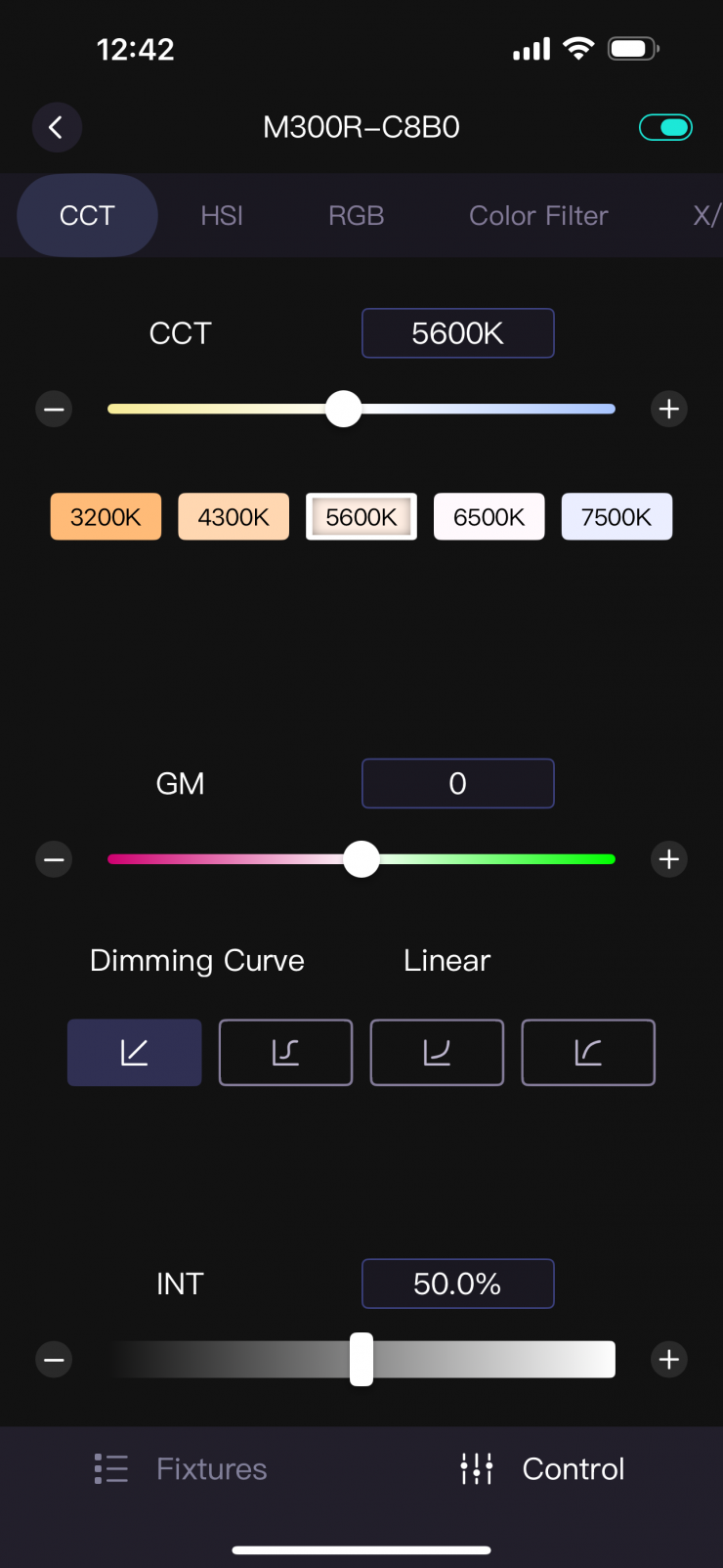
Once you tap on the fixture, you will be taken to the home screen of the app, where the light will be in the default CCT operating mode.
Here you can change the CCT and intensity, as well as the +/- G/M bias.
There is a range of parameters that you can adjust using the app.
You can also create a Scene where you can make a lighting diagram, which is handy if you have the time.
In the app, you also have the ability to change the fan speed. The issue I have is that the fan settings are not the same as what can be found on the fixture. This can lead to confusion.
Now, the other issue with the fan speed settings is that they aren’t reflected in the app when it comes to displaying the output level correctly. In the Medium Speed mode, the light is limited to 90% output, and in the Mute Mode (which should be labeled as Off), it is limited to 10%. However, the app will allow the output to be displayed at 100%. I am not sure why so many lighting companies can’t seem to get this right. I mentioned this to Godox, and they told me that this issue wil be addressed.
For the most part, the app is reasonably straightforward and easy to use, but it could be better.
RGBWW
We are seeing a lot of lighting companies now using RGBW technology. RGBW stands for Red, Green, Blue & Warm White. There are, however, other types of RGB, such as RGBWW, RGBAW, RGBACL, etc. The KNOWLED M300R utilizes RGBWW.
Connectivity
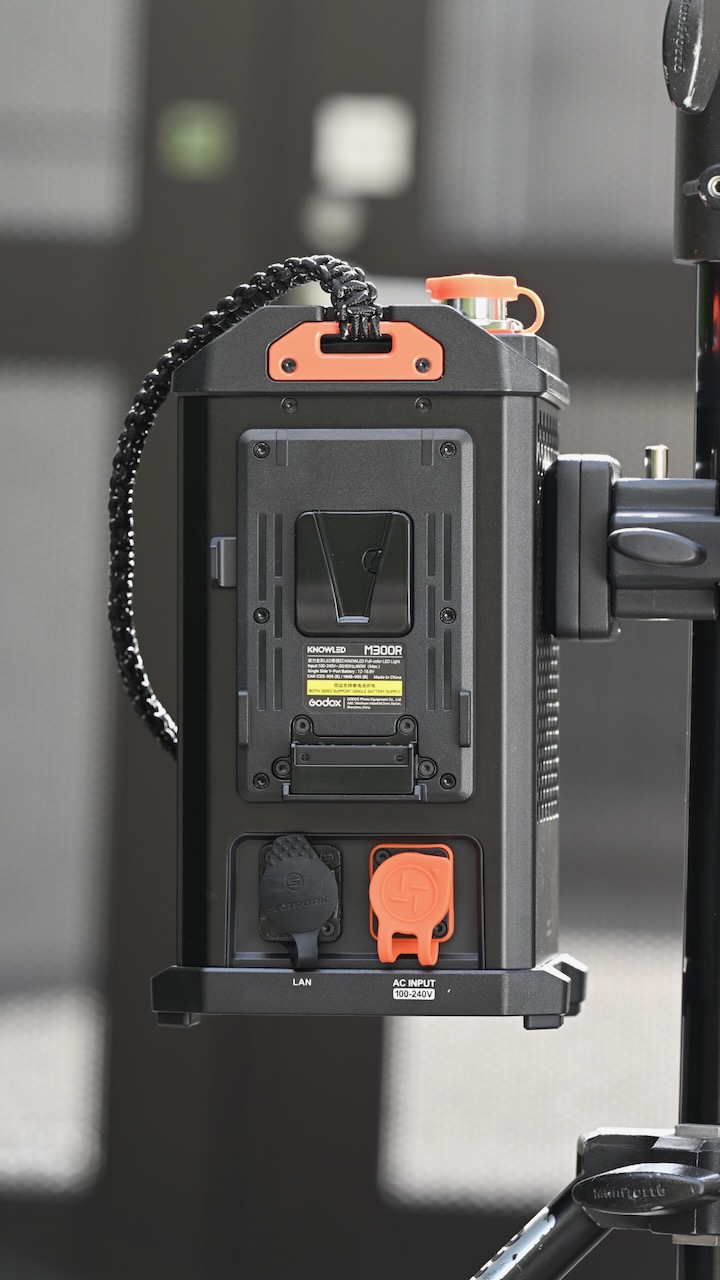
The M300R has the following connectivity on the back of the fixture:
- 1x XLR 5-Pin DMX Input
- 1x XLR 5-Pin DMX Output
- 1x RJ45 Network Input
- 1x USB-A Power/Firmware Input/Output (5 VDC)
You can use CRMX, Art-Net & Sacn, as well as DMX and Ethernet to control the fixture.
How does the Godox KNOWLED M300R compare to the Aputure STORM 400x?
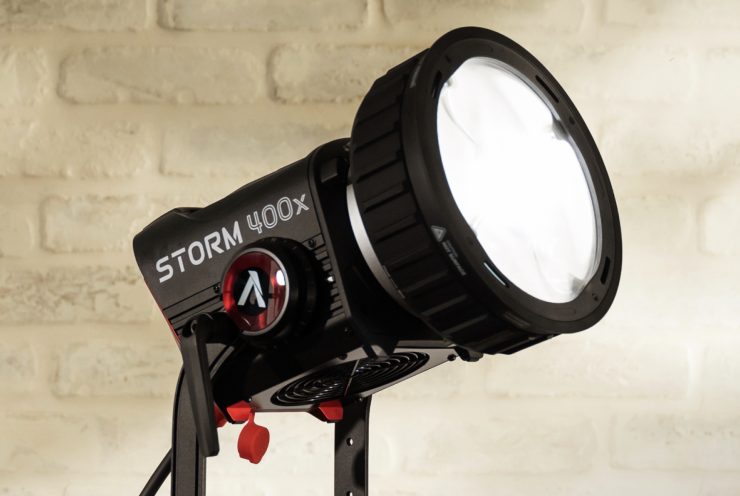
Yes, the Aputure STORM 400x isn’t technically a full color fixture, but nonetheless, it is certainly a light that most potential buyers would be comparing to the KNOWLED M300R.
Comparing products based on specification sheets never tells you the full story. Below you can see how they compare on paper, but I will let you have my honest opinion at the end of this review after we have looked at all of the data and the various feature sets, etc.
| Godox KNOWLED M300R | Aputure STORM 400x | |
| CCT Range | 1800-10,000K | 2300-10,000K |
| Light Engine | RGBWW | BLAIR |
| +/- GM | Yes | Yes |
| HSI | Yes | Yes |
| Gels | Yes | No |
| xy | Yes | Yes |
| Effects | Yes | Yes |
| Mount | Bowens-S Mount | Bowens-S Mount with Prolock |
| Power Draw | 460W | 500W |
| App Control | Yes | Yes |
| Battery Plate | Yes | Yes |
| Weight | 6.7kg / 14.77 lb (excluding yoke) | 6.95kg / 15.32 lb |
On paper, there is not a huge difference between the two fixtures when it comes to the power draw, physical size, and weight. It is important to note that the Godox M300R is a full color fixture, while the Aputure STORM 400x technically isn’t.
Photometrics
So now let’s get to the photometric results. I always test lights in this way so that I get a reference to how they compare to other fixtures. Results only tell part of the story and should never be used alone to judge a light. I have found from extensive testing over the years that certain lights that have good photometric results don’t always look good, and lights that have worse photometric scores can sometimes look better than their results indicate.
You can’t judge a light from one set of photometric results. You have to look at all of the different results to be able to come to a conclusion. Judging a light on one set of results is like reading one chapter in a book and thinking you know the whole story.
Different lights can also look different depending on what camera you happen to be using.
Output & Color Temperature Accuracy
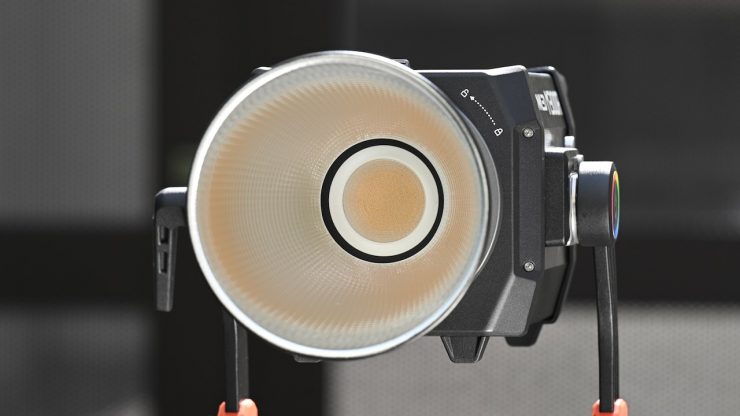
Godox claims that the M300R can output 101,000 Lux @1m / 3.3′ when set at 5600K and used with its 30° reflector.
Above you can see the claimed output at various CCT settings when the light is used open face and with its included reflector.
I tested the M300R at a variety of CCT settings with a Sekonic C-800 Spectrometer to find out how much output the light had and how accurate the CCT reproduction was. All readings are taken at a distance of 1m / 3.3ft in a controlled environment. The readings were all taken directly from the lighting source. In the case of using the light with a reflector, the readings were taken from the edge of those attachments. This is how I test all lights, and this is why you will sometimes see a discrepancy between claimed figures and my measured figures.
So just how much output does it have, and how CCT accurate is it? Well, let’s find out.
Open Face
Godox KNOWLED M300R 5600K (open face)
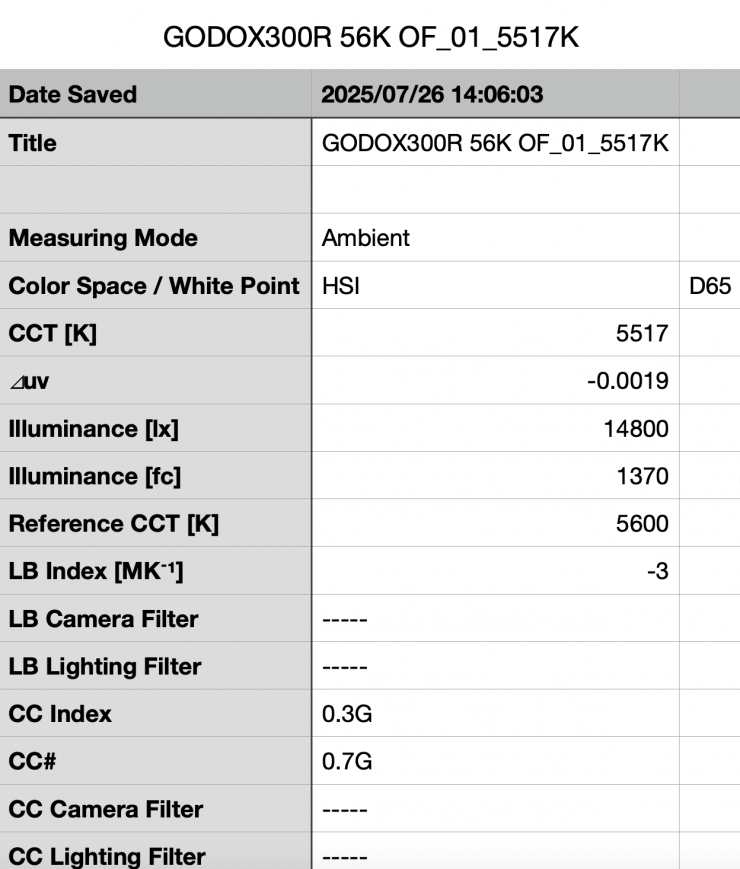
Above, you can see the KNOWLED M300R recorded an output of 14,800 lx (1370 fc) when set at 5600K and used open face. The reading of 14,800 lx @ 1m / 3.3′ exceeded the claimed figures listed by Godox.

The light recorded a CCT reading of 5517K, which was pretty good.
Godox KNOWLED M300R 3200K (open face)
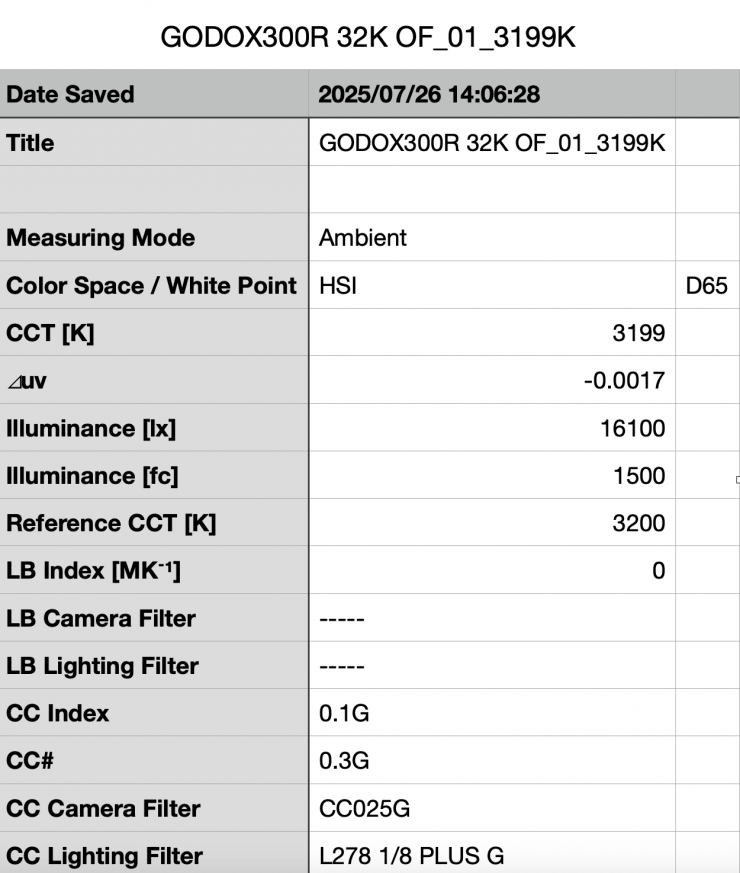
Above, you can see that the light’s output when it was set at 3200K in the open face configuration was 16,100 lx (1500 fc), which was 8.78% more than it produced at 5600K.
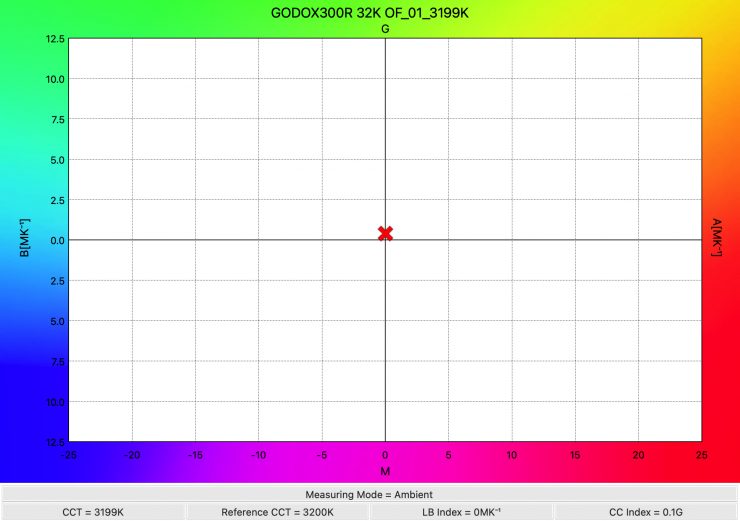
As far as CCT accuracy goes, it recorded an almost perfect reading of 3199K.
Summary of results (Open Face)
| SETTING | OUTPUT @1m | CCT READING |
| 2500K | 13,000 lx | 2552K |
| 3200K | 16,100 lx | 3199K |
| 4500K | 15,100 lx | 4522K |
| 5600K | 14,800 lx | 5517K |
| 6500K | 13,900 lx | 6477K |
| 8000K | 13,200 lx | 8075K |
| 10000K | 12,600 lx | 10106K |
These results show me that the light’s output varies by 27.77% depending on what CCT temperature you are using.
The CCT accuracy across the range was excellent. It was no more than 106K off being correct at any CCT setting.
Godox KNOWLED M300R 5600K (Reflector)

Above, you can see the KNOWLED M300R recorded an output of 79,700 lx (7400 fc) when set at 5600K and used with its reflector. This is a lot of output for a light of this size, but it is at a rather tight beam angle of 30 degrees.
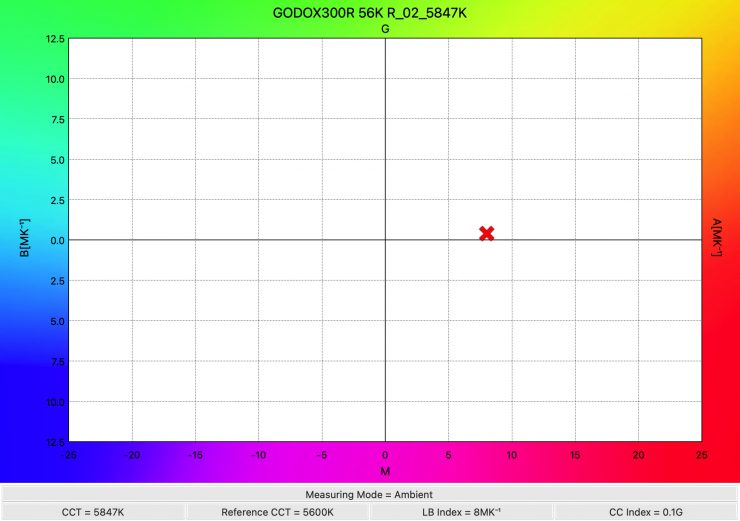
The light recorded a CCT reading of 5847K, which was almost 350K off being correct. This shows me that the included reflector alters the CCT by quite a lot when the light is set at 5600K.
Godox KNOWLED M300R 3200K (Reflector)
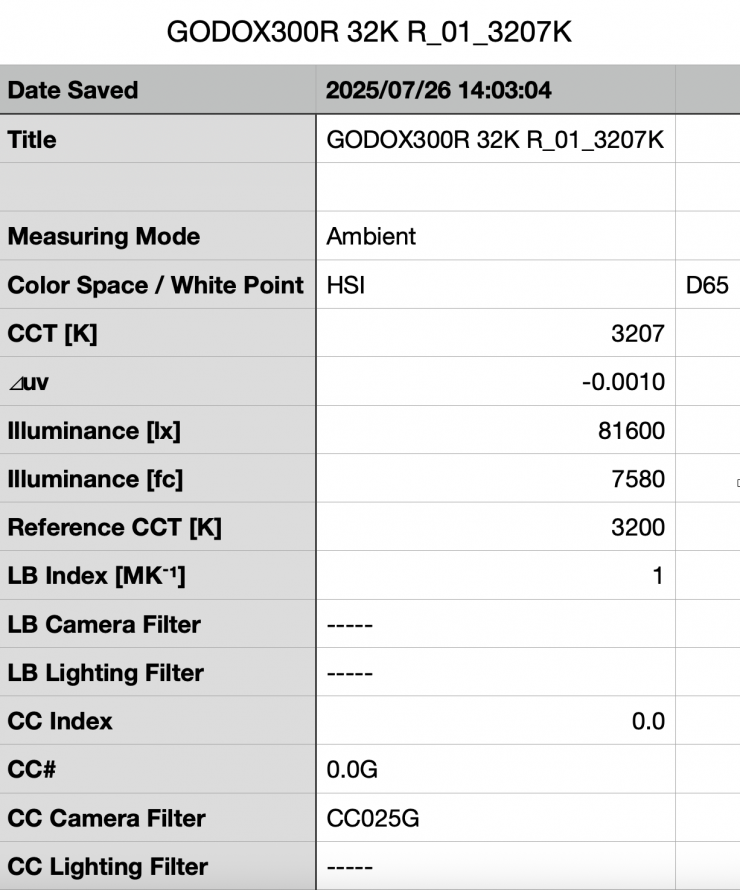
Above, you can see that the light’s output when it was set at 3200K and used with its reflector was 81,600 lx (7580 fc), which was 2.38% more than it produced at 5600K.
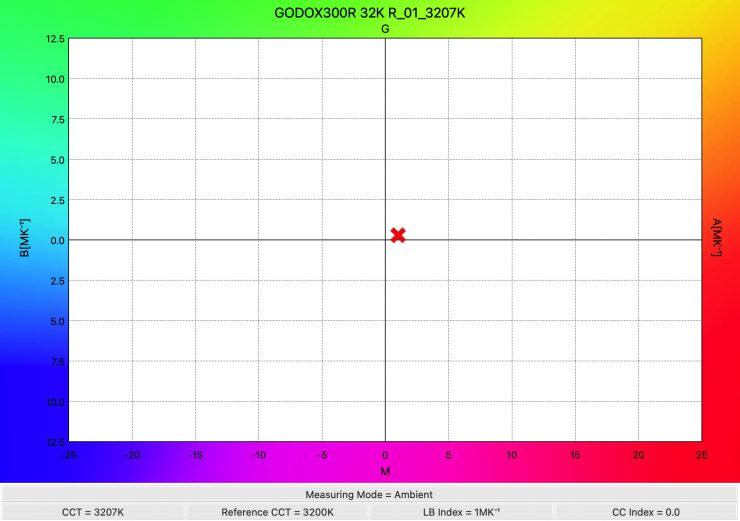
As far as CCT accuracy goes, it recorded an almost perfect reading of 3207K.
Summary of results (Reflector)
| SETTING | OUTPUT @1m | CCT READING |
| 2500K | 67,000 lx | 2534K |
| 3200K | 81,600 lx | 3207K |
| 4500K | 78,400 lx | 4680K |
| 5600K | 79,700 lx | 5847K |
| 6500K | 72,500 lx | 6884K |
| 8000K | 69,600 lx | 8749K |
| 10000K | 66,600 lx | 11345K |
These results show me that the light’s output varies by 22.52% depending on what CCT temperature you are using.
The CCT accuracy across the range was excellent at 2500 and 3200K, but then it started to fall away.
So, let’s have a look at how the output @1m / 3.3′ compares to the Nanlite FC-500C.
| Output at 5600K | CCT (K) | |
| Godox KNOWLED M300R | 79,700 lx (30° Reflector) | 5847K |
| Nanlite FC-500C | 47,600 lx (55° Reflector) | 5624K |
| Aputure STORM 400x | 64,600 lx* (Hyper Reflector 35°) | NA |
*Claimed output. Not independently tested.
What about if we change the Color Gamut?
The light has the ability to change the Color Gamut it operates in. I did a couple of quick tests to see if anything changed. For all of the previous tests, the light was set in its Standard Gamut.
Godox KNOWLED M300R 5600K (30° Reflector) Rec.709
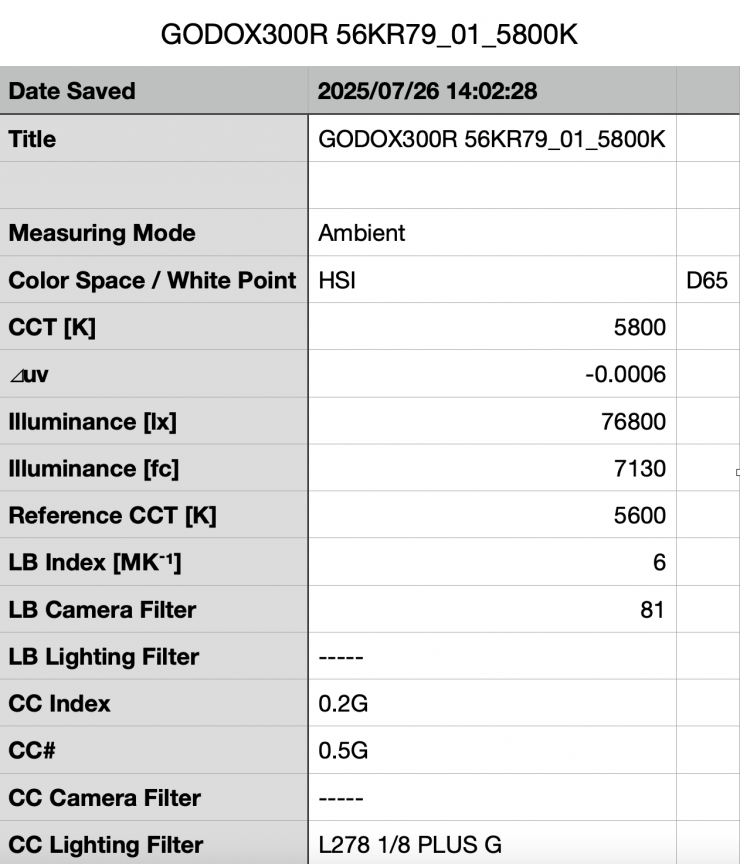
Above you can see the light’s output when it was set at 5600K with the 30° reflector, and in the Rec.709 Gamut mode was 76,800 lx (7130 fc) @1m 3.3′, which was 2,900 lx less than what it output in the Standard Gamut mode.
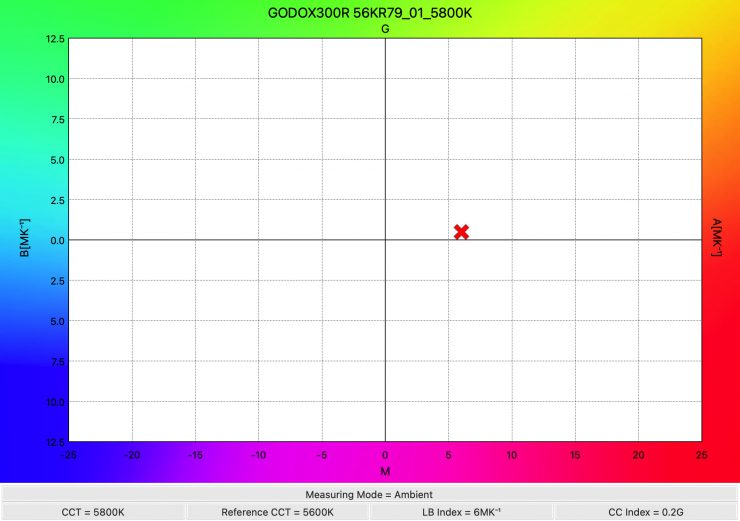
As far as CCT accuracy goes, it recorded a reading of 5800K, which was only 47K different from what it recorded in the Standard Gamut mode.
Godox KNOWLED M300R 5600K (30° Reflector) DCI-P3
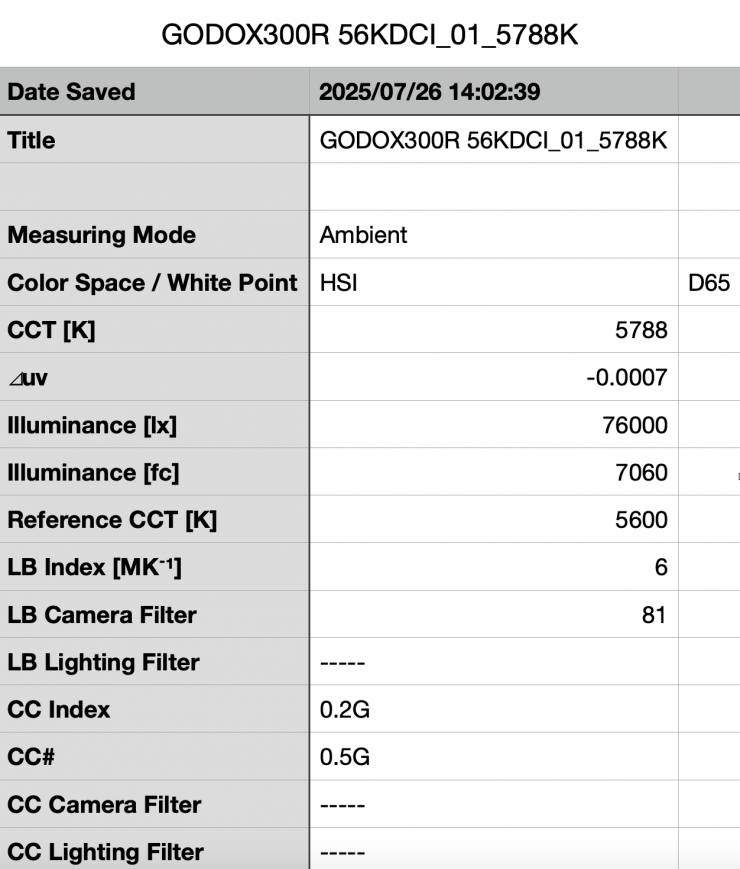
Above, you can see the light’s output when it was set at 5600K with the reflector and in the DCI-P3 Gamut mode was 76,000 lx (7060 fc) @1m 3.3′, which was 800 lx less than the output in the Rec.709 Gamut mode.
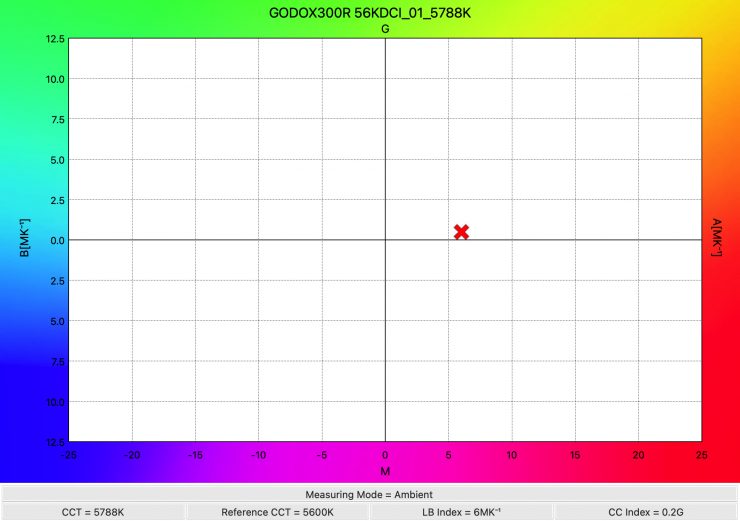
As far as CCT accuracy goes, it recorded a reading of 5788K, which was 12K different from what it recorded in the Rec.709 Gamut mode.
Godox KNOWLED M300R 5600K (30° Reflector) Corrected Gamut
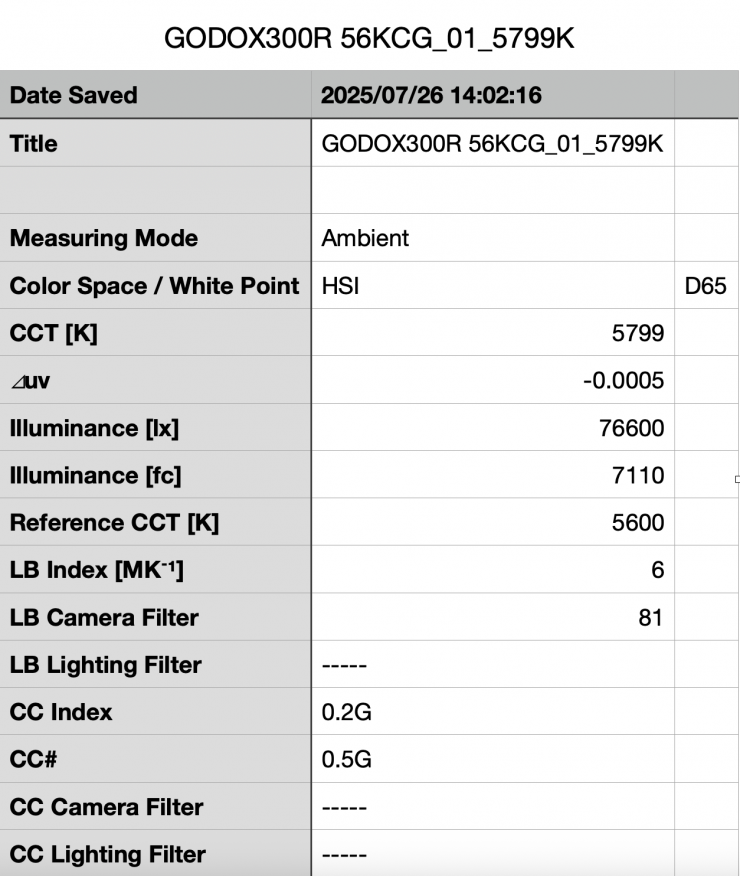
Above, you can see the light’s output when it was set at 5600K with the reflector and in the Corrected Gamut mode was 76,600 lx (7060 fc) @1m 3.3′, which was 600lx more than the output in the Rec.709 Gamut mode.

As far as CCT accuracy goes, it recorded a reading of 5799K, which was 19K different from what it recorded in the Rec.709 Gamut mode.
What these results tell me is that the light’s CCT accuracy and output don’t get affected much when using the light in the different Gamut settings.
Various Fan Modes
Godox KNOWLED M300R 5600K (30° Reflector) Fan Medium

Above you can see the light’s output when it was set at 5600K in its Medium Speed Fan mode, with the reflector was 70,000 lx (6500 fc) 1m / 3.3′. This was 12.17% less than the 79,700 lx it produced at 5600K when used in its Auto or High Speed Fan modes. Godox states that the light can only operate at a max of 90% output when used in the Medium Speed fan mode, and I found this to be pretty accurate.
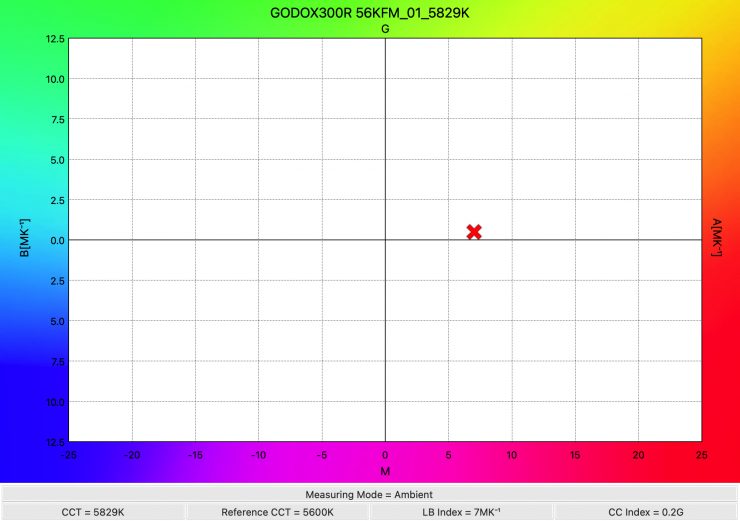
As far as CCT accuracy goes, it recorded a very accurate reading of 5829K. The CCT accuracy when using the light in its Medium Fan speed setting was slightly better than when using it in its High Speed or Auto fan setting.
Godox KNOWLED M300R 5600K (30° Reflector) Fan Off
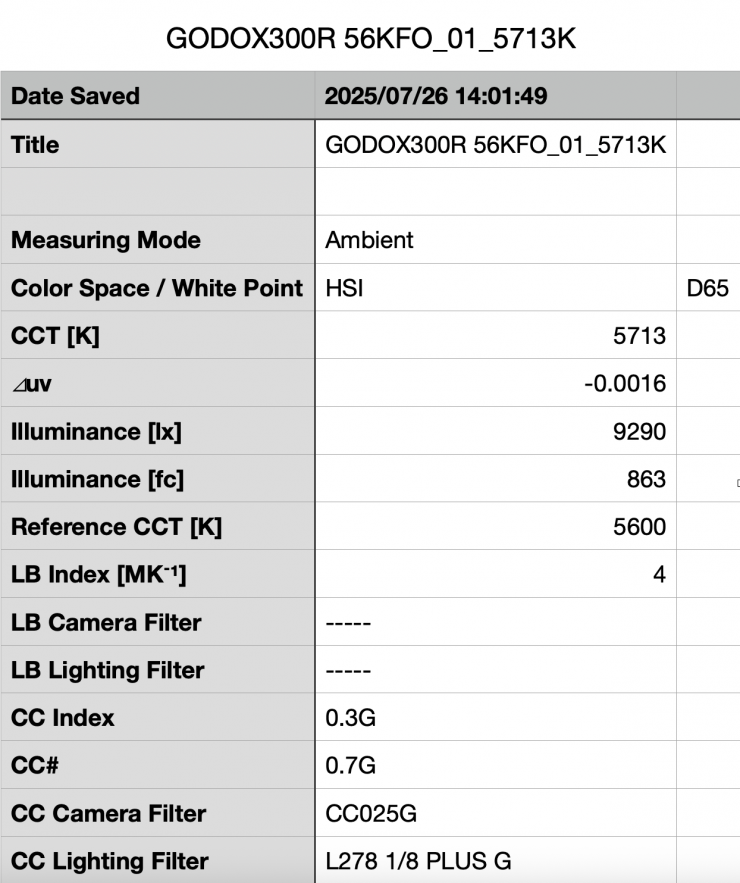
Above, you can see the light’s output when it was set at 5600K with the reflector and used in the Fan Off mode was 9,290 lx (863 fc) @1m / 3.3′. This was 88.34% less than when used in the High Speed or Auto fan settings. Godox states that the light only operates at 10% of its max output when the fan is set to Off, and I found that to be accurate.
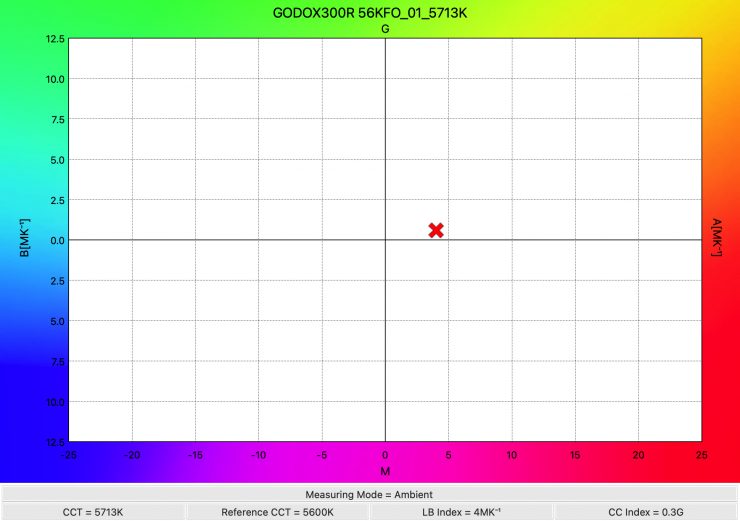
As far as CCT accuracy goes, it recorded a reading of 5713K, which was better than when the light’s fan is set to High, Auto, or Medium.
High-Speed Mode
The Godox KNOWLED M300R has a little trick if you want even more output. If you use the light in the High-Speed Mode, you can squeeze out a few more lux.
Godox KNOWLED M300R 5600K (30° Reflector) High-Speed Mode
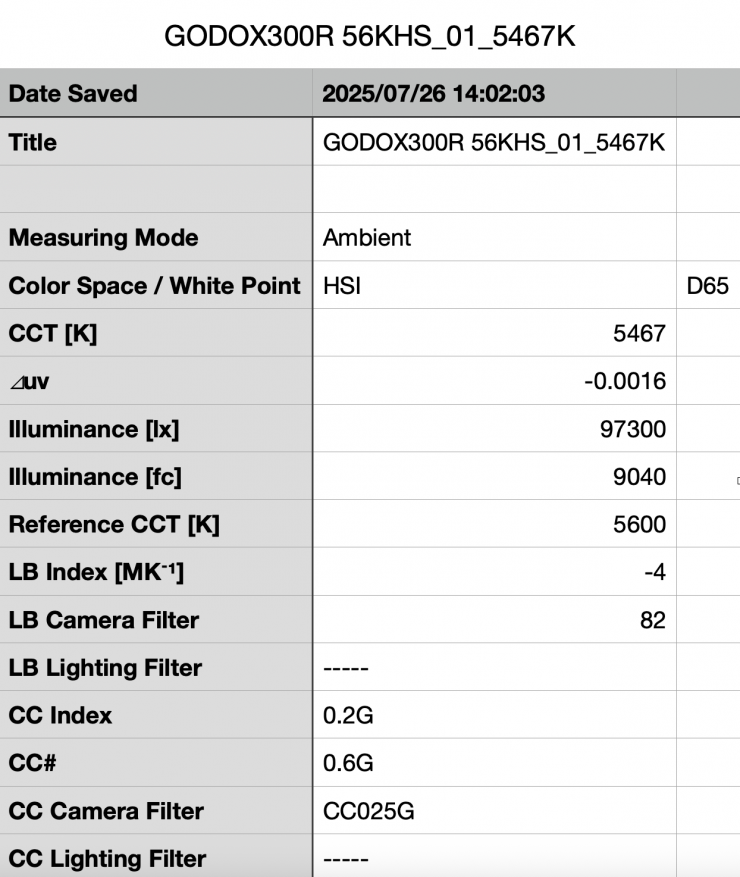
Above you can see the light’s output when it was set at 5600K with the wide reflector in the High-Speed Mode was 97,300 lx (9040 fc) @1m / 3.3′, which was 22.08% more than what it output at 5600K with the High-Speed Mode turned off.
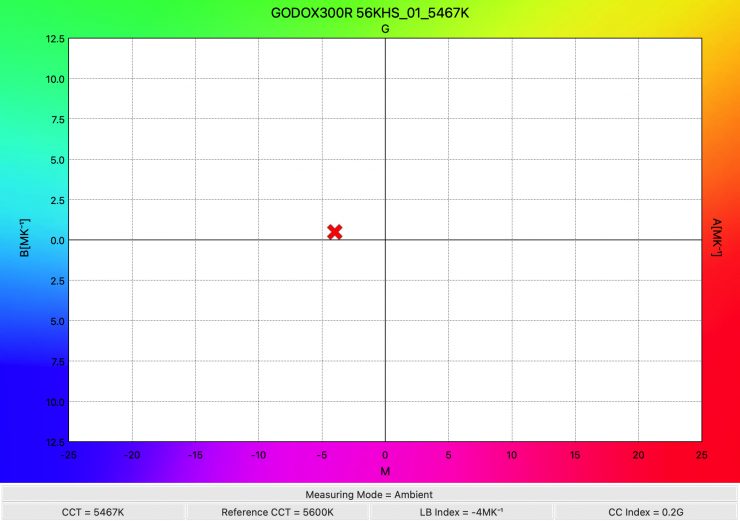
What I found in the High-Speed Mode is that the CCT value was more than 375K different than when the High Speed mode is turned off. Strangely, though, it was more CCT accurate in his mode.
Running it via Batteries
As the Godox KNOWLED M300R can be run remotely via V-mount batteries, I also wanted to see how much output you could get by doing this.
Godox KNOWLED M300R 5600K (30° Reflector) 1x 14.8V V-mount Battery
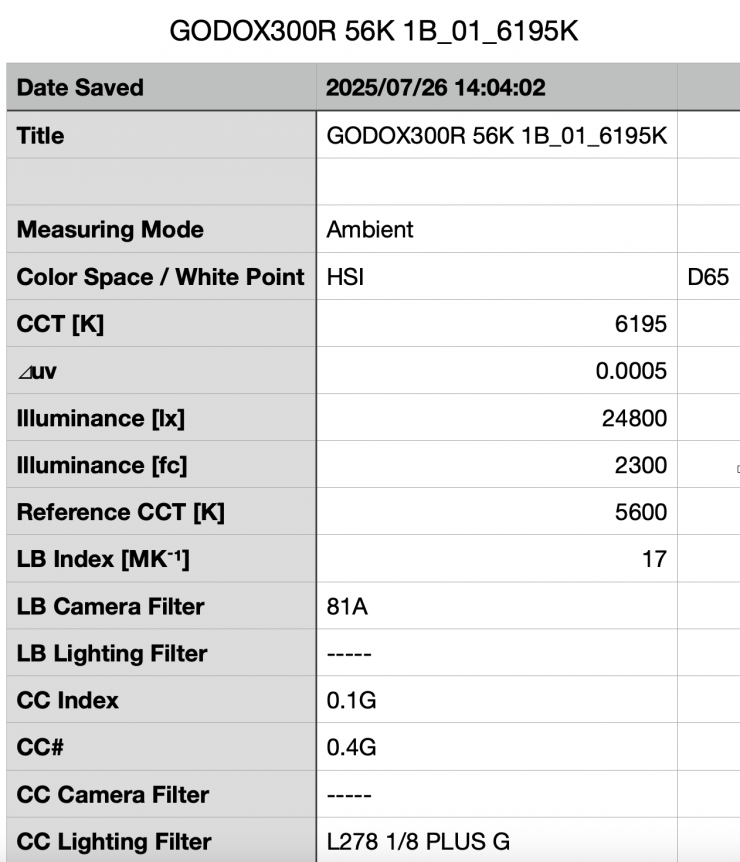
Above you can see the light’s output when it was set at 5600K with the wide reflector and using a single 14.8V V-mount battery was 24,800 lx (2300 fc) @1m / 3.3′, which was 68.88% less than what it output at 5600K when run off mains power. Now, Godox states that when using a single 14.8V V-mount battery, regardless of its capacity, the light can only be run at a maximum of 30%.
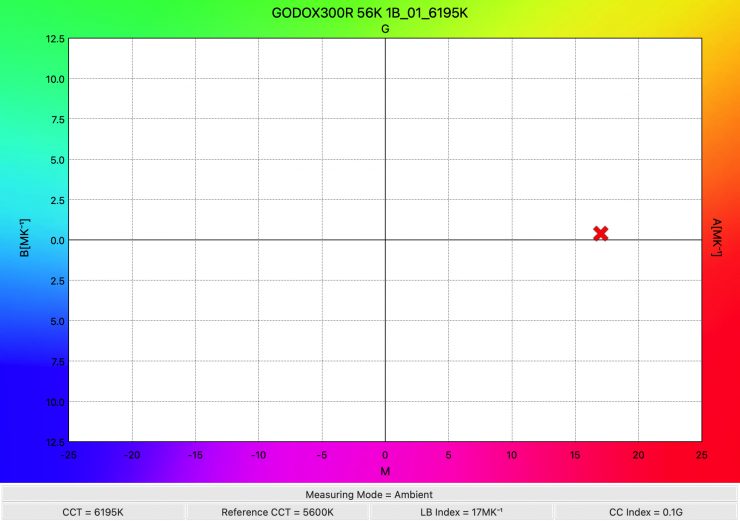
The CCT reading was pretty horrible when running it via a single 14.8V battery. It gave me a reading of 6195K, which was almost 600K off being correct.
Godox KNOWLED M300R 5600K (30° Reflector) 2x 14.8V V-mount Battery
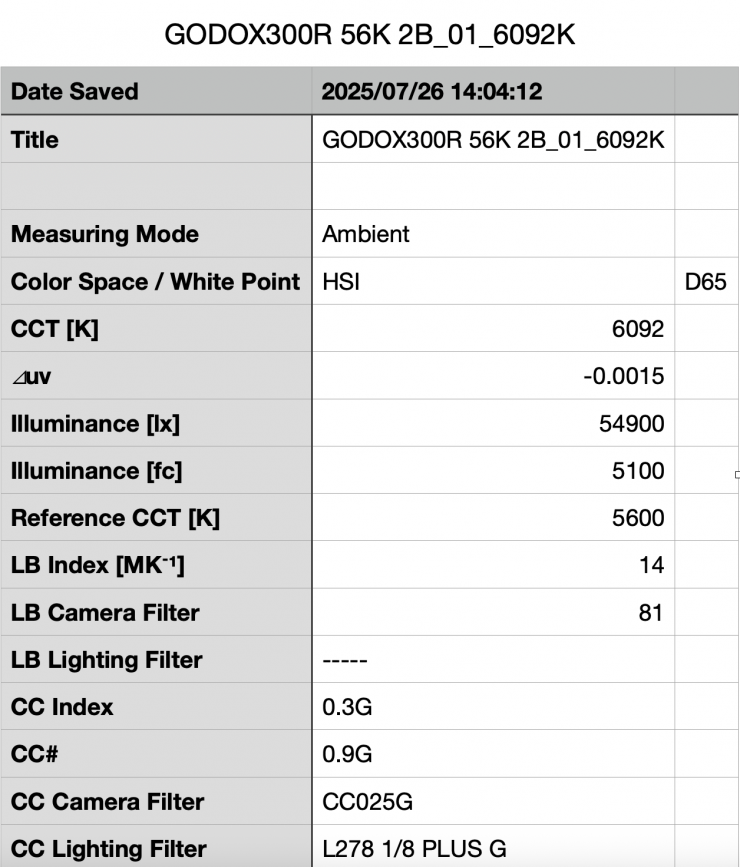
Above you can see the light’s output when it was set at 5600K with the wide reflector and using two 14.8V V-mount batteries was 54,900 lx (5100 fc) @1m / 3.3′, which was 31.11% less than what it output at 5600K when run off mains power. Now, Godox states that when using two 14.8V V-mount batteries, regardless of their capacity, the light can only be run at a maximum of 70%.
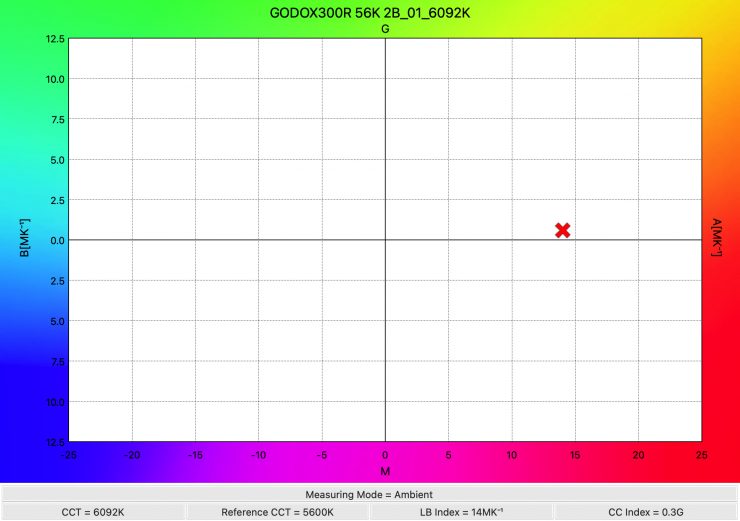
The CCT reading was pretty horrible when running it via a single 14.8V battery. It gave me a reading of 6092K, which was almost 500K off being correct.
AS the capacity of the V-mount batteries doesn’t seem to matter too much, I found that even if I just used two 150Wh V-mount batteries, I could still run the light at 70% output. This is good news, as with two flight-safe batteries, you can still get a ton of output from this fixture.
CCT consistency & linear output when dimming the light
Now, what you should always do when testing lights is to see if the CCT remains consistent when dimming the light. Just because you set a light at say 5600K, that doesn’t mean that the CCT will remain stable as you start dimming the fixture down. I also wanted to see how linear the dimming curve was.
The Godox KNOWLED M300R has several dimming modes, as I previously mentioned earlier in the review.
I decided to do a series of tests at 100%/75%/50%/25%10% to see if the CCT being recorded changed. This was performed at a distance of 1m / 3.3′ using a Sekonic C-800. These tests were done at 5600K with the 30° reflector and the light set in its Linear dimming mode.
| CCT READING | OUTPUT | INTENSITY % |
| 5847K | 79,700 lx | 100 |
| 6029K | 59,000 lx | 75 |
| 6043K | 39,600 lx | 50 |
| 6003K | 21,000 lx | 25 |
| 5707K | 9240 lx | 10 |
The M300R had ok CCT consistency as you start dimming the fixture. My testing showed that the CCT readings varied by 336K.
As far as how linear the output is when you start dimming the light, at 50% output, it had 50.31% less output than when used at 100%. At 25% it had 73.65% less output than when used at 100%. At 10% output, it had 88.40% less output than when used at 100%. This shows me that the light’s dimming curve is very linear.
Color Rendering
So now that we have seen how much output the Godox KNOWLED M300R produces, how does it perform when it comes to replicating accurate colors?
Godox KNOWLED M300R 5600K (30° Reflector)
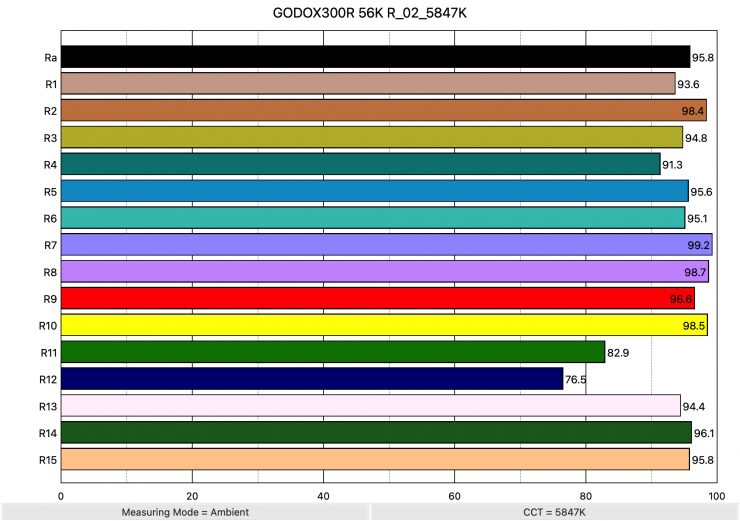
Above, you can see that when the light was set at 5600K using the reflector, it recorded an average CRI (R1-R8) of 95.8 and an extended CRI (R1-R15) of 93.83. For replicating accurate skin tones, it recorded 96.6 for R9 (Red), 94.4 for R13 (closest to caucasian skin tones), and 95.8 for R15 (closest to Asian skin tones). These were pretty good results. R11 (Green) and R12 (Blue) were both under 90.
| EXTENDED CRI | R9 | R13 | R15 | |
| Godox KNOWLED M300R | 93.83 | 96.6 | 94.4 | 95.8 |
| Nanlite FC-500C | 93.3 | 96.7 | 98.7 | 97.3 |
As a comparison, above you can see how the results for the M300R compare to the Nanlite FC-500C.
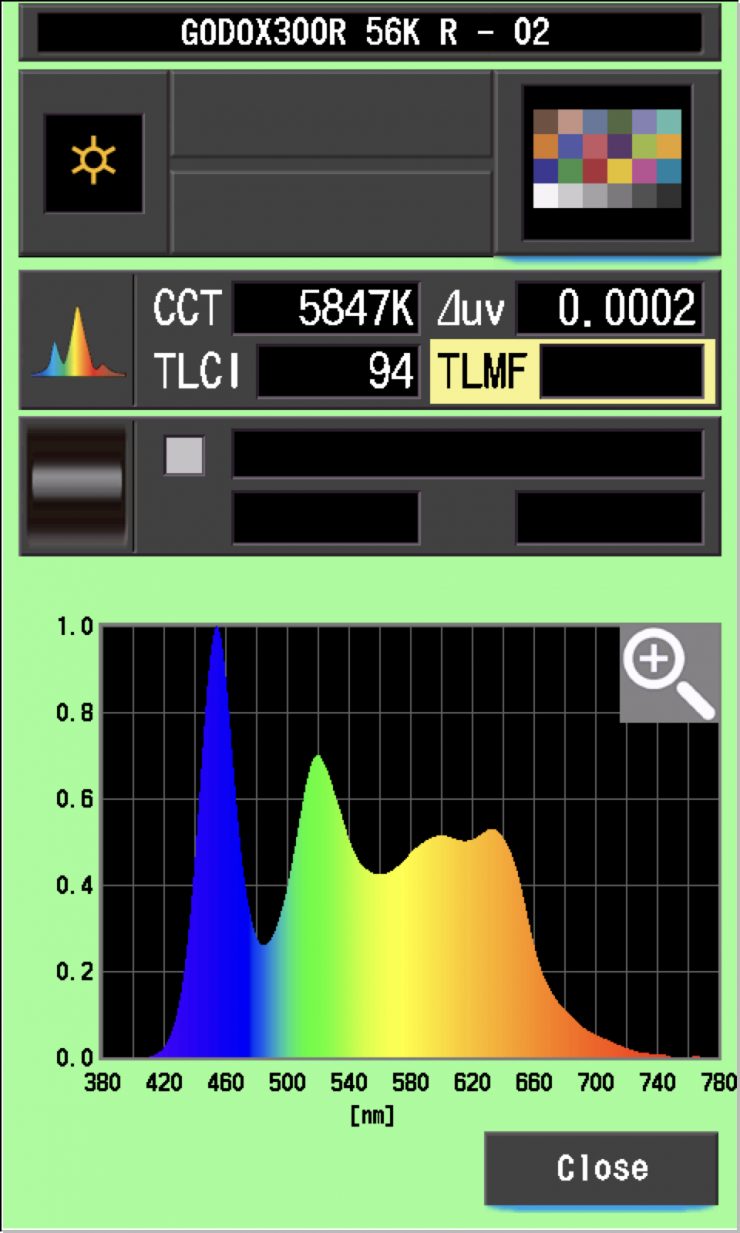
The M300R, when set at 5600K, recorded a TLCI score of 94.
Godox KNOWLED M300R 3200K (30° Reflector)
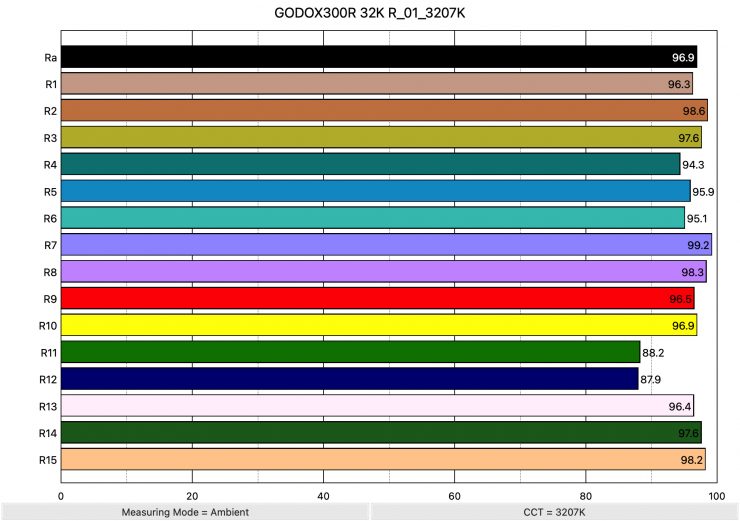
Above, you can see the scores for when the light was used at 3200K. It recorded an average CRI (R1-R8) of 96.9 and an extended CRI (R1-R15) of 95.8. For replicating accurate skin tones, it recorded 96.5 for R9 (Red), 96.4 for R13 (closest to caucasian skin tones), and 98.2 for R15 (closest to Asian skin tones). Just like at 5600K, both R11 (green) and R12 (Blue) were below 90.
These results were better than when the light was used at 5600K.
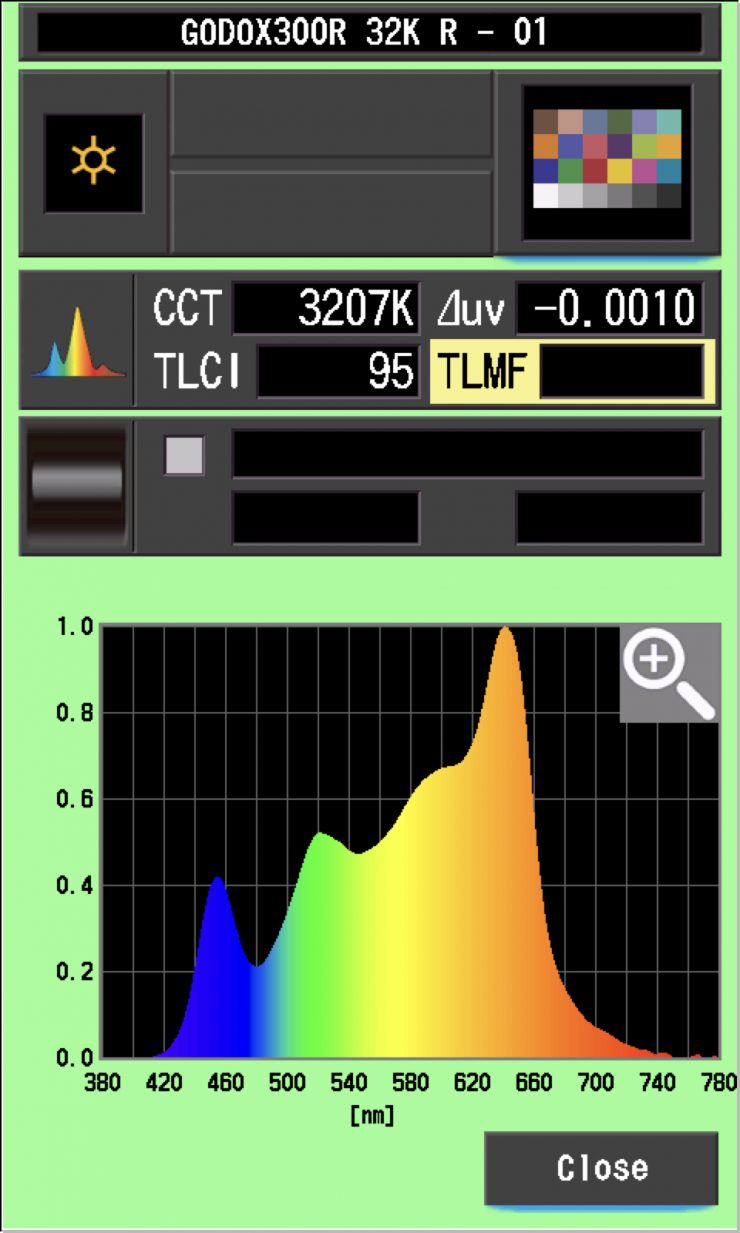
The M300R, when set at 3200K, recorded a TLCI score of 95.
| EXTENDED CRI | R9 | R13 | R15 | |
| Godox KNOWLED M300R | 95.8 | 96.5 | 96.4 | 98.2 |
| nanlite FC-500C | 93.71 | 94.7 | 95.6 | 96.3 |
As a comparison, above you can see how the results for the 300R compare to the Nanlite FC-500C.
The M300R was better at 320K than it was at 5600K.
Open Face
Godox KNOWLED M300R 5600K (Open face)
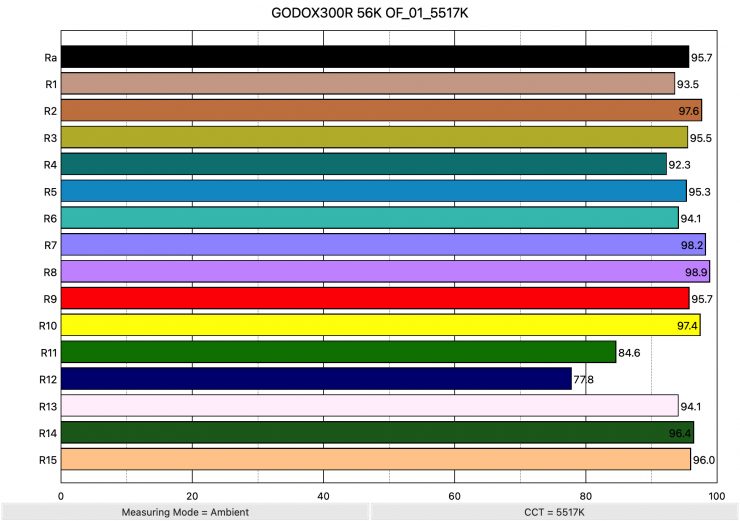
Above, you can see that when the light was set at 5600K and used open face, it recorded an average CRI (R1-R8) of 95.7 and an extended CRI (R1-R15) of 93.82. For replicating accurate skin tones, it recorded 95.7 for R9 (Red), 94.1 for R13 (closest to caucasian skin tones), and 96.0 for R15 (closest to Asian skin tones). Again, these were decent results, but both R11 (Green) and R12 (Blue) were below 90.
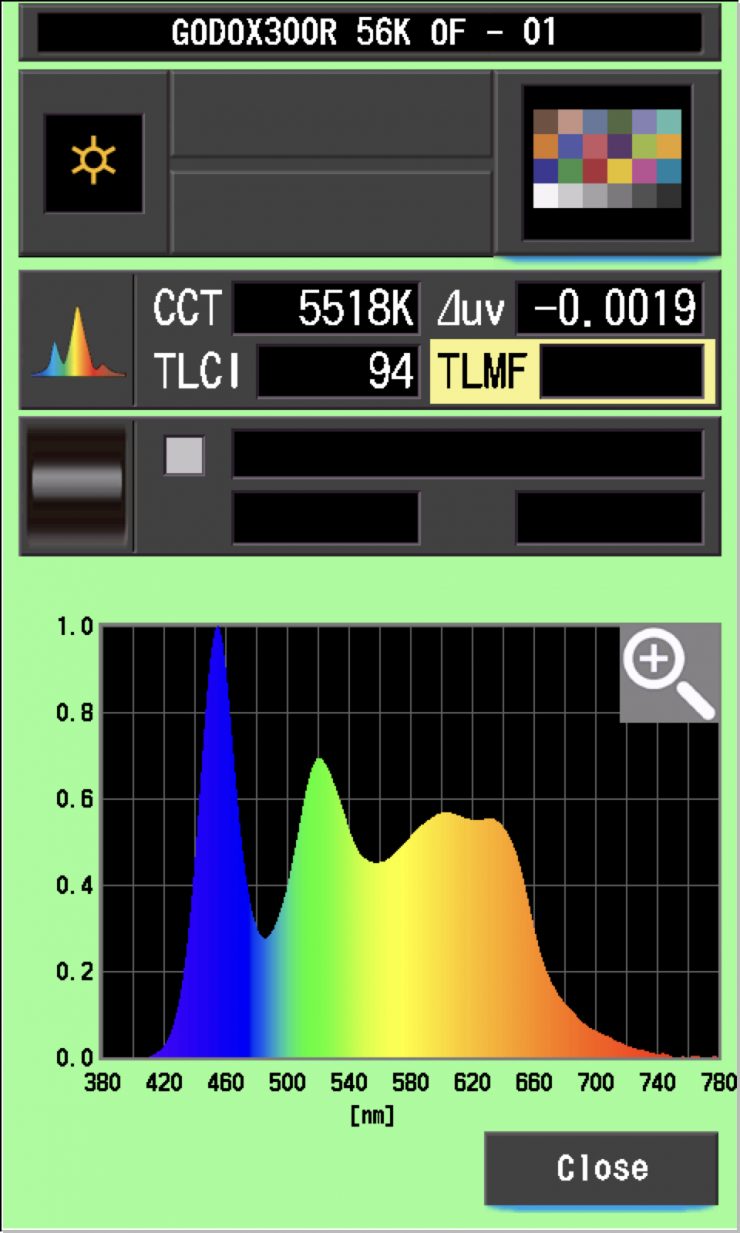
The M300R, when set at 5600K, recorded a TLCI score of 94.
Godox KNOWLED M300R 3200K (Open face)
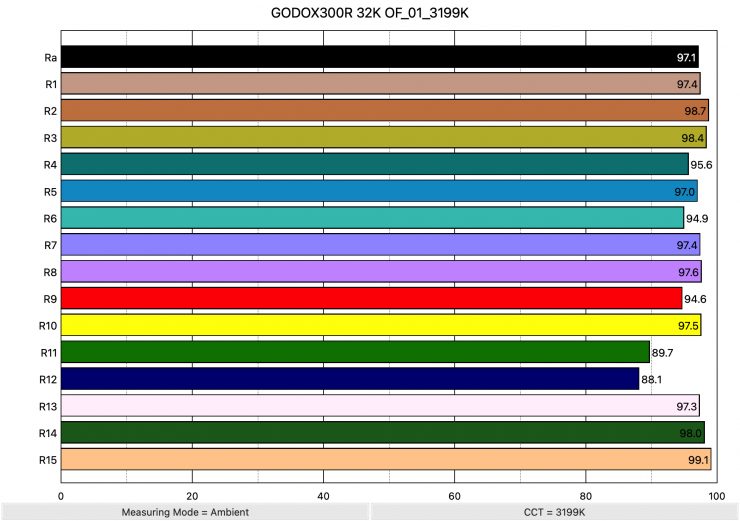
Above, you can see the scores for when the light was used at 3200K. It recorded an average CRI (R1-R8) of 97.1 and an extended CRI (R1-R15) of 95.04. For replicating accurate skin tones, it recorded 94.6 for R9 (Red), 97.3 for R13 (closest to caucasian skin tones), and 99.1 for R15 (closest to Asian skin tones). These were good results, and better than when the light it set at 5600K. R11 and R12 were both marginally below 90.
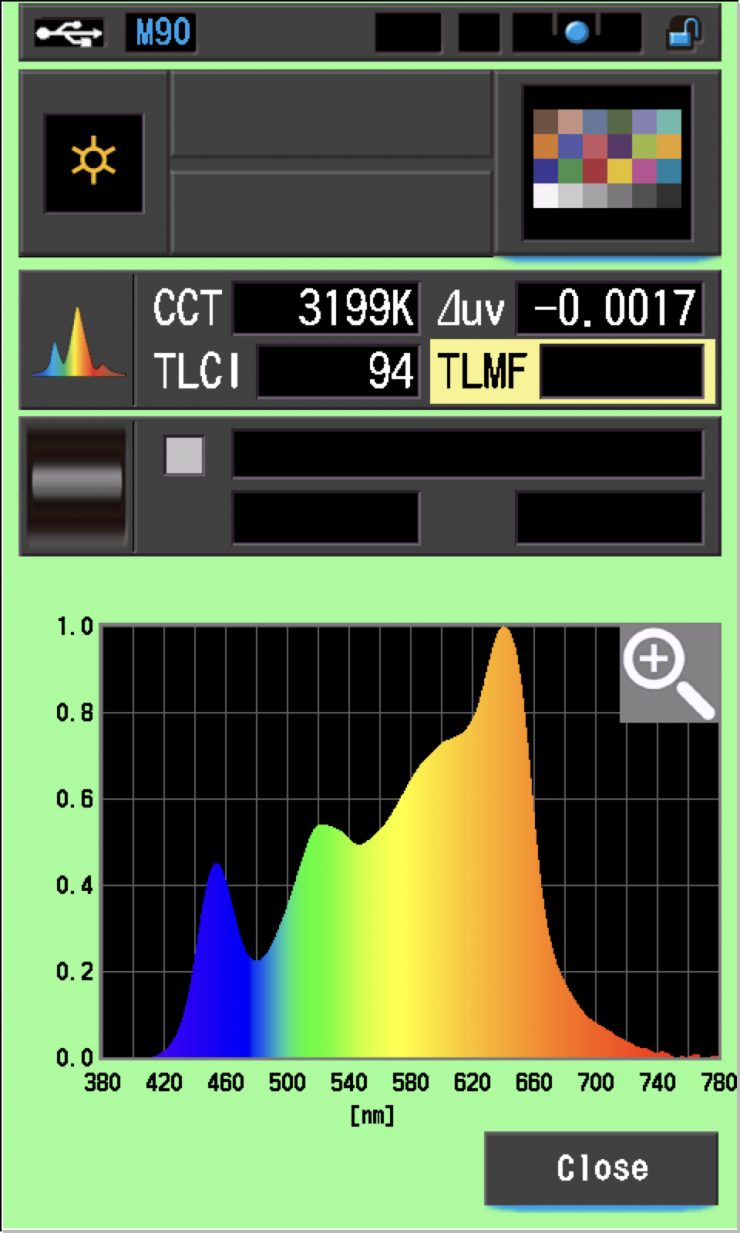
The M300R, when set at 3200K, recorded a TLCI score of 94.
The light definitely performs better at 3200K than it does at 5600K, and this is the case with a lot of LED fixtures.
How does it perform when creating saturated colors?
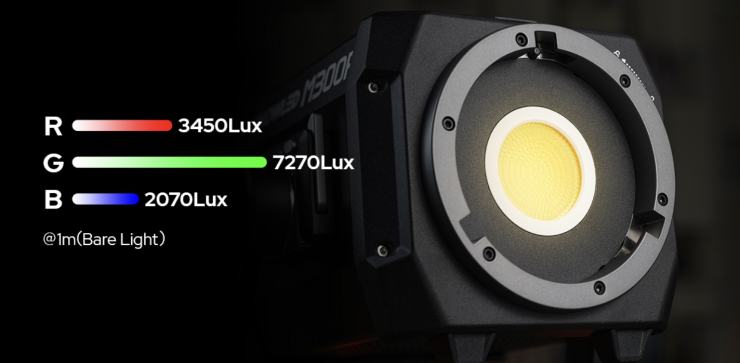
I also wanted to test the M300R to see how it performed when creating super-saturated colors. Godox has worked hard to get the fixture to have high output for the individual red, green, and blue channels. With most LED lights, the output tends to be massively compromised when generating super-saturated colors.
0° – RED
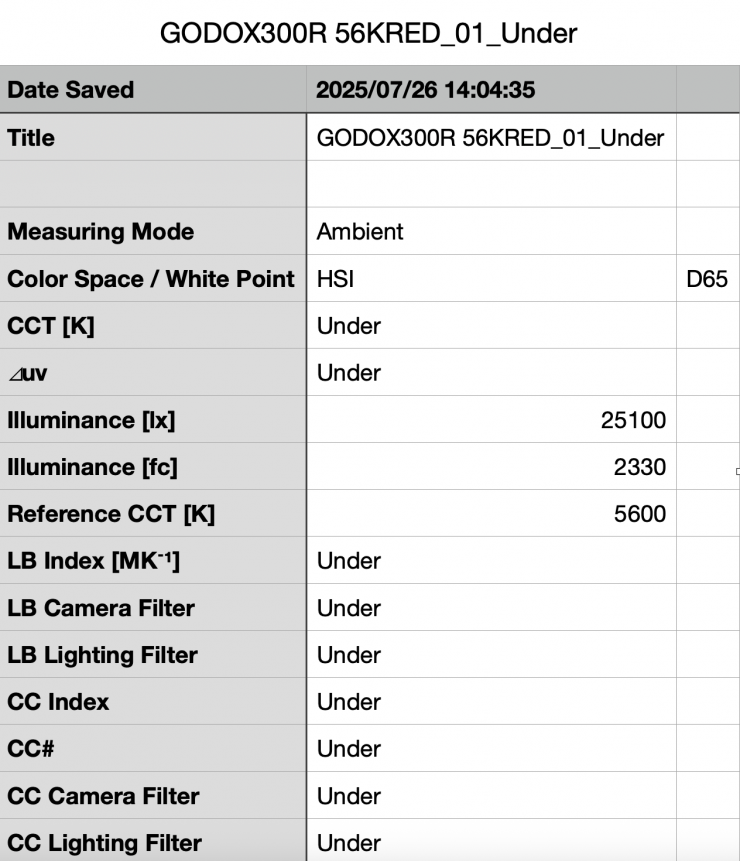
Above, you can see that the light recorded an output of 25,100 lx / 2330 fc @1m / 3.3′.

As far as creating an accurate 0° RED, the M300R was perfect with a reading of 0°.
120° – GREEN
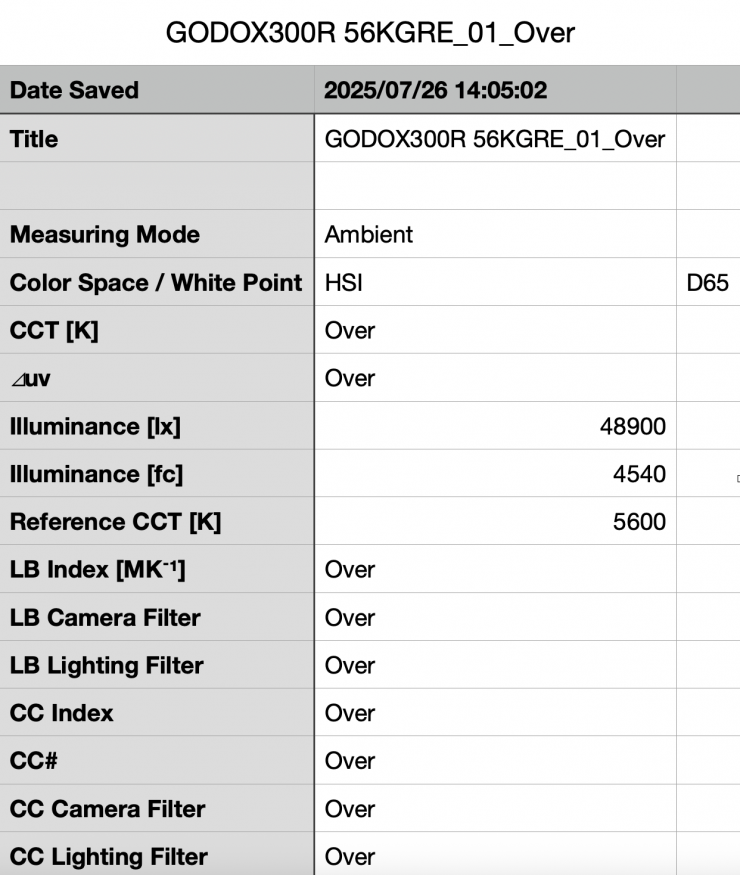
Above, you can see that the light recorded an output of 48,900 lx (4540 fc) @1m / 3.3′.

As far as creating an accurate 120° GREEN, the M300R was 1° off with a 119° reading and 100% saturation.
240° – BLUE
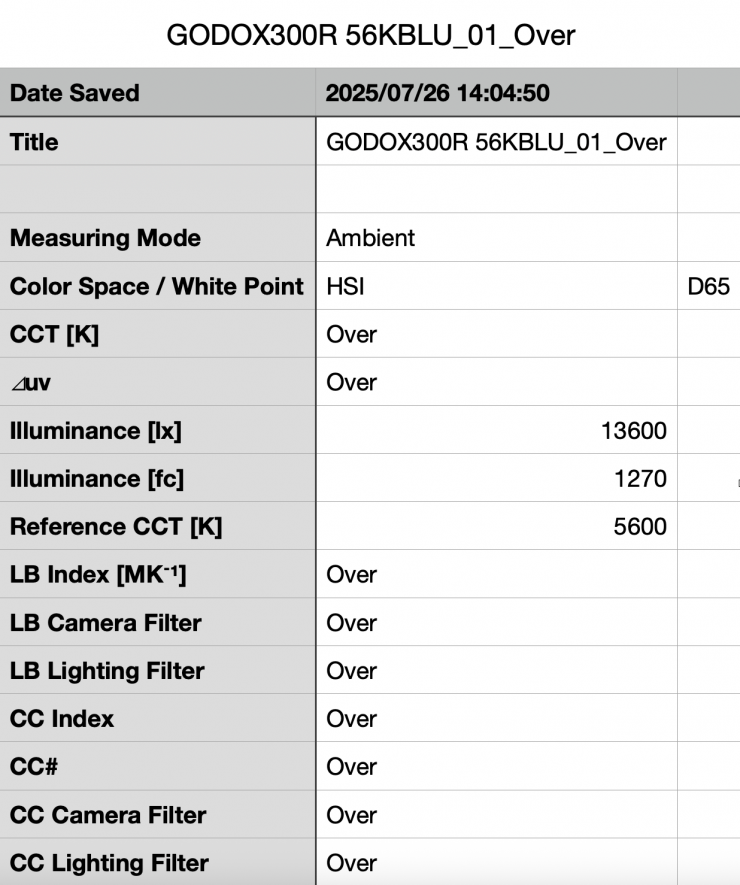
Above, you can see that the light, when trying to create a 240° BLUE, recorded an output of 13,600 lx (1270 fc) @1m / 3.3′.

As far as creating an accurate 240° BLUE, the 300R was 1 degree off with a reading of 241°, with 100% saturation.
60° – YELLOW
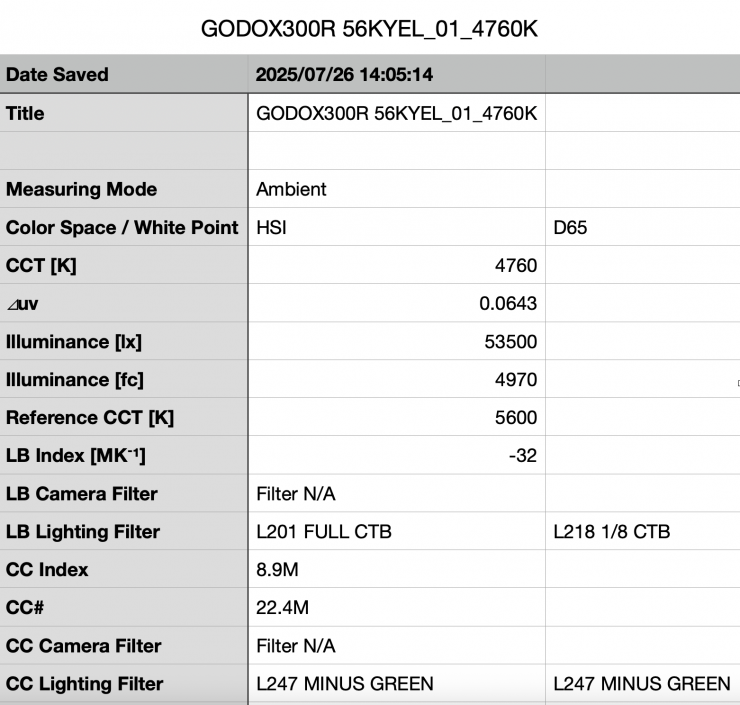
Above, you can see that the light recorded an output of 53,500 lx (4970 fc).

As far as creating an accurate 60° Yellow, the 300R was way off with a reading of 81°.
Because the light is RGBWW and not RGBACL, it is going to struggle to recreate some fully saturated colors, such as yellow, accurately.
The light had a very impressive output when generating fully saturated colors, so it’s a good choice if you need a fixture that is capable of doing that.
CC Index & ⊿uv
The CC Index displays the CC correction value and whether any magenta or green need to be added or subtracted. 1 CC corresponds to 035 Kodak CC values or 1/8 Rosco filter values. Any reading less than +1.00 or -1.00 and you’re probably not going to need to make any kind of adjustment. The ⊿uv is the value to show how much this light is away from being an ideal light source (black body radiation = incandescent lamp). As with the CC Index you want this number to theoretically be zero. Kelvin is not a linear value, so we need to convert from Kelvin to MK-1 to compare the values of color temperature. To calculate from Kelvin to Mired is MK-1= 1*1000000/Kelvin. While this may sound confusing, it is the only way of measuring if the Kelvin shift is significant enough to warrant having to use a filter for correction. Below are the results for the Godox KNOWLED M300R when it is used open face:
Godox KNOWLED M300R Kelvin Vs MK-1
| Kelvin | Difference in K | MK-1 | Difference in MK-1 | |
| SET VALUE | 2500K | 0 | 400 | 0 |
| ACTUAL READING | 2552K | 52 | 391.84 | 8.16 MK-1 |
| SET VALUE | 3200K | 0 | 312.5 | 0 |
| ACTUAL READING | 3199K | 1 | 312.59 | -0.09 MK-1 |
| SET VALUE | 4500K | 0 | 222.22 | 0 |
| ACTUAL READING | 4522K | 22 | 221.14 | 1.08 MK-1 |
| SET VALUE | 5600K | 0 | 178.57 | 0 |
| ACTUAL READING | 5517K | 83 | 181.25 | -2.68 MK-1 |
| SET VALUE | 6500K | 0 | 153.84 | 0 |
| ACTUAL READING | 6477K | 23 | 154.39 | -0.55 MK-1 |
| SET VALUE | 8000K | 0 | 125 | 0 |
| ACTUAL READING | 8075K | 75 | 123.83 | 1.17 MK-1 |
| SET VALUE | 10000K | 0 | 100 | 0 |
| ACTUAL READING | 10106K | 106 | 98.95 | 1.05 MK-1 |
These figures might look confusing, but what they tell me is that the light is extremely CCT color-accurate at all temperatures, except 2500K. Any MK-1 score that is under -9/9 means you wouldn’t have to use any color correction gels. The MK-1 scores for this light were excellent. Any MK-1 score that is under -6/6 is a very good result.
Ok, now let’s look at the CC INDEX & ⊿uv.
Godox KNOWLED M300R CC INDEX & ⊿uv
| CC INDEX | ⊿uv | |
| 2500K | 0.3G | -0.0011 |
| 3200K | 0.1G | -0.0017 |
| 4500K | 0.2G | -0.0027 |
| 5600K | 0.3G | -0.0019 |
| 6500K | 0.3G | -0.0001 |
| 8000K | 0.3G | 0.0023 |
| 10000K | 0.7G | 0.0023 |
These were ok results across the board. There was nothing here that anyone should be concerned about.
TM-30
TM-30 is a relatively new color rendering standard that was developed to deal with the limitations of CRI. TM-30 looks at 99 individual colors. These 99 colors are categorized into seven groups: nature, skin color, textiles, paints, plastics, printed material, and color systems.
TM-30 scores go from 0 – 100. The higher the score, the more accurately a light is at producing colors. Any TM-30 Rf score in the ’90s is considered to be good. What is interesting and something that you need to be very aware of is that two separate light sources with the exact same CRI scores can render colors very differently. A light with a high CRI rating could have a low TM-30 score. Conversely, a light with a good TM-30 score could have a bad CRI score.
Now, there are two measurements associated with TM-30, Rf and Rg.
Rf (Color Fidelity)
Rg (Color Gamut)
With Rf value, ideally, you want a score in the 90’s.
With Rg value, a score below 100 indicates that the light source renders colors with less saturation than the reference source. So, ideally, you want this score to be 100 or slightly above.
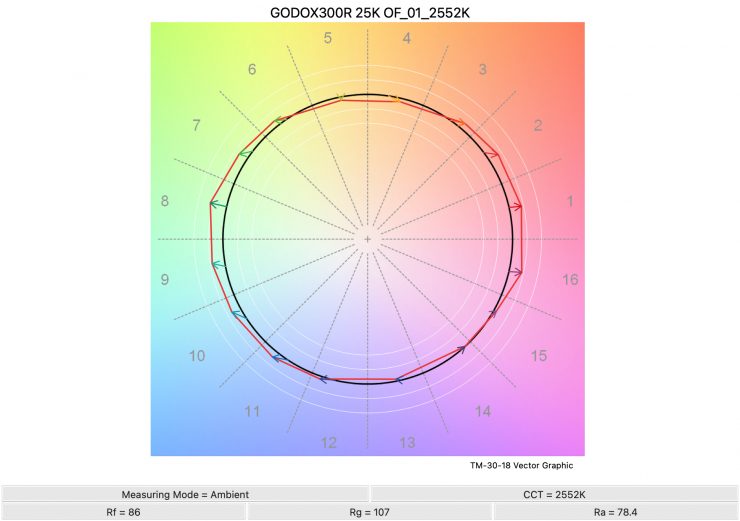
2500K 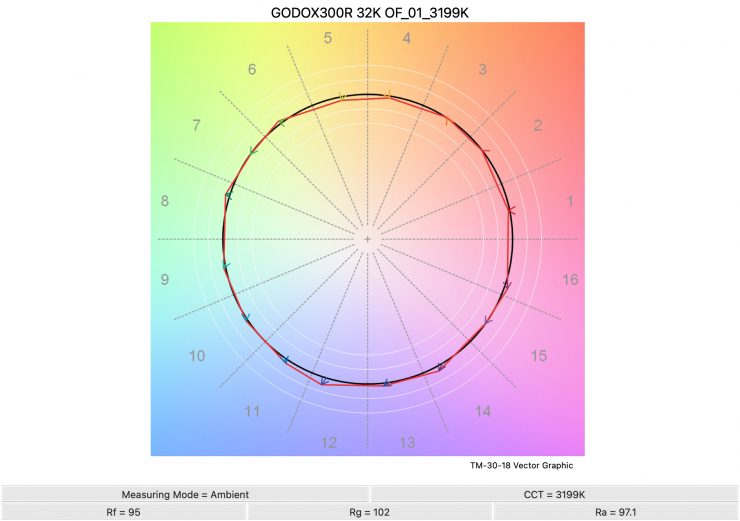
3200K 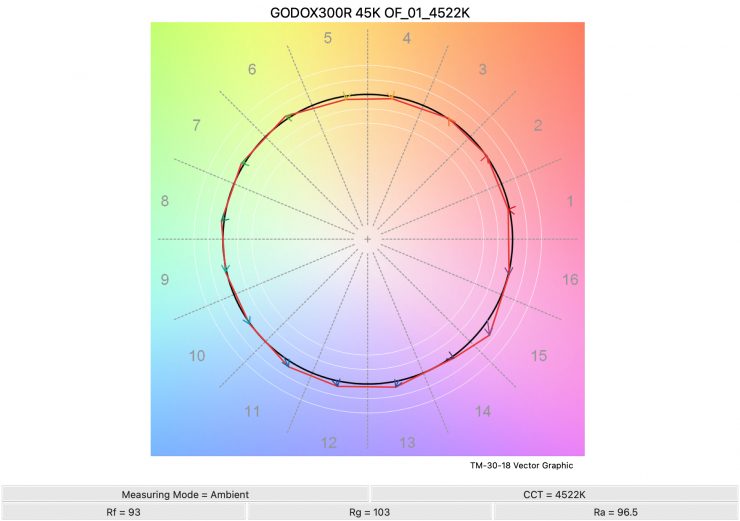
4500K 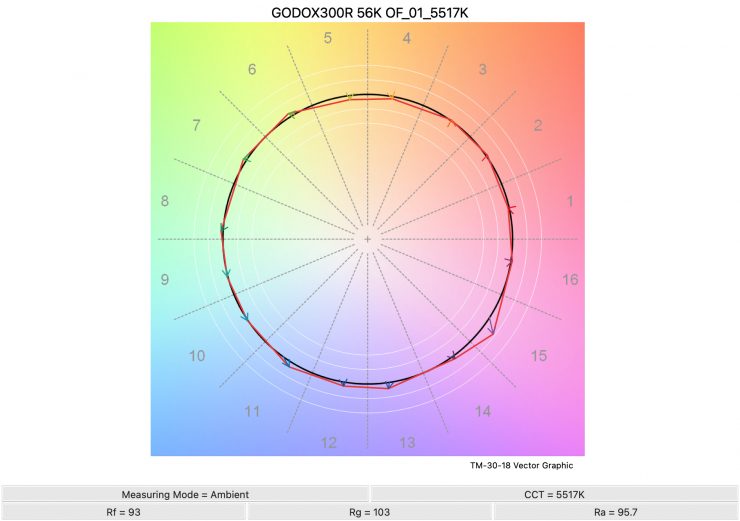
5600K 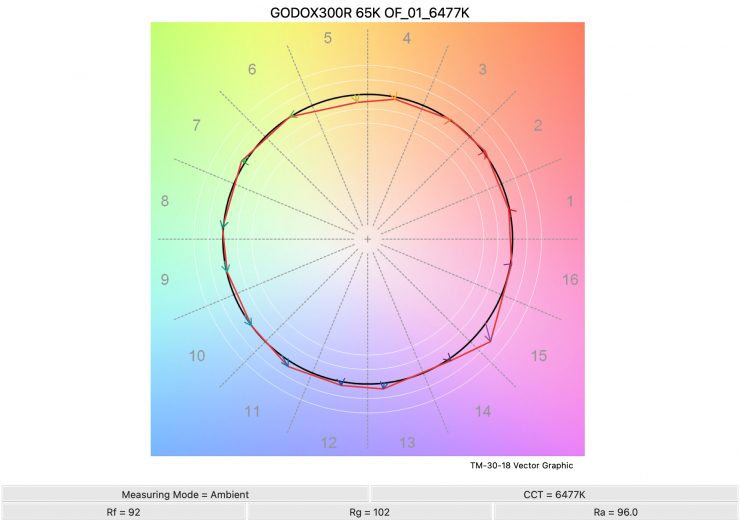
6500K 
8000K 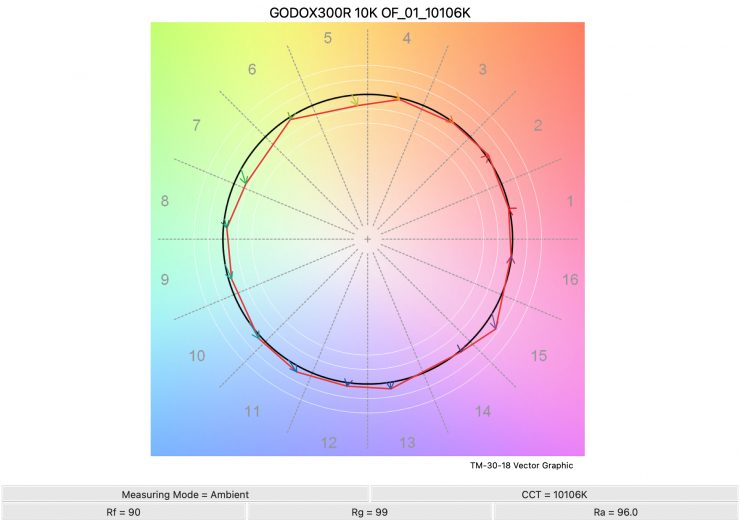
Above, you can see the scores for the 300R at various CCT settings. Below, I have listed the figures as well.
Here are the results:
| Rf | Rg | |
| 2500K | 86 | 107 |
| 3200K | 95 | 102 |
| 4500K | 93 | 103 |
| 5600K | 93 | 103 |
| 6500K | 92 | 102 |
| 8000K | 91 | 101 |
| 10000K | 90 | 99 |
The TM-30 scores are all reasonably good from 3200K to 10,000K. It shows me that the light is pretty consistent at replicating accurate colors; however, it slightly oversaturates colors. At 2500K, it wasn’t very good, and it was massively oversaturating colors.
SSI
SSI (Spectral Similarity Index) was developed by the Sci-Tech Council of the Academy. SSI gives me the ability to set any light as a standard, or use predefined standards (such as CIE D55), and then give other lights an SSI score based on how well they will match standards such as CIE D55. This way, I can measure the spectral response and compare it directly against an ideal light source. This is actually a much better test than recording CRI scores, but it won’t tell you everything you need to know.
Godox KNOWLED M300R 3200K (Open Face)
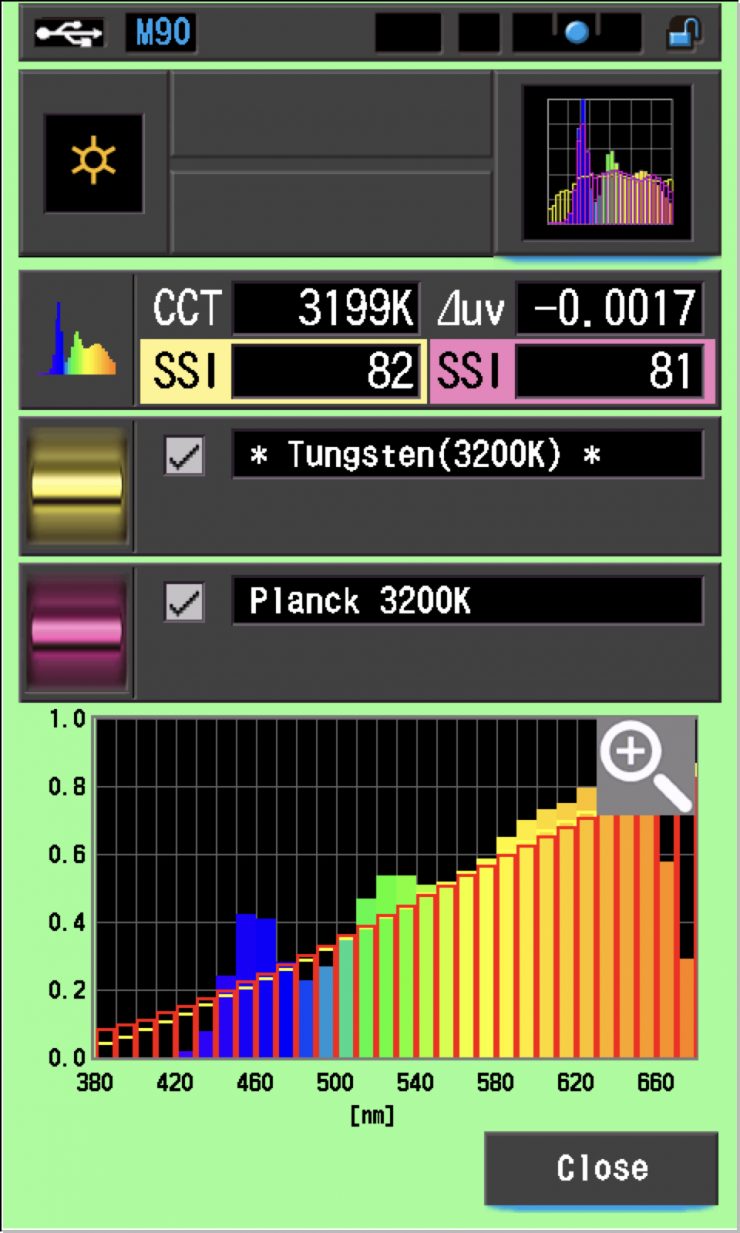
In this graph, the red bars indicate a perfect Planck 3200K source. The gold bars indicate a perfect 3200K Tungsten source. This lets us compare how close to a perfect 3200K lighting source the M300R is. Any SSI score in the high 70s, low ’80s is very good for a 3200K LED light. The results for the 300R were good when used at 3200K.
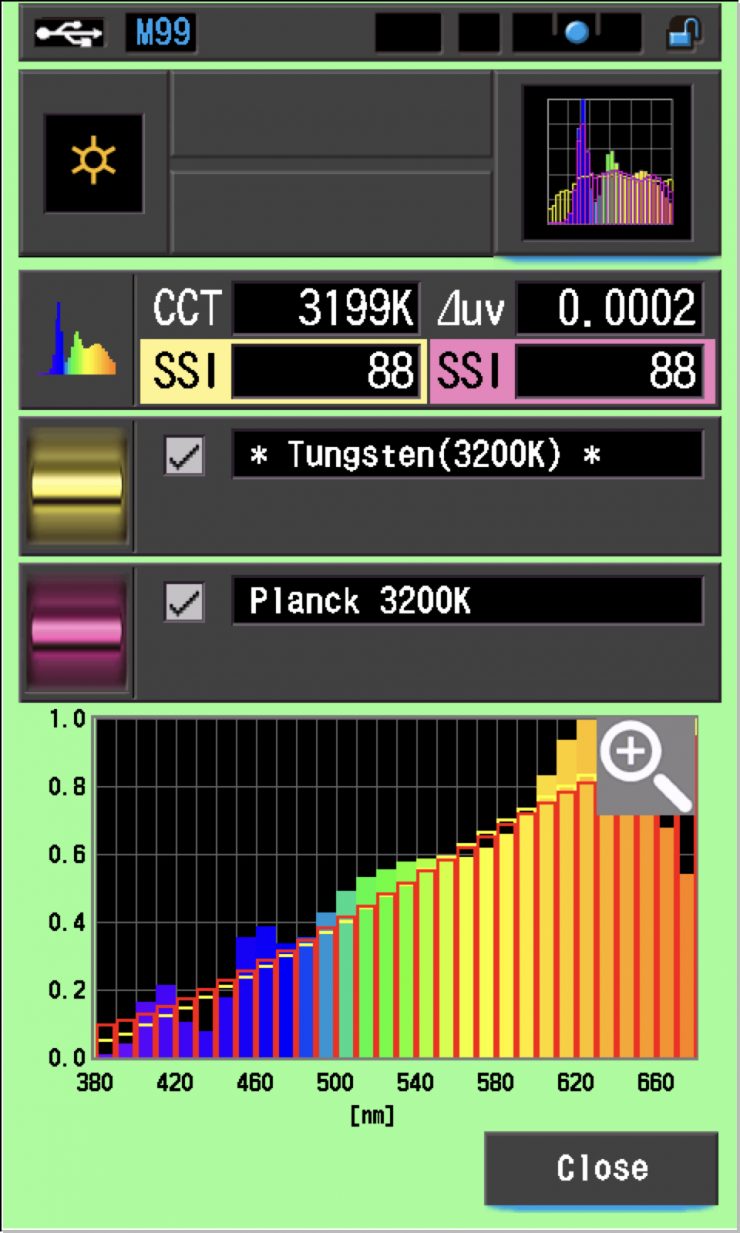
Above, you can see a comparison using the Aputure STORM 1200x. In this graph, the red bars indicate a perfect Planck 3200K source. The gold bars indicate a perfect 3200K Tungsten source. This lets us compare how close to a perfect 3200K lighting source the Aputure STORM 1200x is. Any SSI score in the high 70s, low ’80s is very good for a 3200K LED light. The results for the Aputure STORM 1200x were excellent when used at 3200K.
Godox KNOWLED M300R 5600K (Open Face)
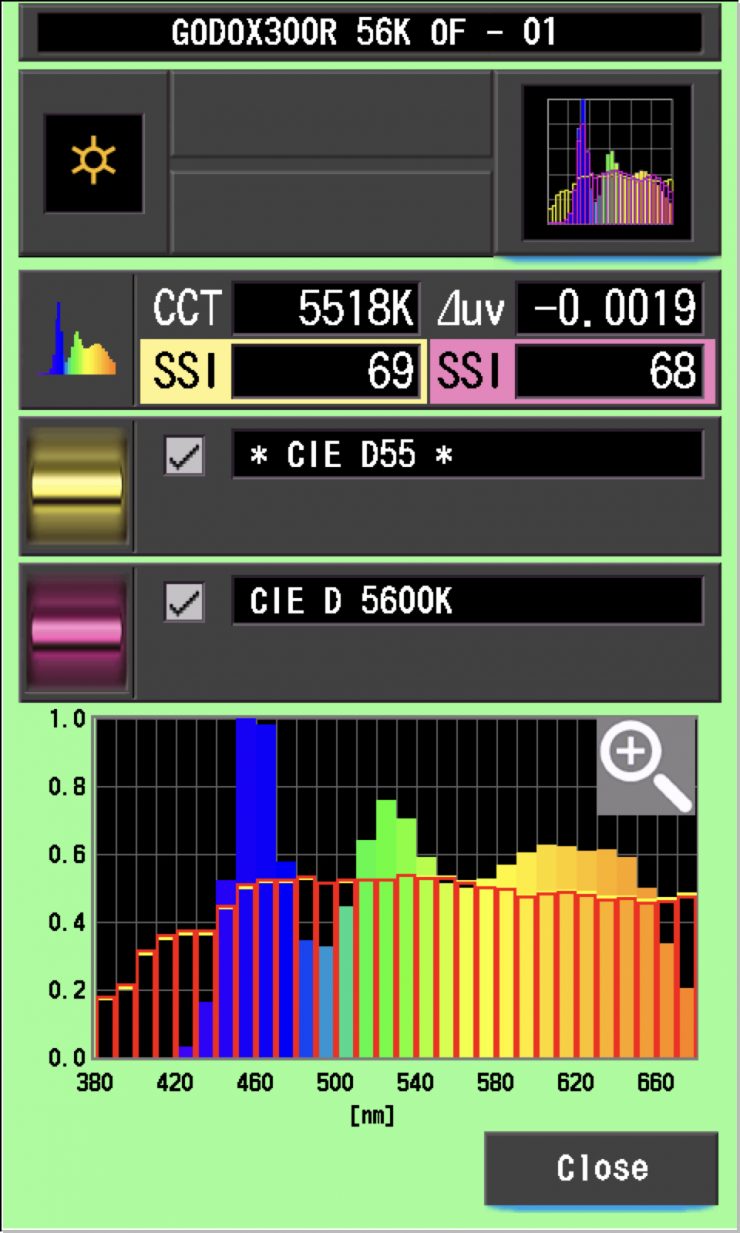
In the graph above, the gold bars indicate a perfect CIE D55 source. The red bars indicate a perfect CIE D 5600K source. This lets us compare how close to a perfect 5600K lighting source the M300R is. A score in the low 70s is typical for a 5600K LED source; the M300R recorded a score of 69, which wasn’t very good.
Aputure STORM 1200x 5600K Max. Output Mode (Wide reflector 45°)
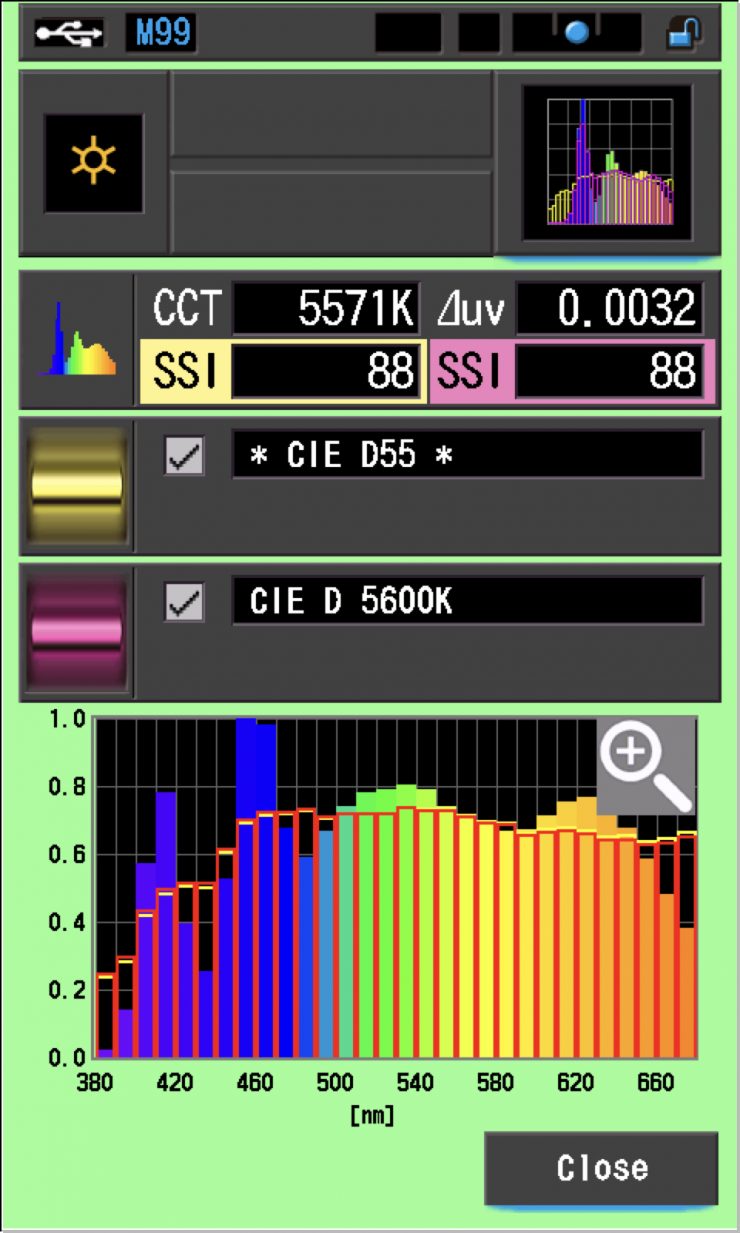
Above, you can see a comparison using the Aputure STORM 1200x. In the graph above, the gold bars indicate a perfect CIE D55 source. The red bars indicate a perfect CIE D 5600K source. This lets us compare how close to a perfect 5600K lighting source the Aputure STORM 1200x is. A score in the low 70s is typical for a 5600K LED source; the STORM 1200x recorded a score of 88, which was exceptionally good. The reason for this great score has to do with the Indigo emitter in the BLAIR light engine. You can clearly see that the STORM 1200x is able to produce colors below 450nm, whereas most lights can’t.
It wasn’t the highest SSI score at 5600K I have ever recorded, but it was pretty close.
SSI Comparisons
The main reason we want to record SSI scores is so we can see how well they match with other lights. As an example, I wanted to see how well the M300R matched the ARRI Orbiter and the Aputure STORM 1200X. Below you can see the results.
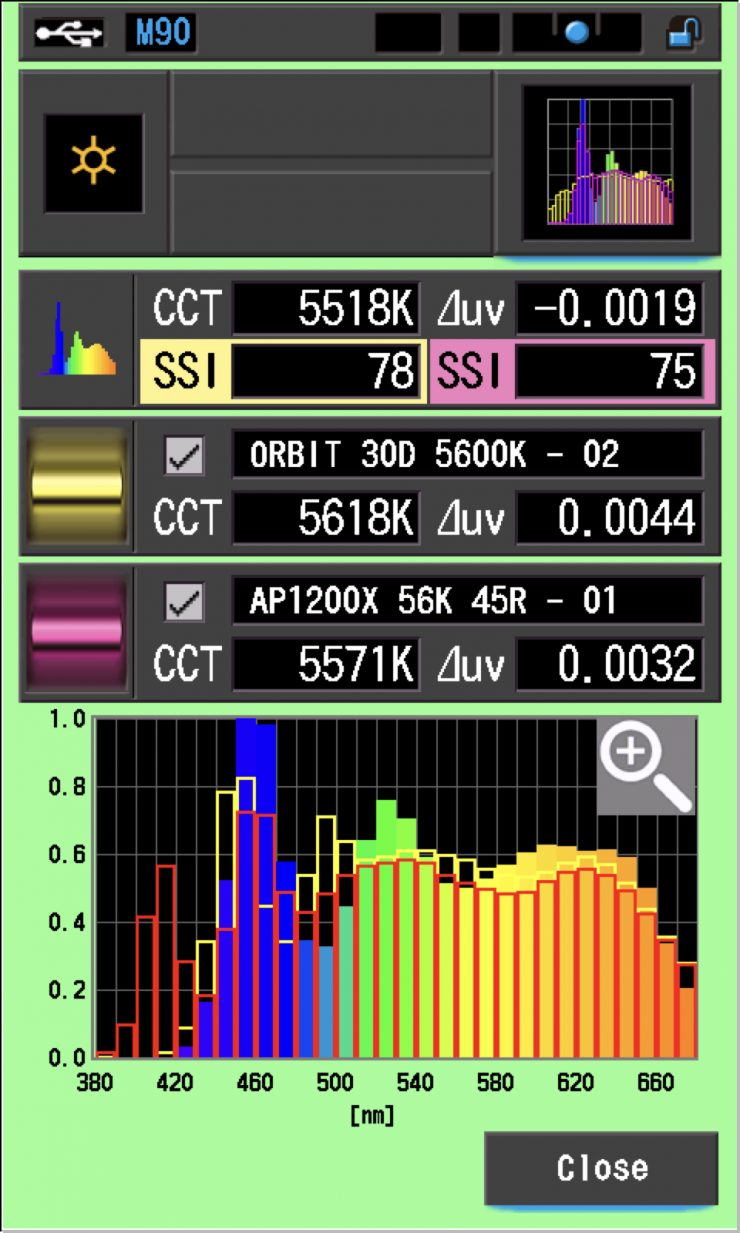
As you can see, neither light is anywhere even vaguely close to matching the M300R. Any score in the high ’80s and low 90s would be considered reasonably good, but a score in the 70s would make matching these lights a little more tricky.
As another test, I thought I would compare those same lights against the M300R at 3200K. Below you can see the results.
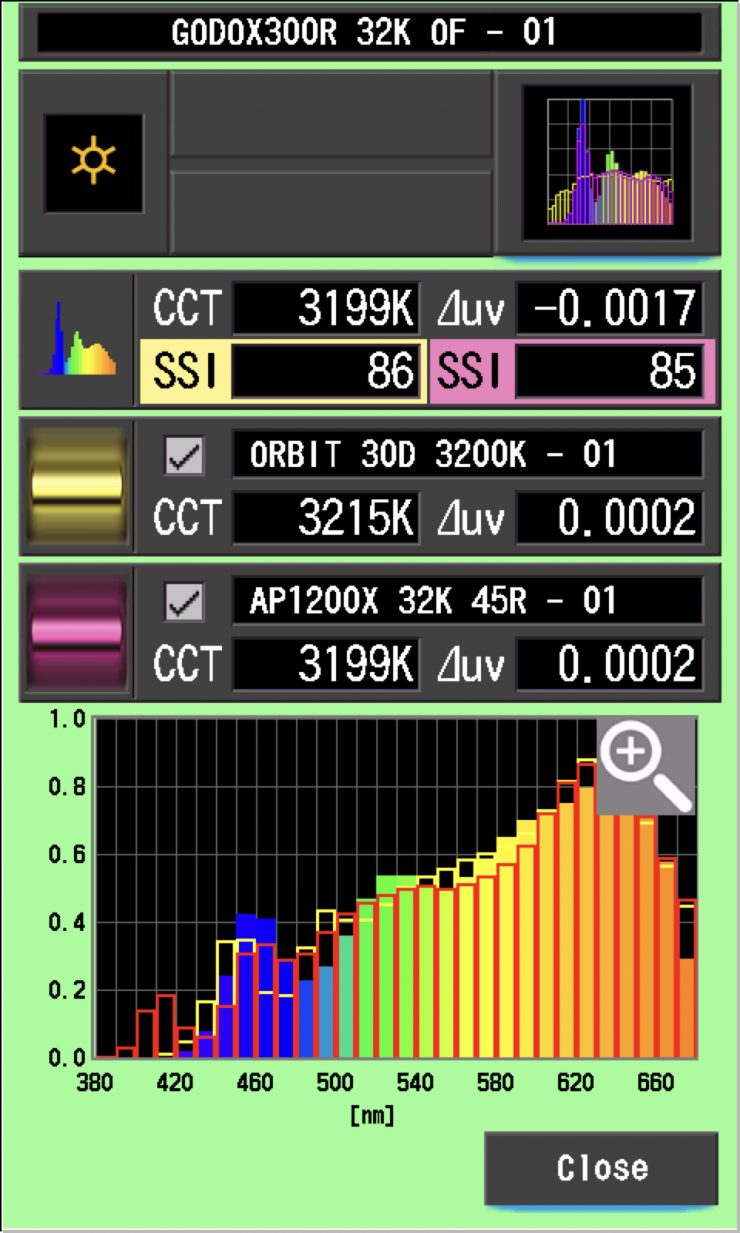
As you can see, the ARRI and the Aputure were a reasonably close match to the M300R. Very few lights from different manufacturers are ever going to be an exact match.
Let’s now do a test where we compare the light against the Godox MS60R. As these are both RGBWW lights made by the same company, they should, in theory, be a pretty close match.
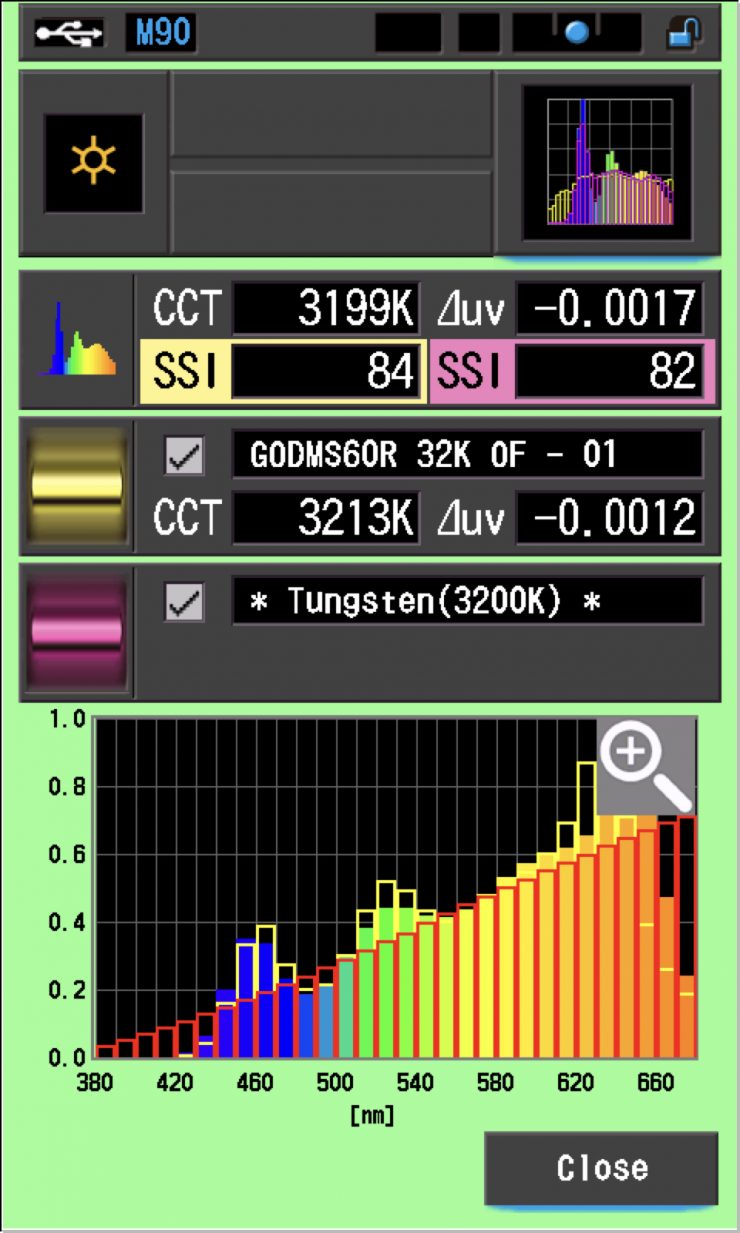
As you can see, the light wasn’t a perfect match to the Godox MS60R when used at 3200K. It only had an SSI match of 84, which again, wasn’t great considering both of these lights are made by the same company.
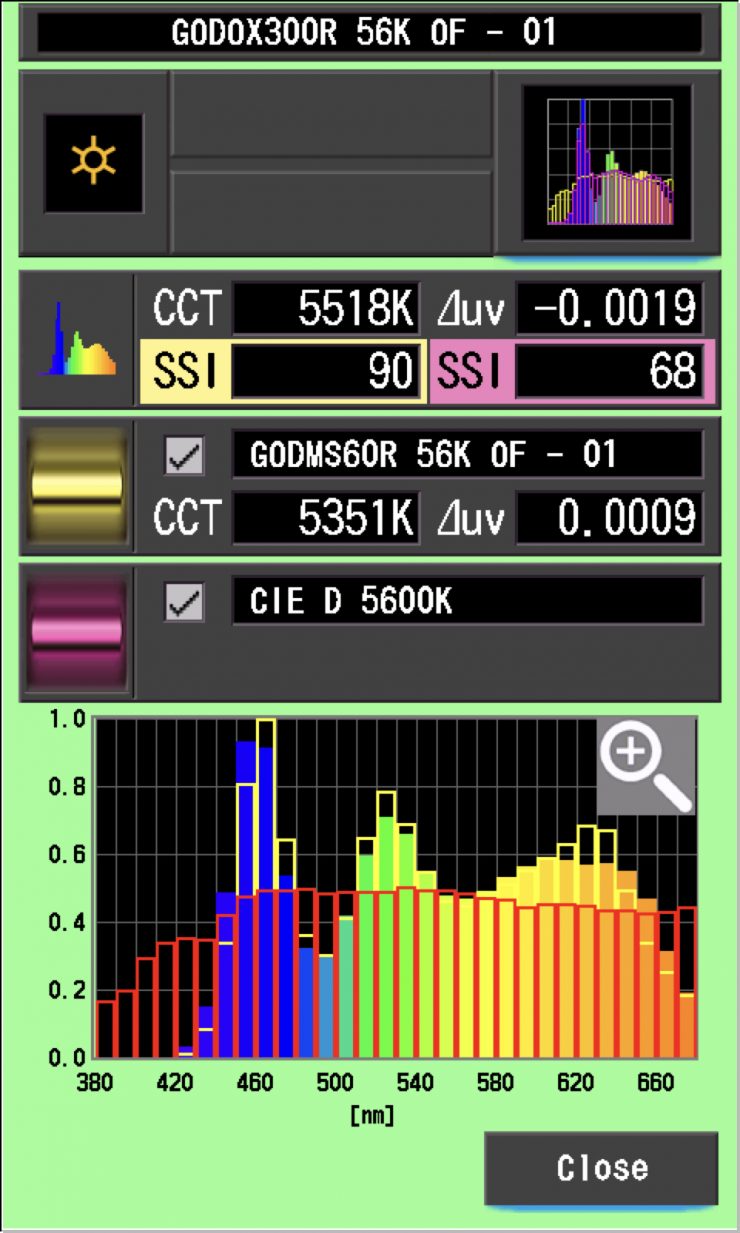
As you can see, at 5600K, the light was a reasonably good match to the Godox MS60R, but I would have expected a closer match.
SSI tests are a great way of telling you what lights you own or use will work well together.
Spectral Distribution
5600K

Above, you can see the spectral distribution of the M300R when it is set at 5600K. The spectral distribution isn’t very full, especially for a full color fixture. The light also has a noticeable green spike.
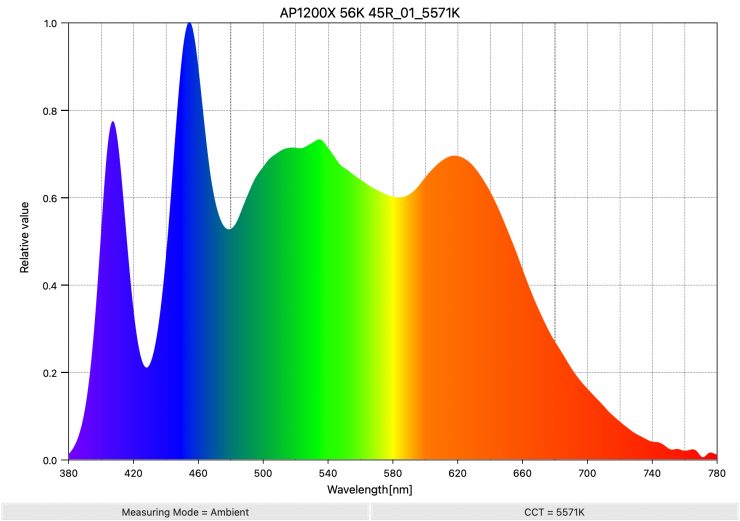
As a comparison, above you can see the spectral distribution of the Aputure STORM 1200x when it is set at 5600K. The spectral distribution is reasonably full, and you can clearly see the extra blue spike, which is the result of the Indigo emitter in the BLAIR light engine. You can see the extra information that is between 380-420nm, which you don’t see on other fixtures.
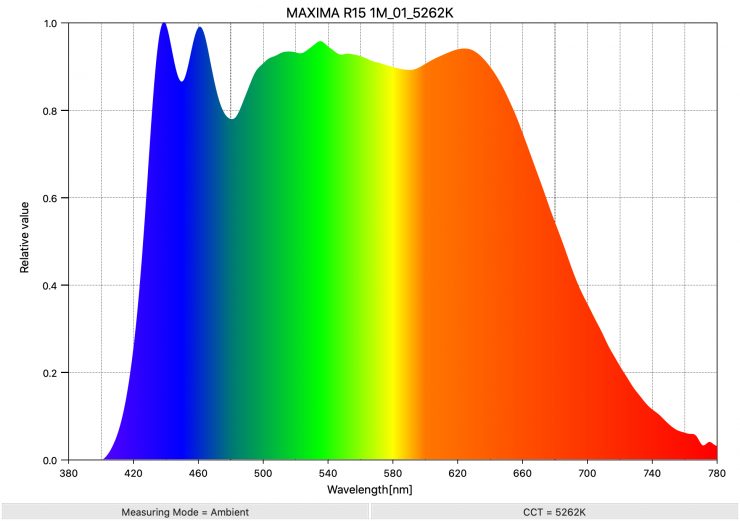
If you want to see what a really good full-spectral response looks like for a spotlight at 5600K, above is the result for the Maxima 3.
3200K

As a comparison, above you can see the spectral distribution of the M300R when it is set at 3200K. The spectral distribution isn’t very full, and it has a noticeable push towards green.

As a comparison, above you can see the spectral distribution of the Aputure STORM 1200x when it is set at 3200K. The spectral distribution only has a very marginal push towards green, but overall, it is reasonably good.
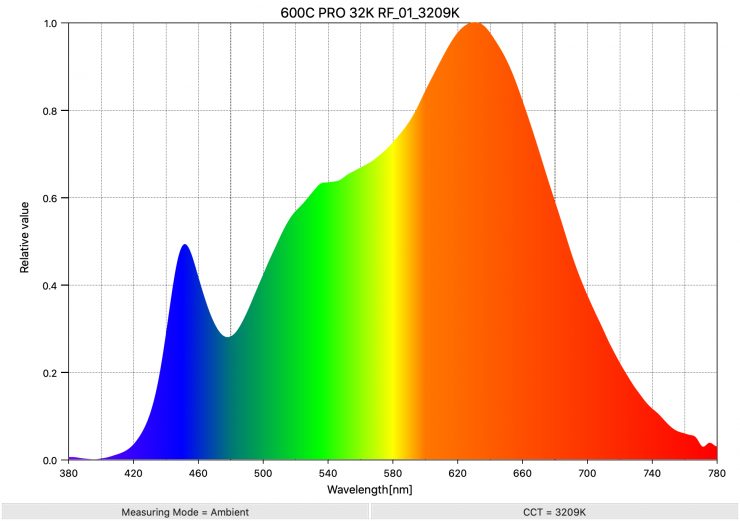
As a comparison, above you can see the spectral distribution of the 600c Pro when it is set at 3200K. The spectral distribution only has a very marginal push towards green, but overall, it is very good.
Real-World Performance & Quality of Light
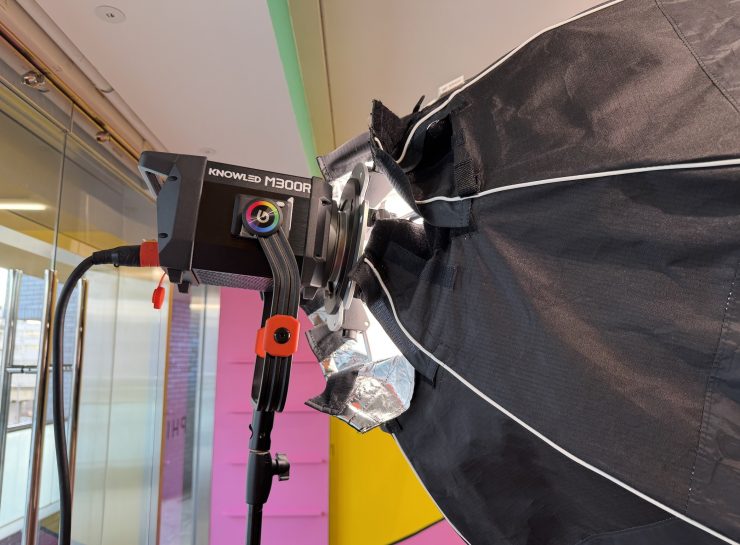
As I always say, photometric scores only tell you part of the story. So let’s find out if the scores from the M300R translate into good real-world performance.
The photometric results can only give me scientific data, and it is much more important for me to see how the light looks and performs. Contrary to popular belief, if you are in the business of making lights, you don’t want to try and achieve perfect scores because perfect scientific scores don’t necessarily equate to a light looking good. A good light should look good to a camera because, after all, that is what is capturing the image. Cameras and our eyes see differently, and ideally, you want to use a light that looks good to your camera. There’s a bit of alchemy in knowing what to prioritize in order to render colors that appear accurate, natural, and pleasing. It’s not just about hitting certain numbers.
It is important to note that almost all of the LED lights that have come to market in the last couple of years are very good, and they can all produce good results. Just because something is new doesn’t necessarily mean it is better, nor does it mean that you have to throw your older lights out.
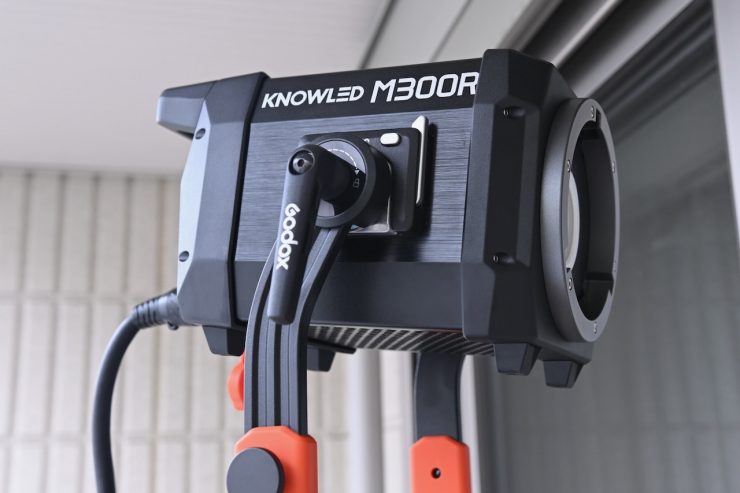
Lighting really comes down to how you use the light, and having a great light isn’t suddenly going to produce better results unless you know what you are doing.
One of my primary aims when testing the light was to see how the RGBW light engine performed, especially when used as a daylight source. Most modern-day LED lights perform well at 3200K, but not as well at 5600K.
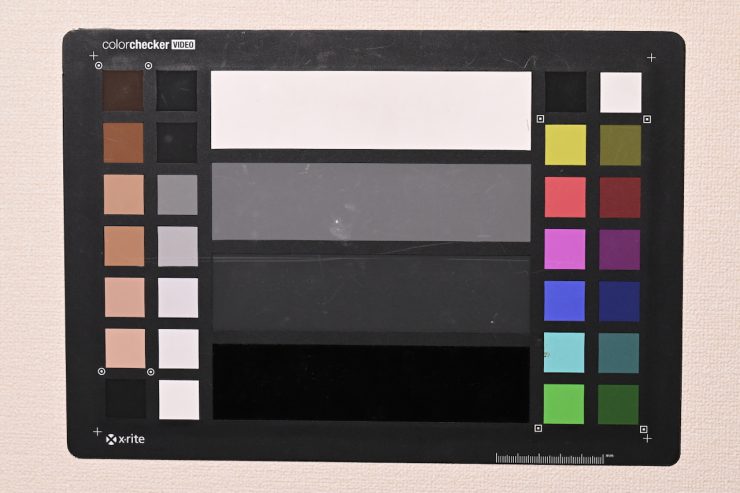
Preset 5600K WB 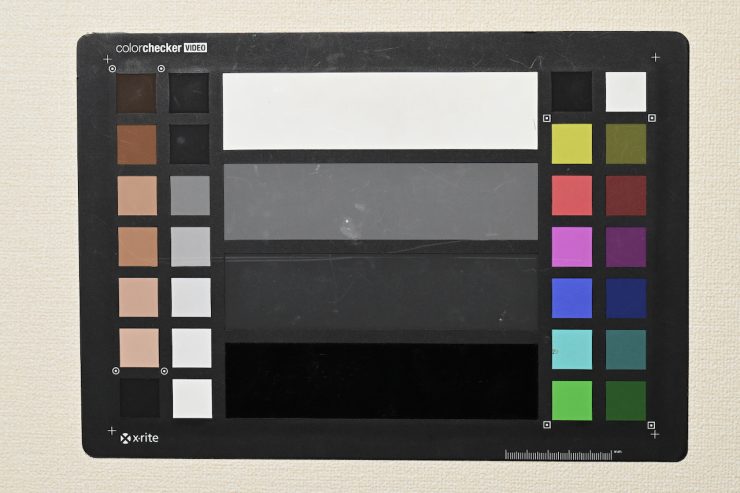
Camera WB
Above you can see a test where the light was set at 5600K, and I have set the camera at a preset 5600K WB and also done a manual WB, so you can see the differences. With the camera set at a preset 5600K WB, the light certainly leans magenta. With a camera WB, it leaned very slightly green.
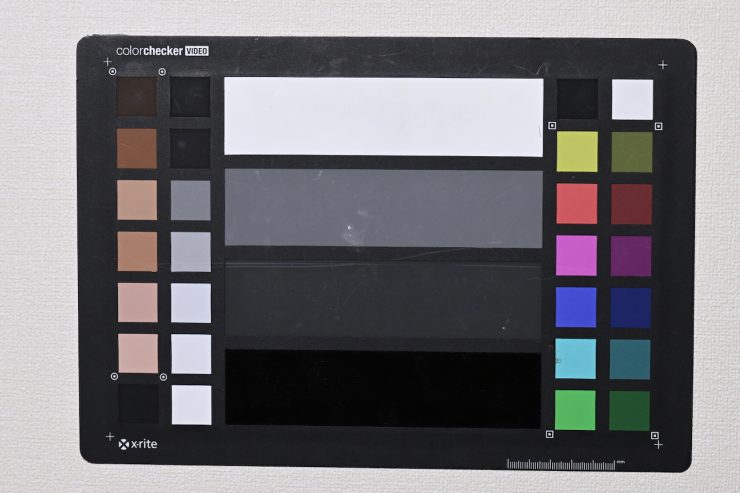
Preset 3200K WB 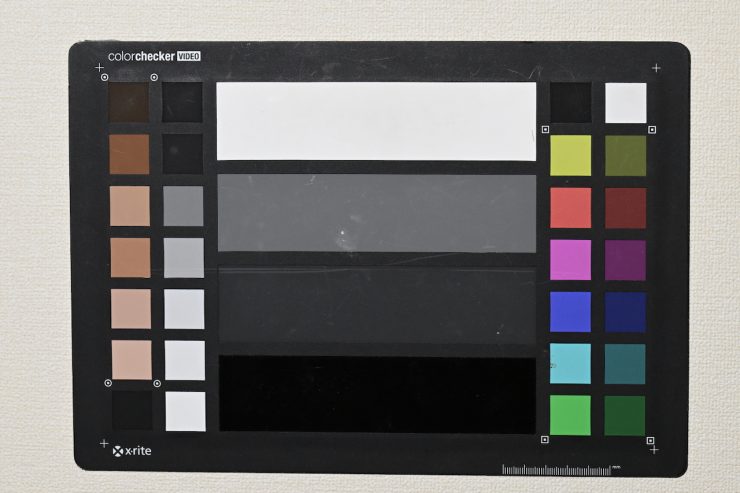
Camera WB
Above, you can see another test where I did the same exact thing, but this time at 3200K. The light certainly performs better when it is set at 3200K.
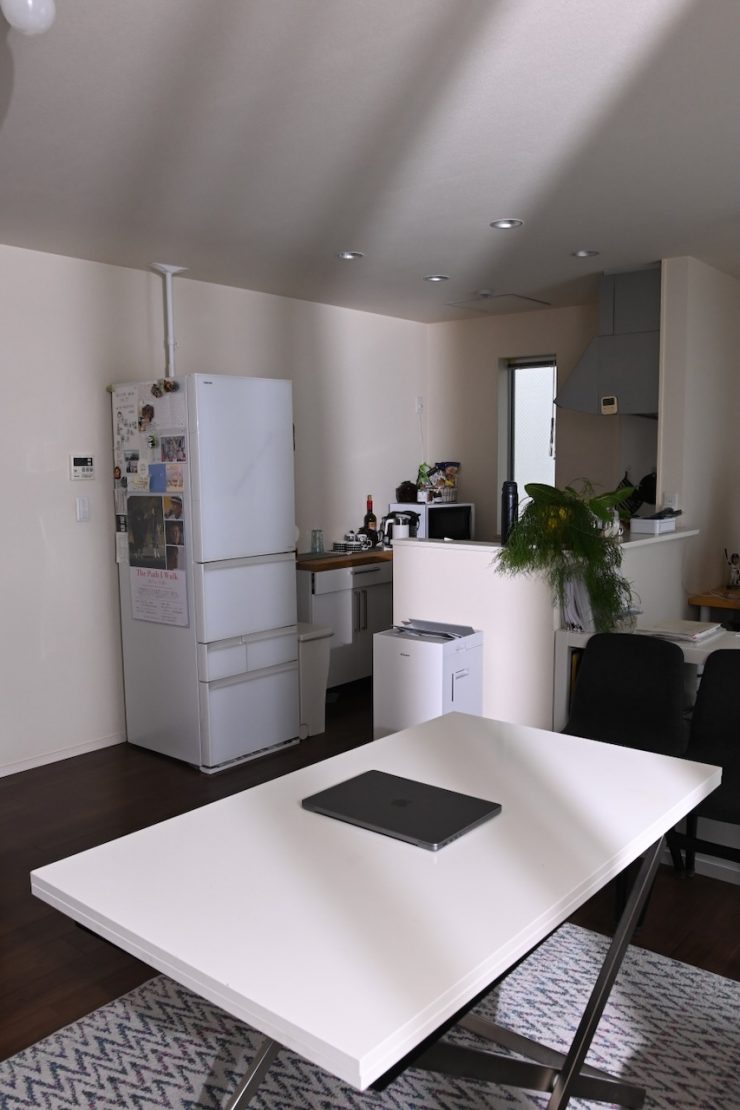
Open Face 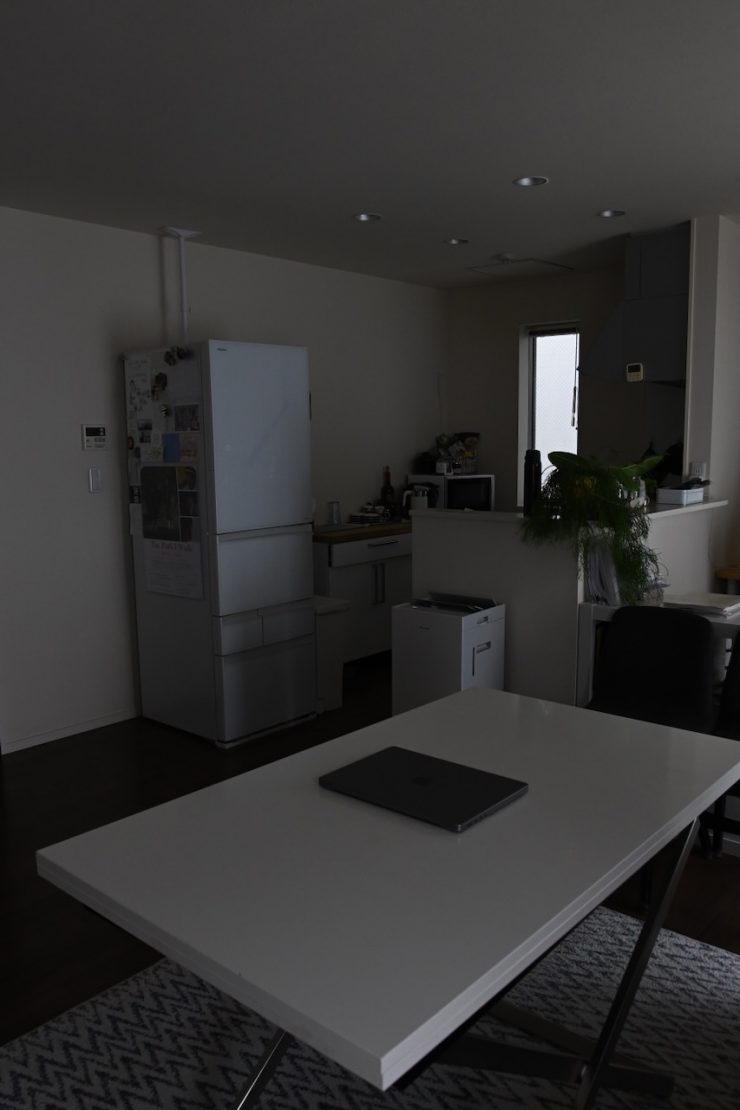
Light Off
Above, you can see some photos where I used the light open-faced and placed it outside, and punched it through a sheer curtain. I have kept the camera settings the same for all of the shots. This is to give you an indication of the output.
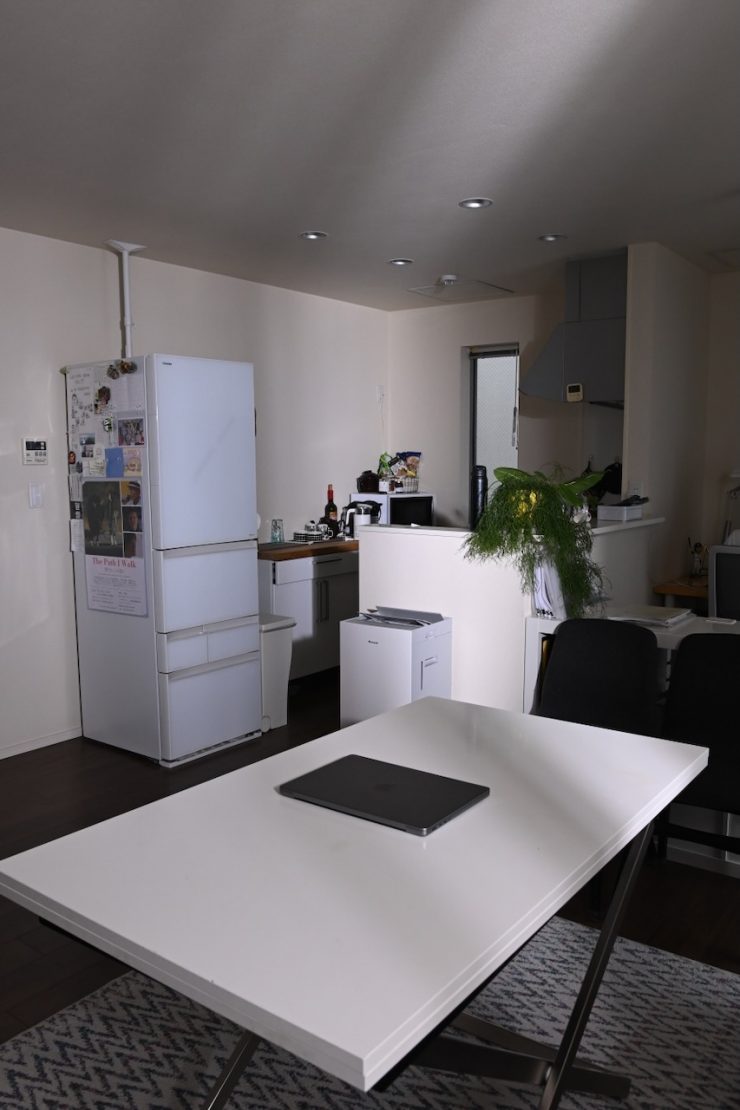
Reflector 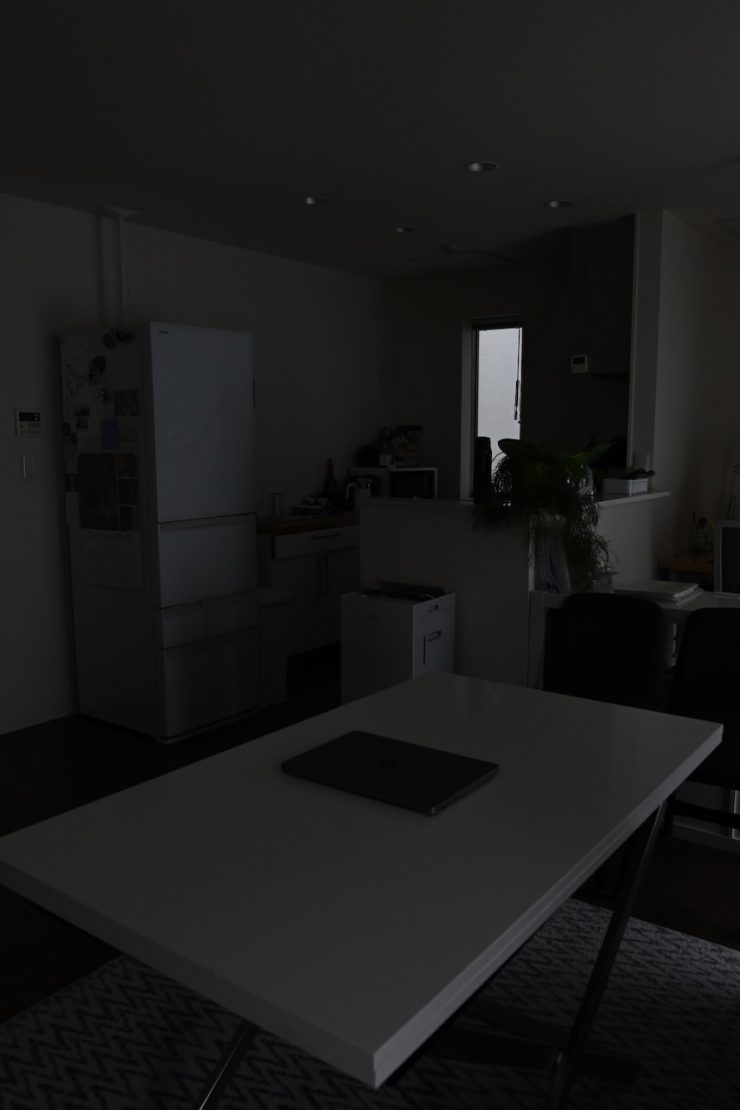
Light Off
Above, you can see some photos where I used the light with its reflector and placed it outside, and punched it through a sheer curtain. I have kept the camera settings the same for all of the shots. This is to give you an indication of the output.
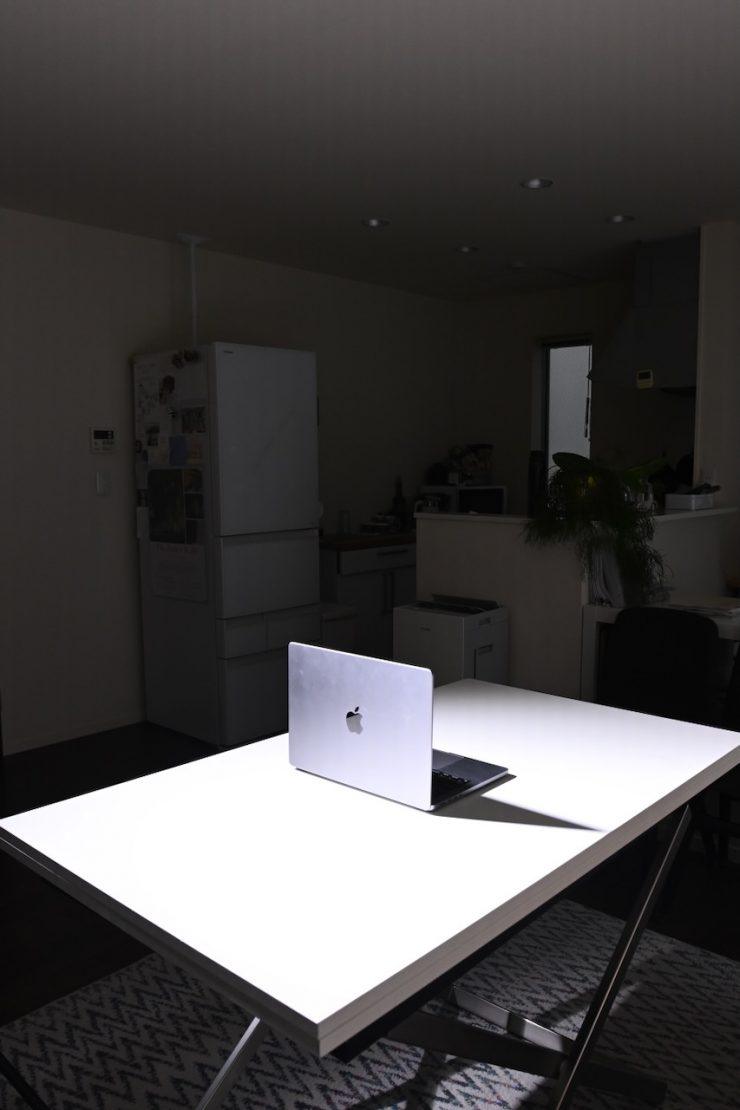
Light On 
Light Off 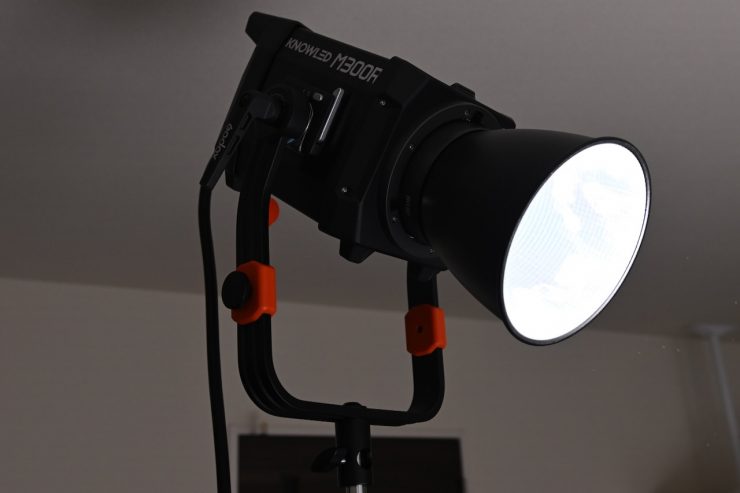
Above, you can see images where I punched the light directly down onto a table with its reflector. I have kept the camera settings the same for all of the shots.
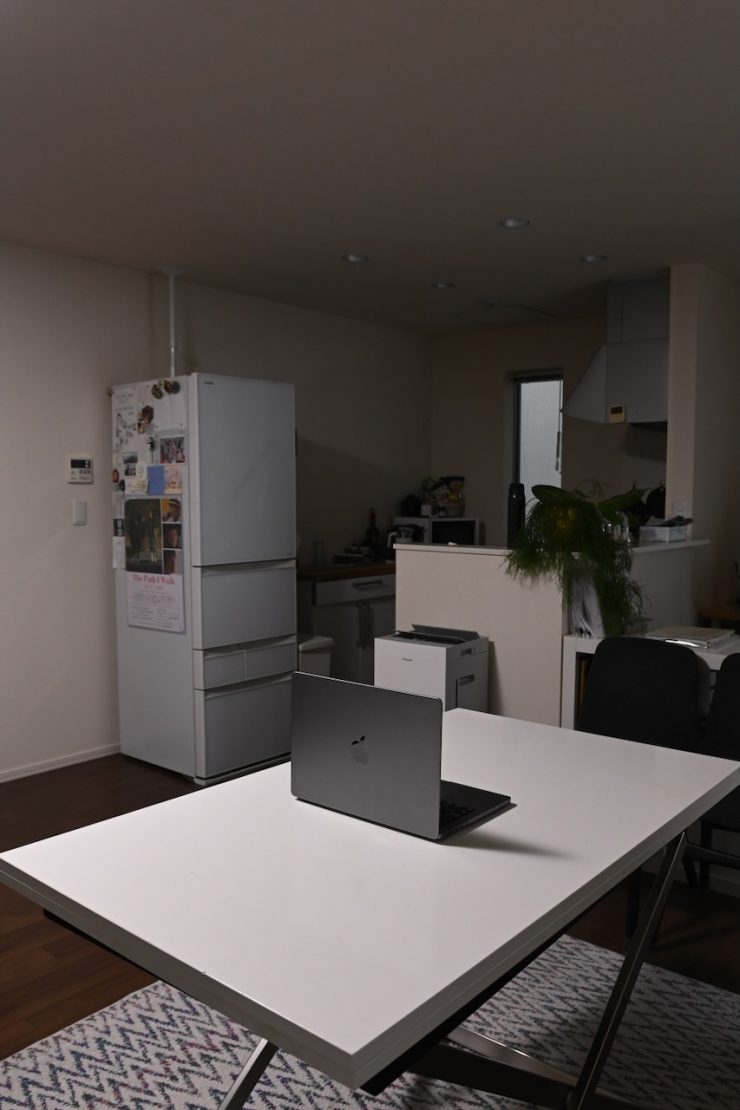
Light On 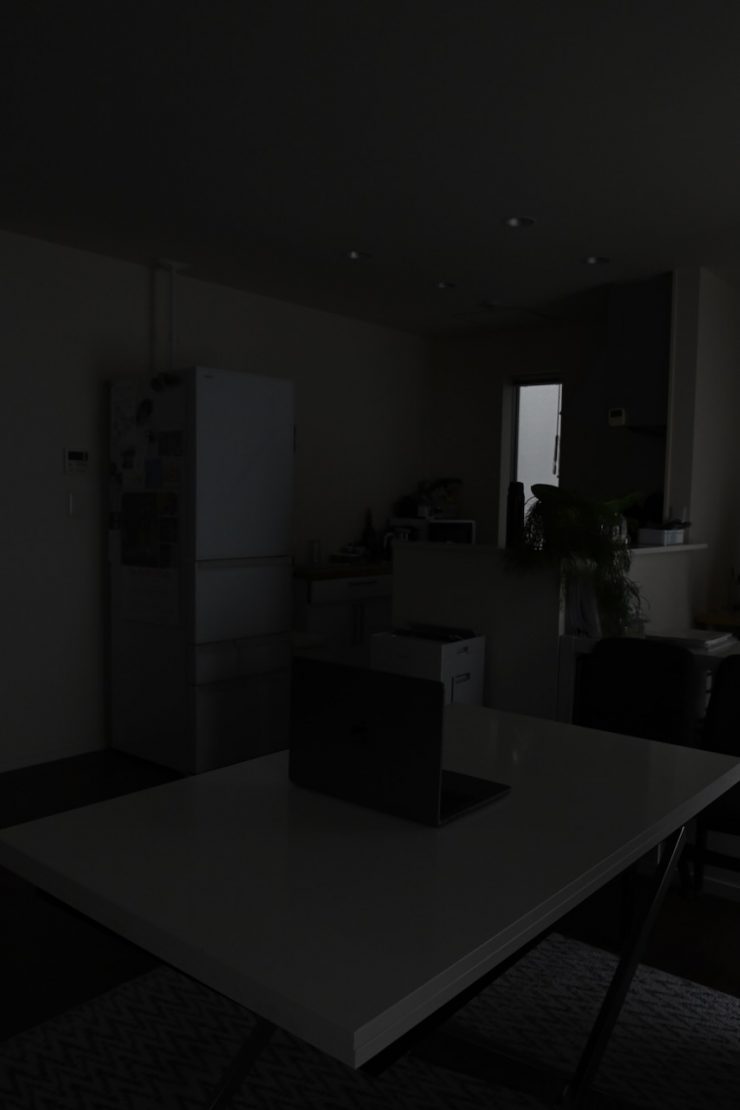
Light Off
Above, you can see images where I punched the light directly into the ceiling with its reflector. I have kept the camera settings the same for all of the shots.
I found that by using a softbox, you could create a very soft lighting source without needing to punch it through a diffusion screen. This makes it a very quick and easy light to use for interview situations or for any scenario where you need a soft light.
With a 460W power draw, there is plenty of output for interview situations in controlled environments, but it is nice to have that extra punch for other shooting scenarios. If you are looking primarily for an interview light, then this light will certainly be more than up to the task.
I also tried the light with a DoPChoice Octa 3 softbox with two layers of diffusion, and then I punched it through a 6 x 6 frame with silent grid cloth. The light was around 3m / 9.9′ from where I was sitting. There are very few COB lights on the market of this size that would be able to do this and still get plenty of light on the subject.
The light has a ton of output, and this is arguably one of its biggest selling points.
Fresnel
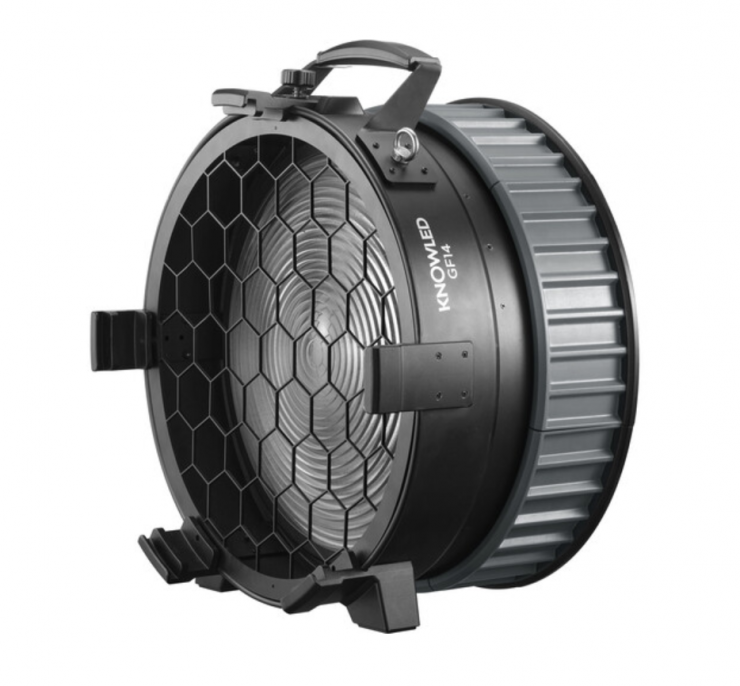
If you want a Fresnel to use with the M300R, Godox has the FLS8 Fresnel Lens, which retails for just $159 USD.
Who is the Godox KNOWLED M300R aimed at?
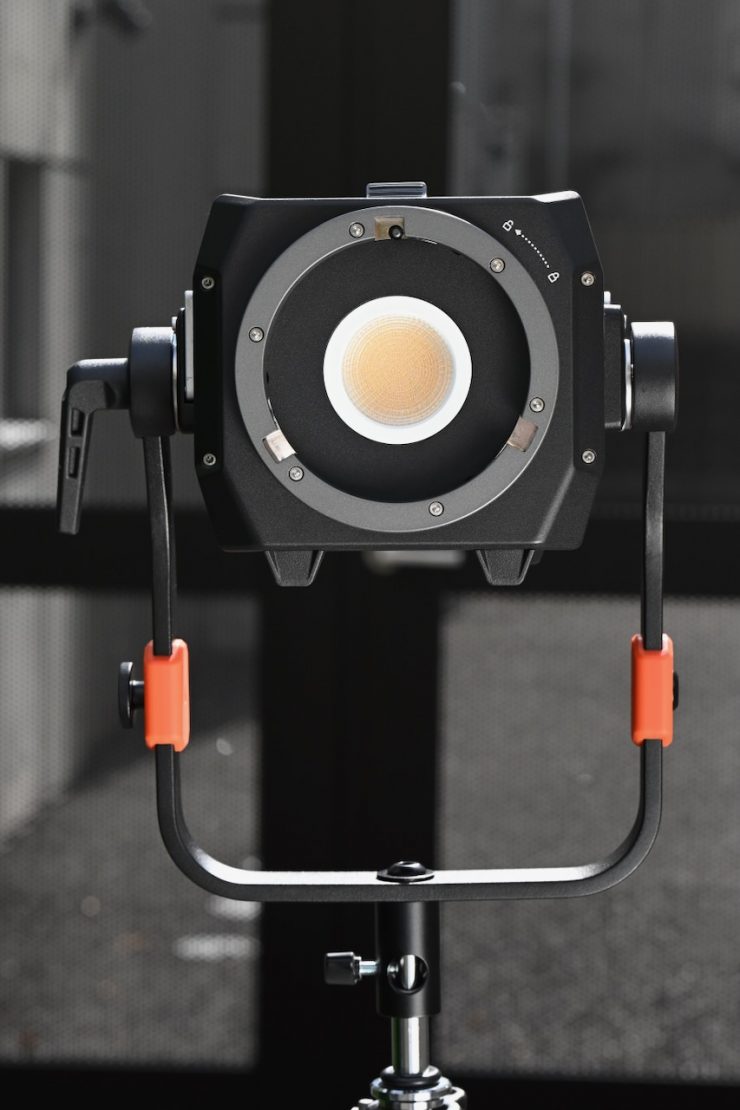
This is a compact, yet powerful fixture that could be used for lots of different applications, by lots of different people. However, it is pretty clear that it is being targeted at professionals in the TV and film industry.
Its price arguably makes it appealing to mid- to high-end owner-operators who are looking for a full-color fixture with high output. The ability to use the light as a soft source, hard source, or anything in between makes it an appealing option.
Price & Availability
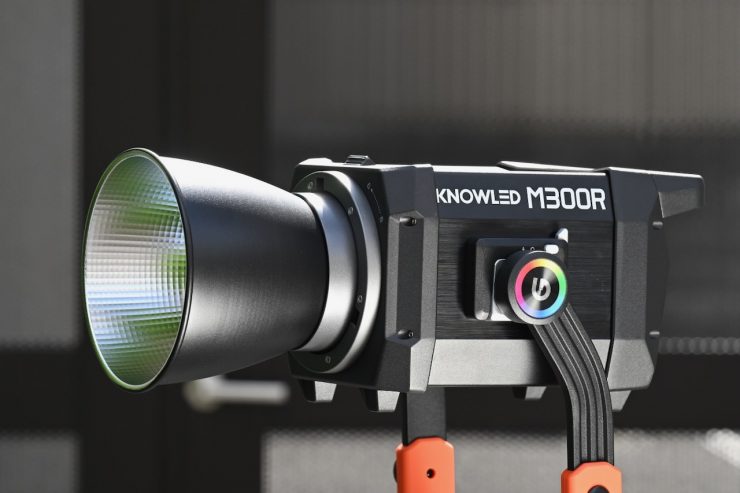
The Godox KNOWLED M300R RGB LED Monolight (Travel Kit) retails for $1,119 USD, which makes it fairly competitively priced with some of the competition.

Competition
The main competition arguably comes in the form of the Nanlite FC-500C and the Aputure STORM 400x.
Below, you can see how the price compares to some of the competition. I have included some other similar power draw spotlights, as there isn’t a lot of competition in this space.
| PRICE | |
| Godox KNOWLED M300R (Travel Kit) | $1,119 USD |
| Aputure STORM 400x | $1,059 USD |
| Nanlite FC-500C | $899.21 USD |
| Nanlite FC-500C RGB LED Spotlight with FC PowerController Kit | $1,198.40 USD |
| amaran 300c RGB LED Monolight | $455 USD |
| Nanlite FS-300C | $384 USD |
| GVM Pro SD300C | $379 USD |
| Godox Litemons LA300R | $469 USD |
The price of the Godox KNOWLED M300R is fairly comparable to the Nanlite FC-500C RGB LED Spotlight with FC PowerController Kit, or the Aputure 400x. Based on its output performance, it really stands alone in this space.
Conclusion
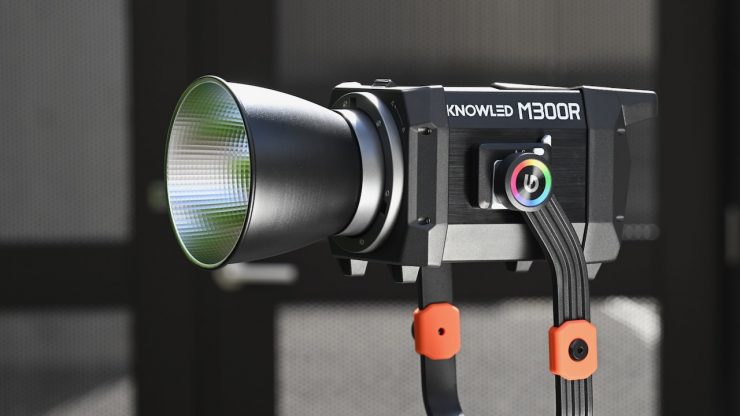
The KNOWLED M300R is another solid offering from Godox, and as I previously mentioned, its output makes it stand out from other competing fixtures; however, this does come at a cost.
The build quality is good, and the weight and size make it very manageable for a light with this power draw. The fixture has a ton of output, and the CCT accuracy is very good when using the light open face. The Kelvin Vs MK-1, CC INDEX & ⊿uv scores were very good, as was the CCT accuracy when dimming the fixture.
The output is pretty consistent across the key CCT settings; however, the TLCI and SSI scores were not great, and I expected better. On the positive side, the light is capable of outputting saturated colors with plenty of punch. This is good if you need to light cycs with color, or if you’re filming music videos or other content that requires colored light.
The operating system and app are reasonably basic, but they get the job done.
I think a light of this size and power draw sort of hits the sweet spot for a lot of owner operators. Larger 600-700W fixtures can be overkill, and they are more difficult to transport and power remotely.
The M300R is worth looking at if you need a ton of output from a full-color fixture that can be run via camera batteries, but it does face stiff competition from competing fixtures.
